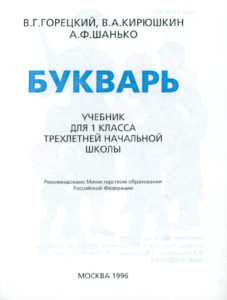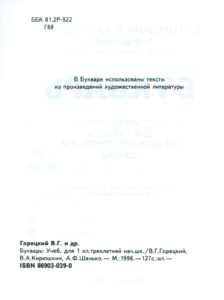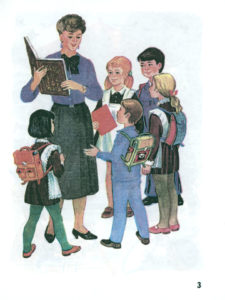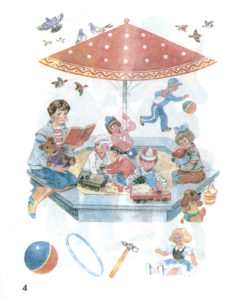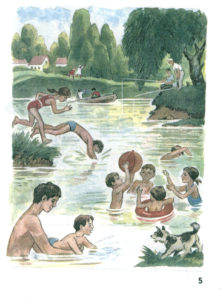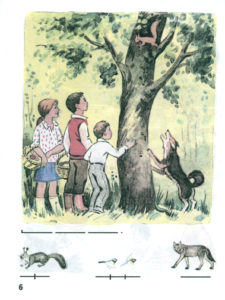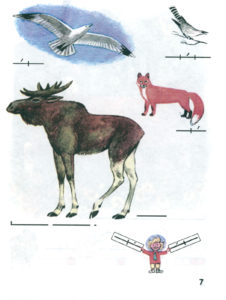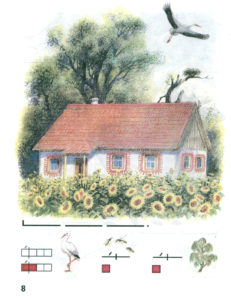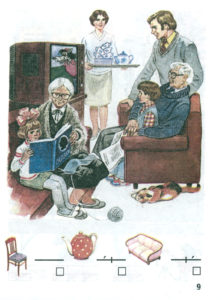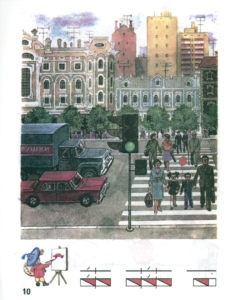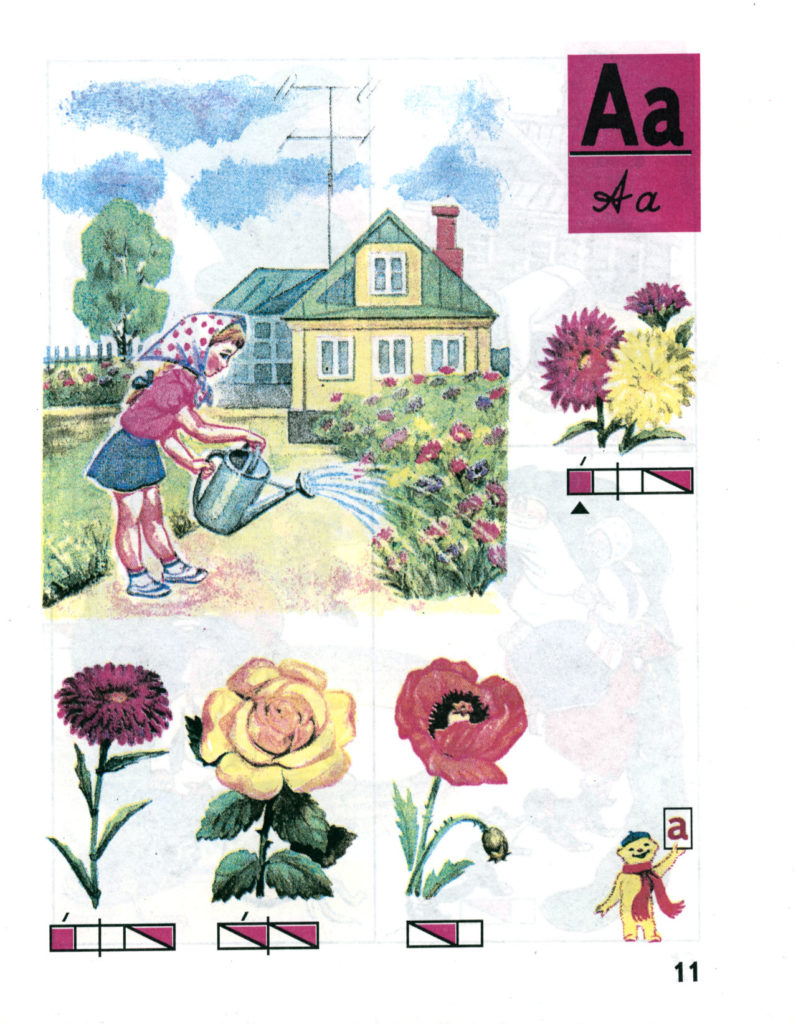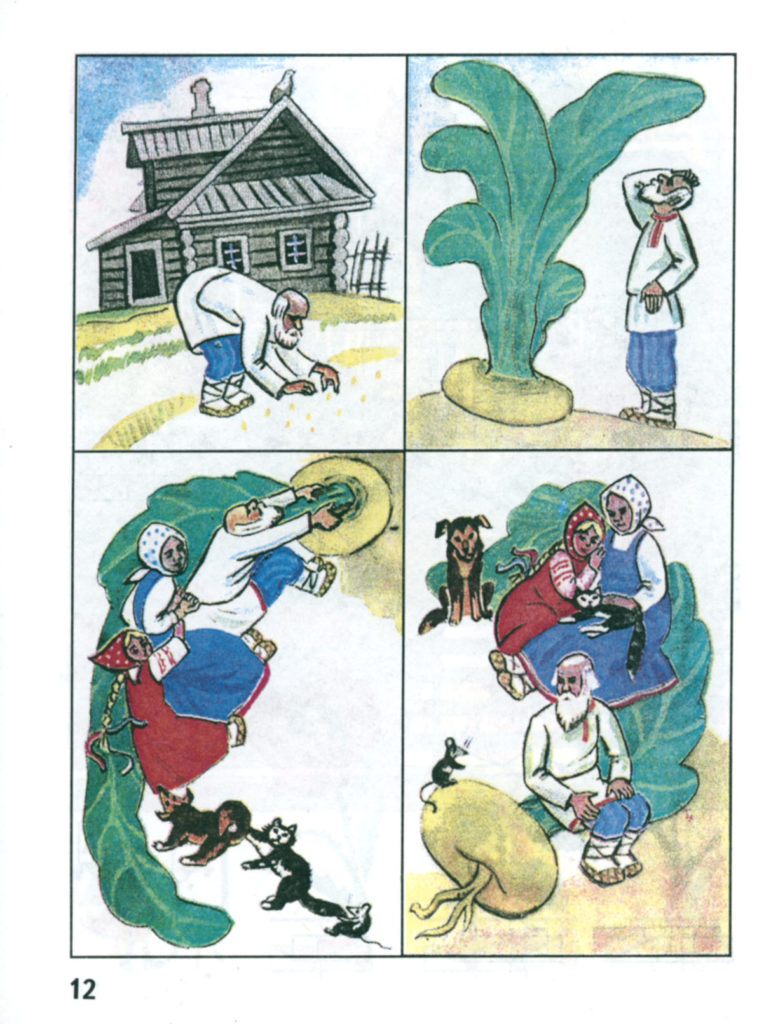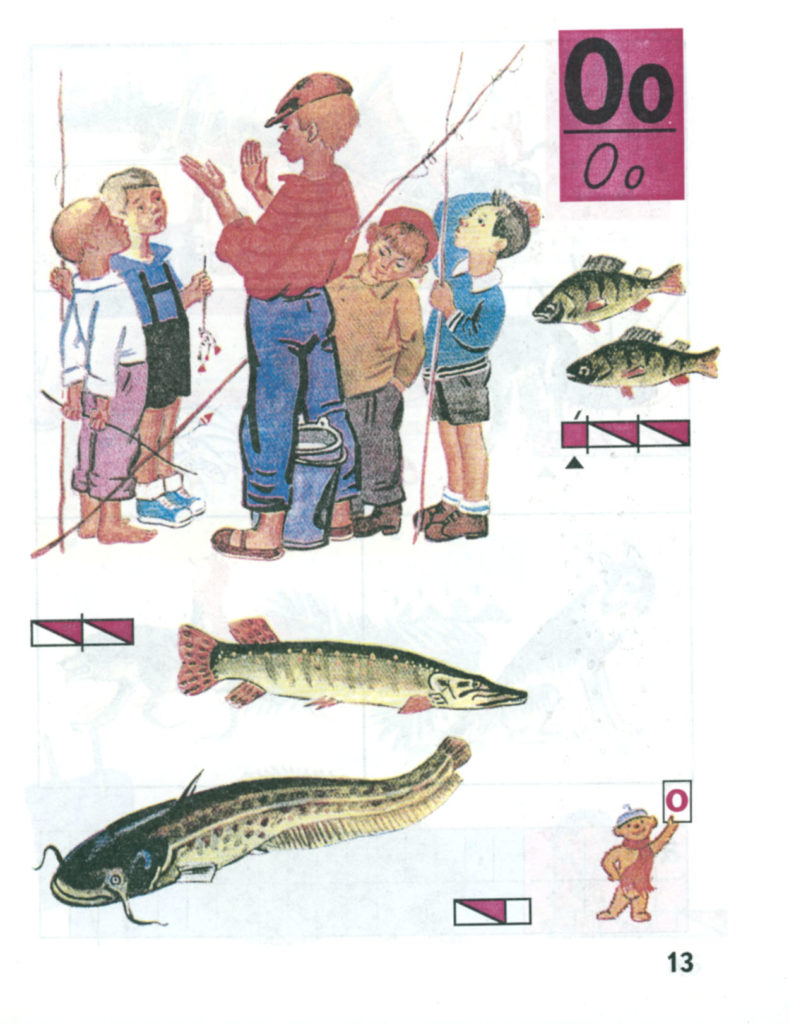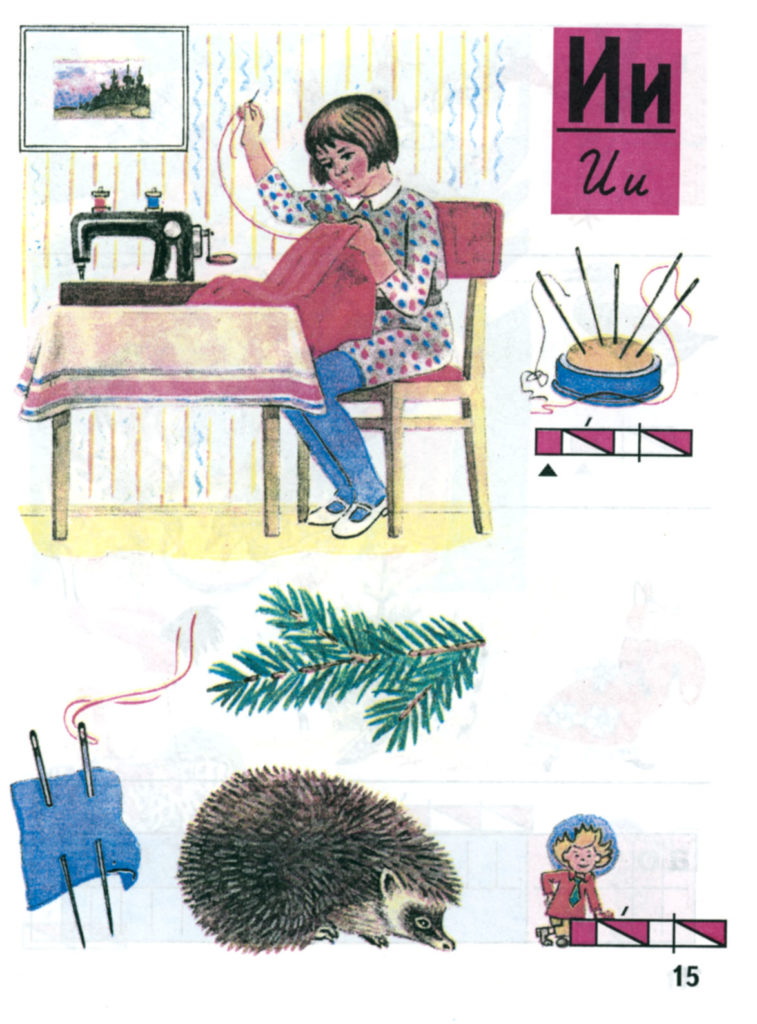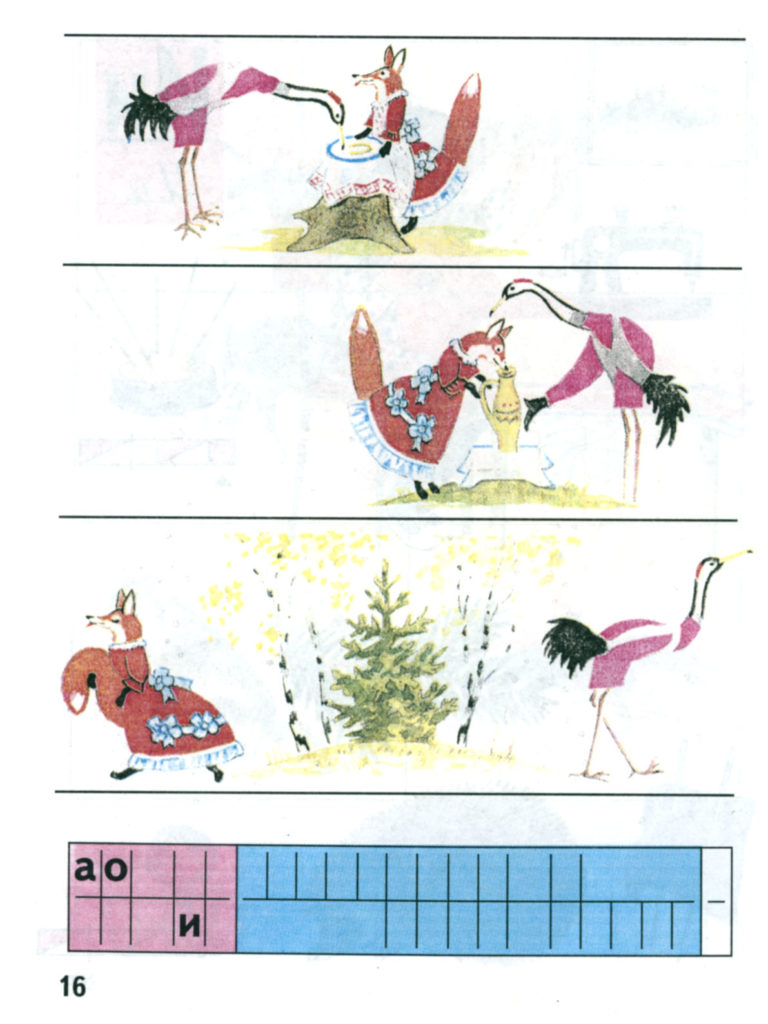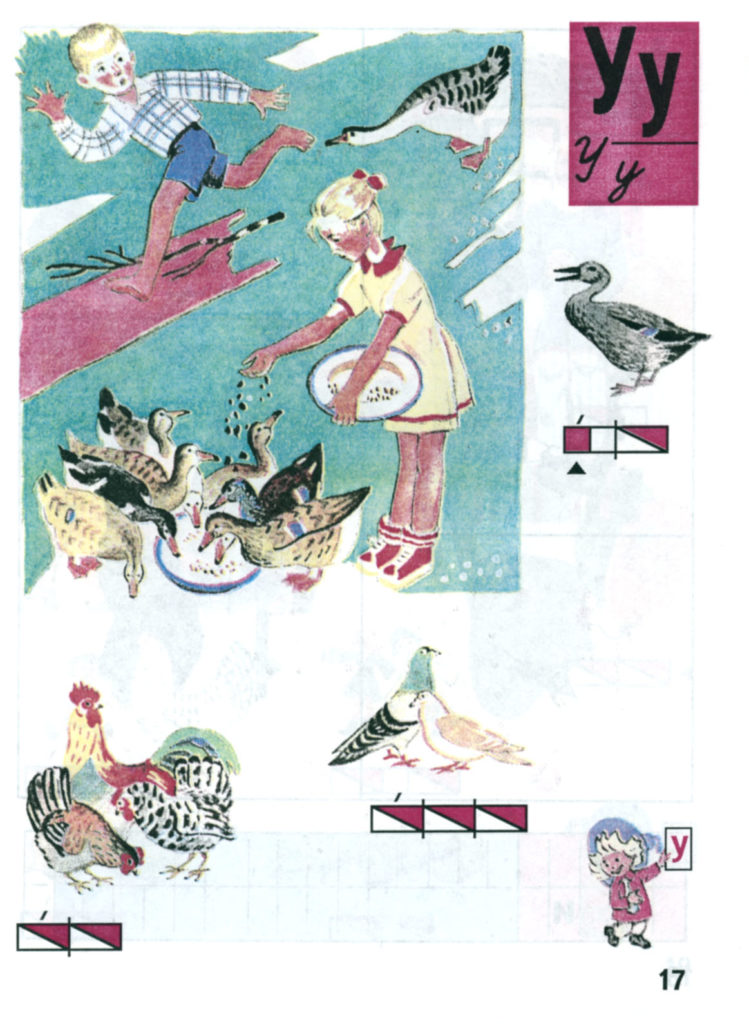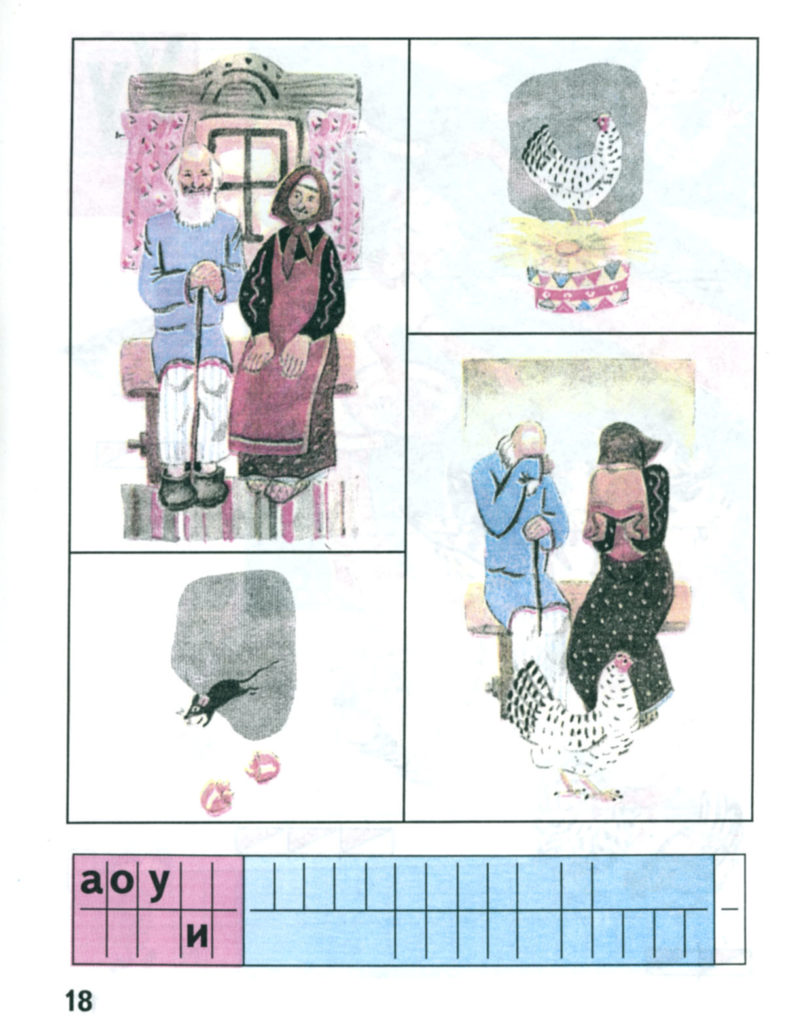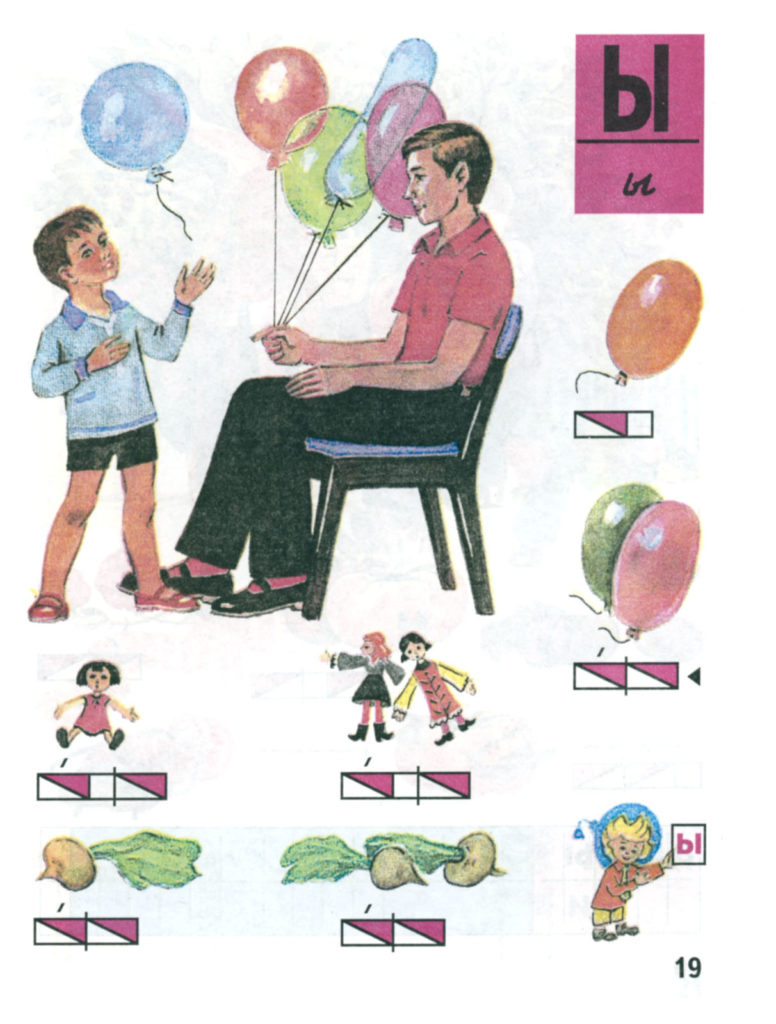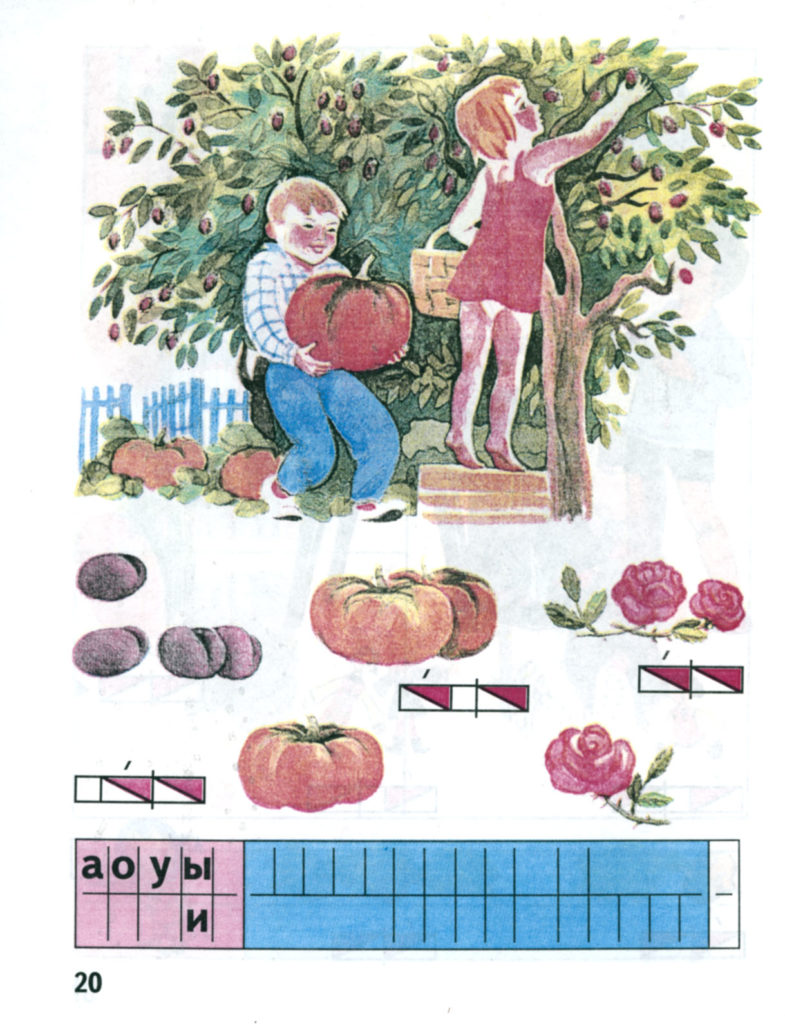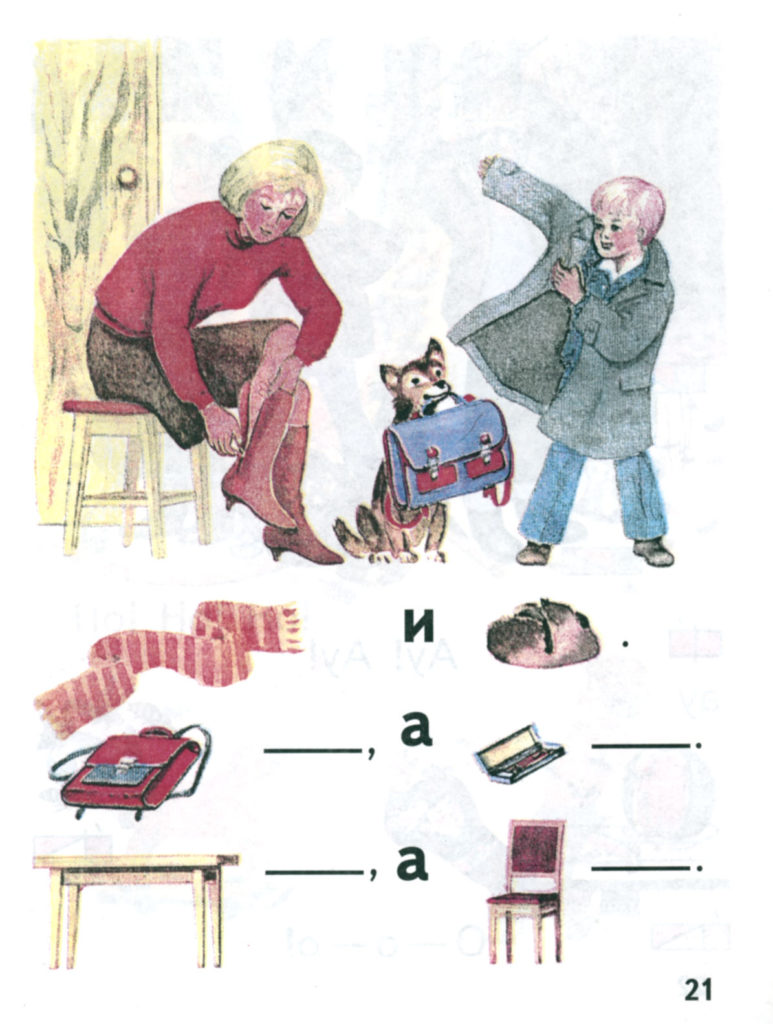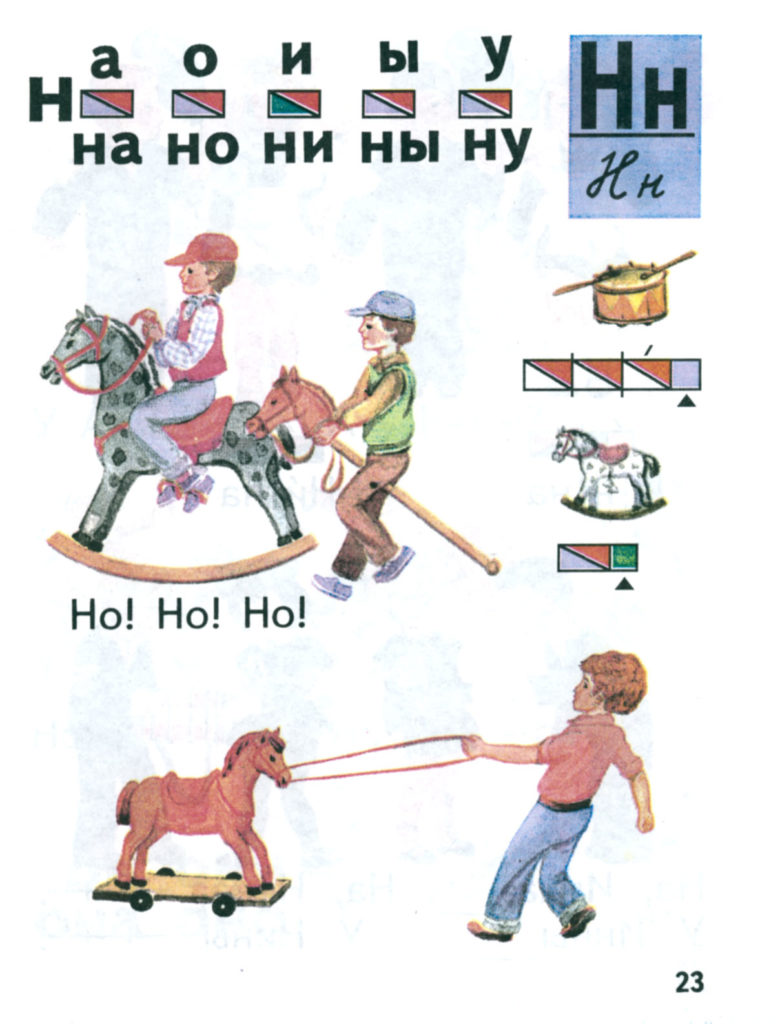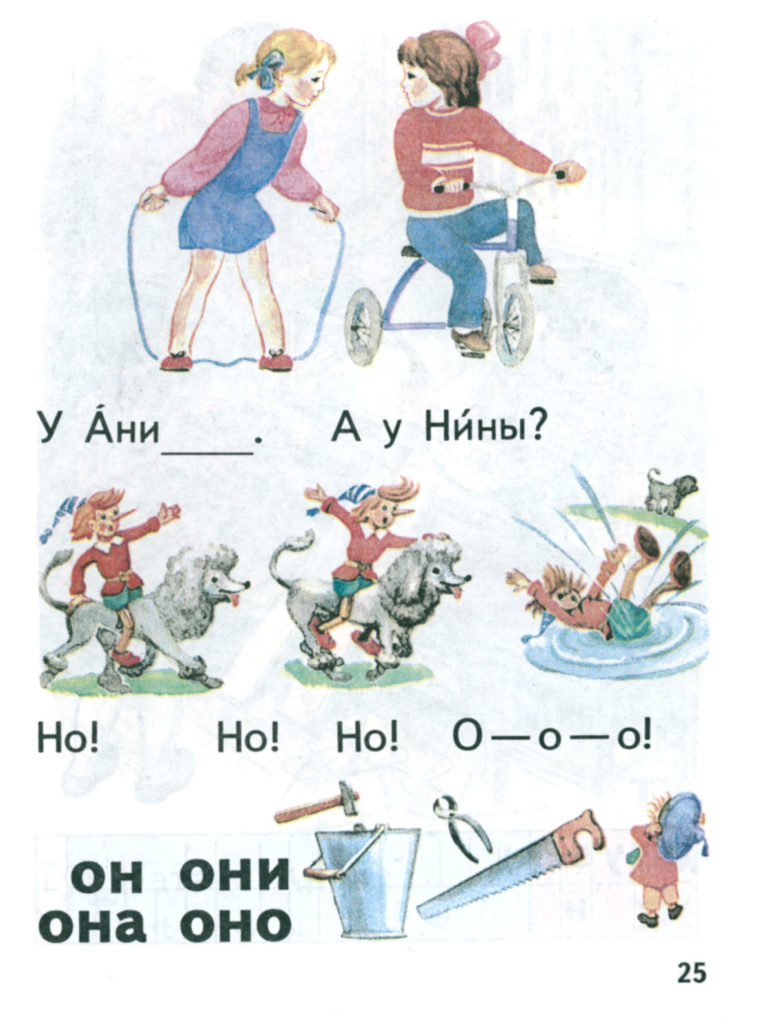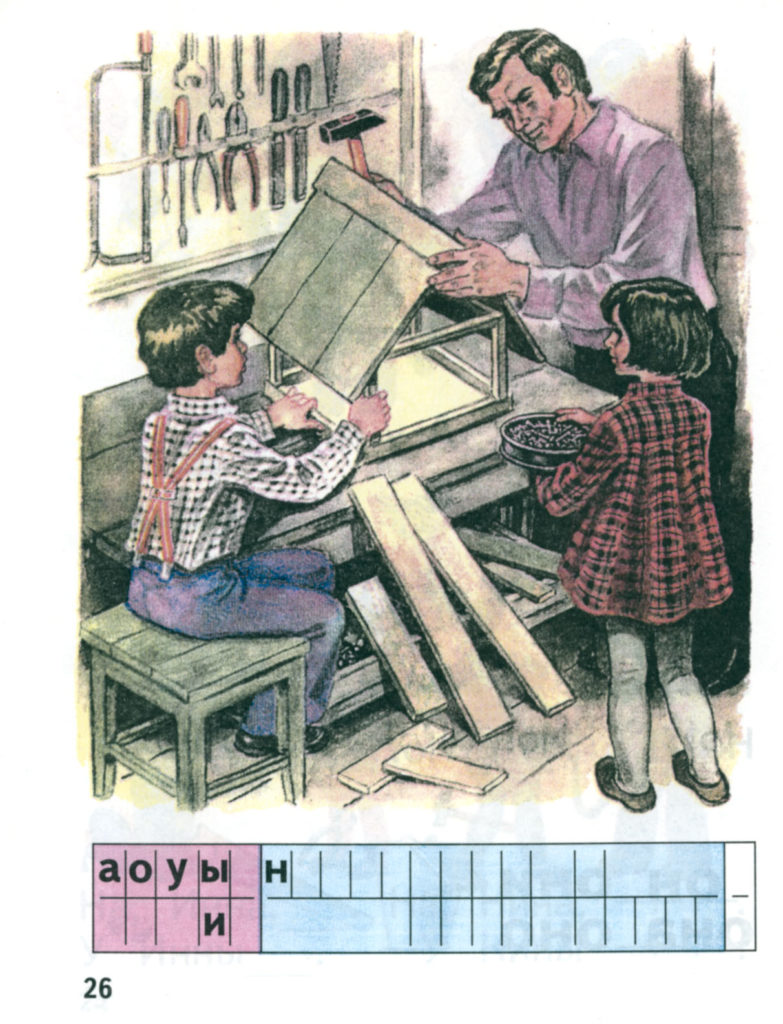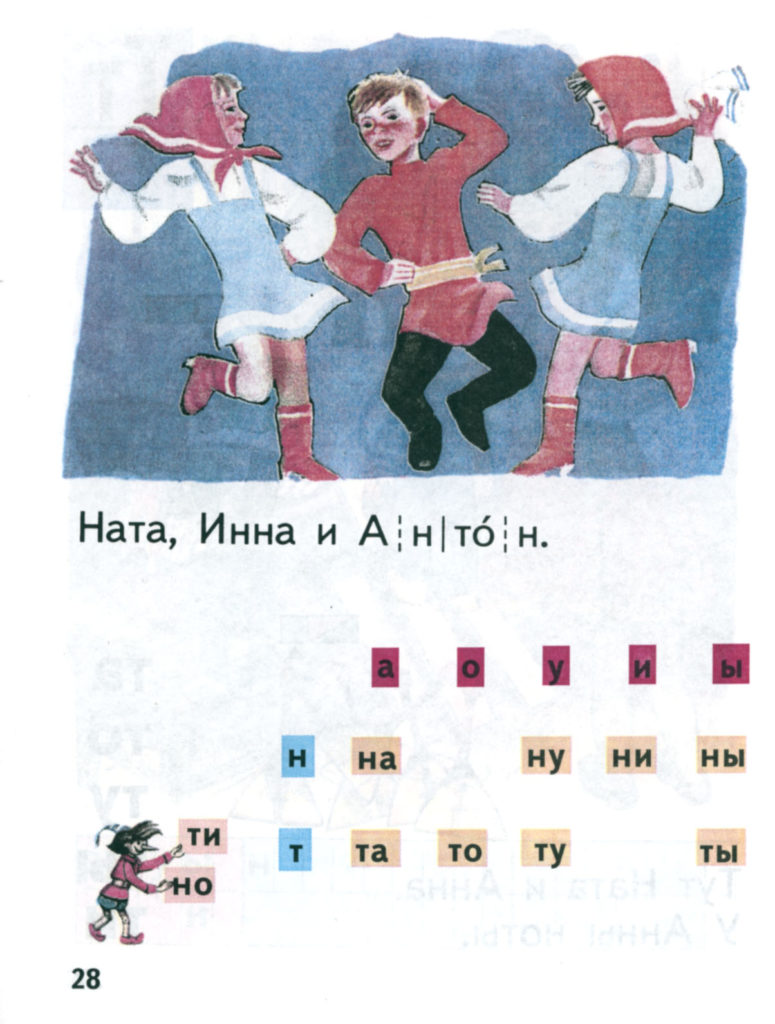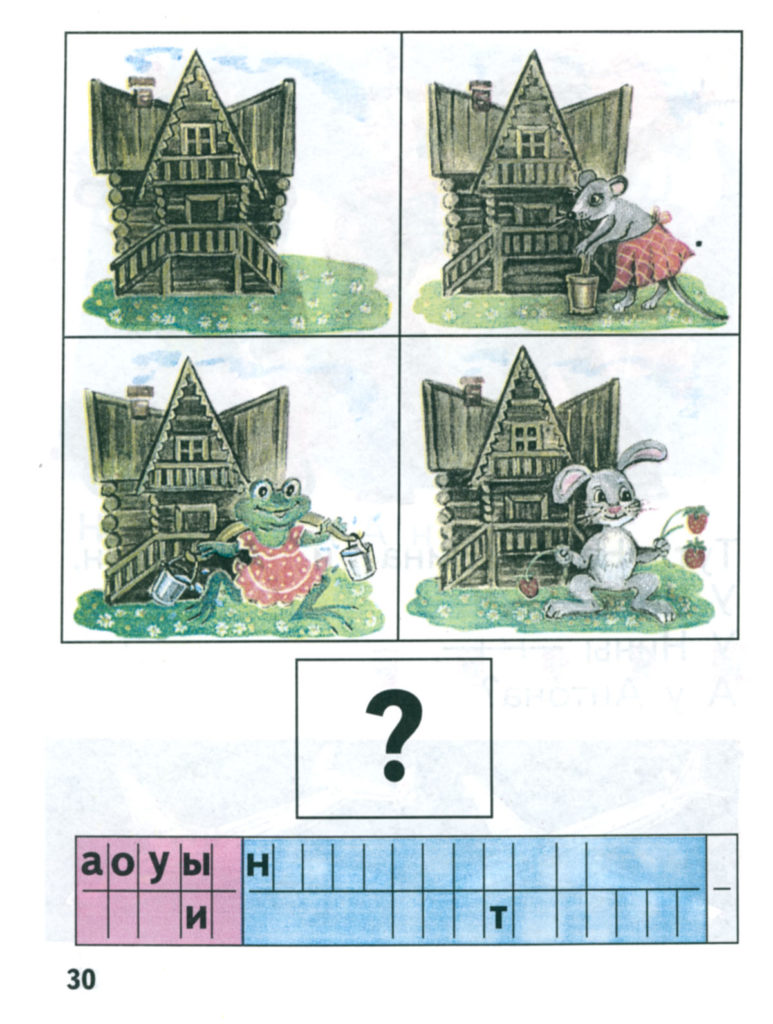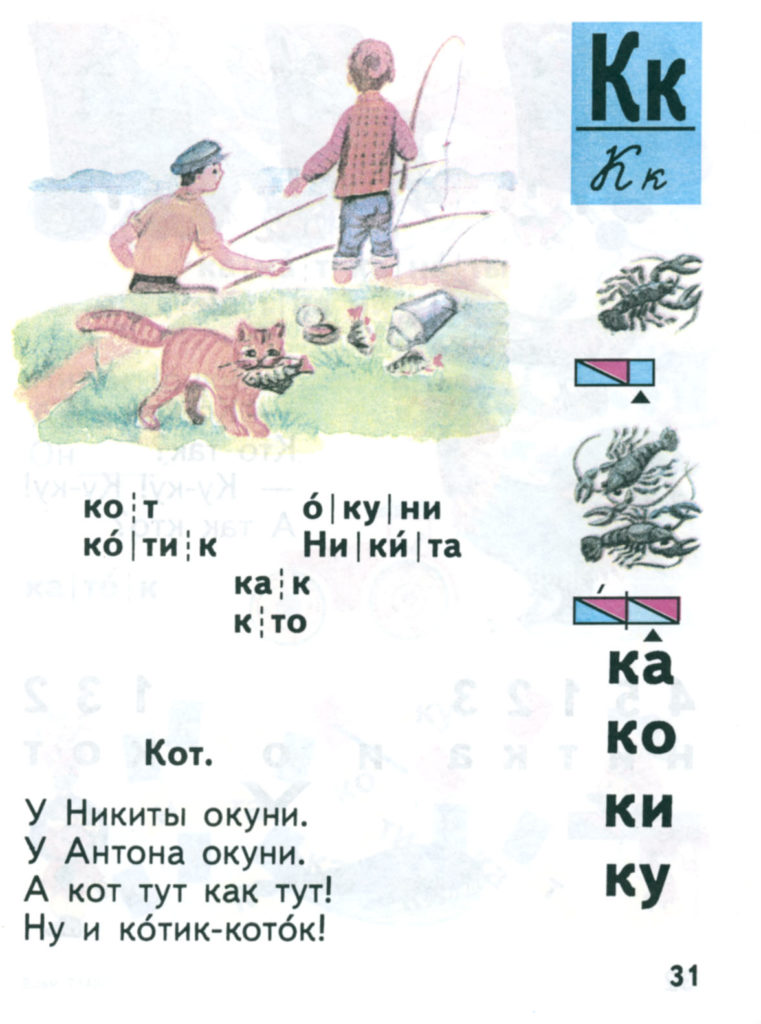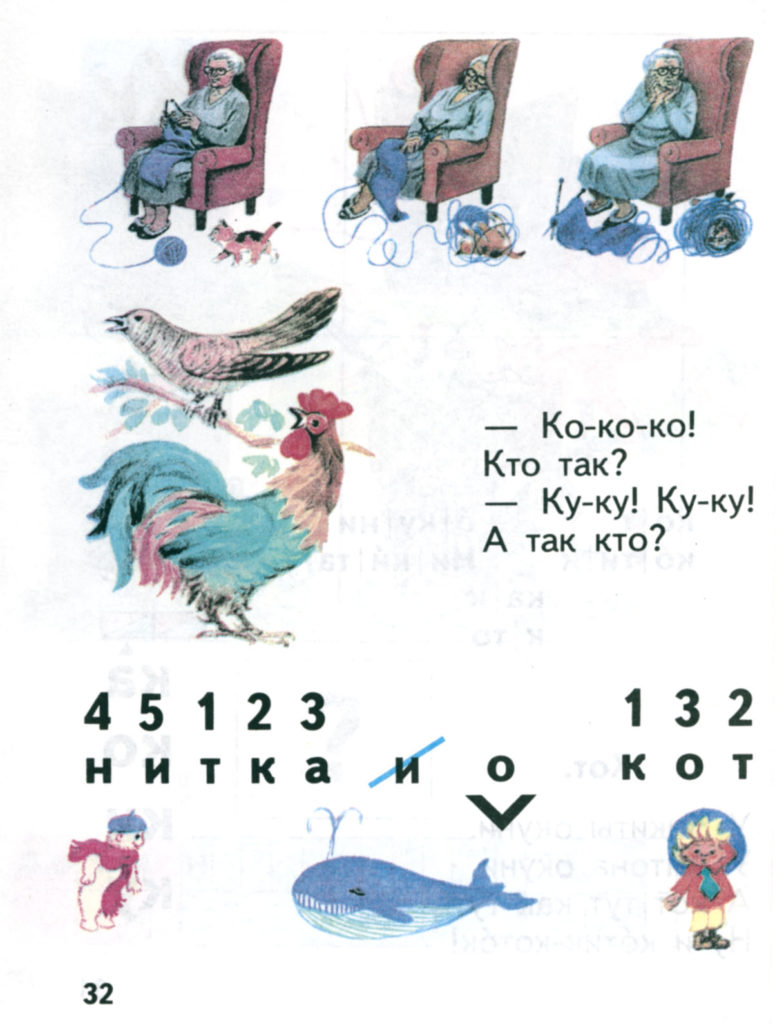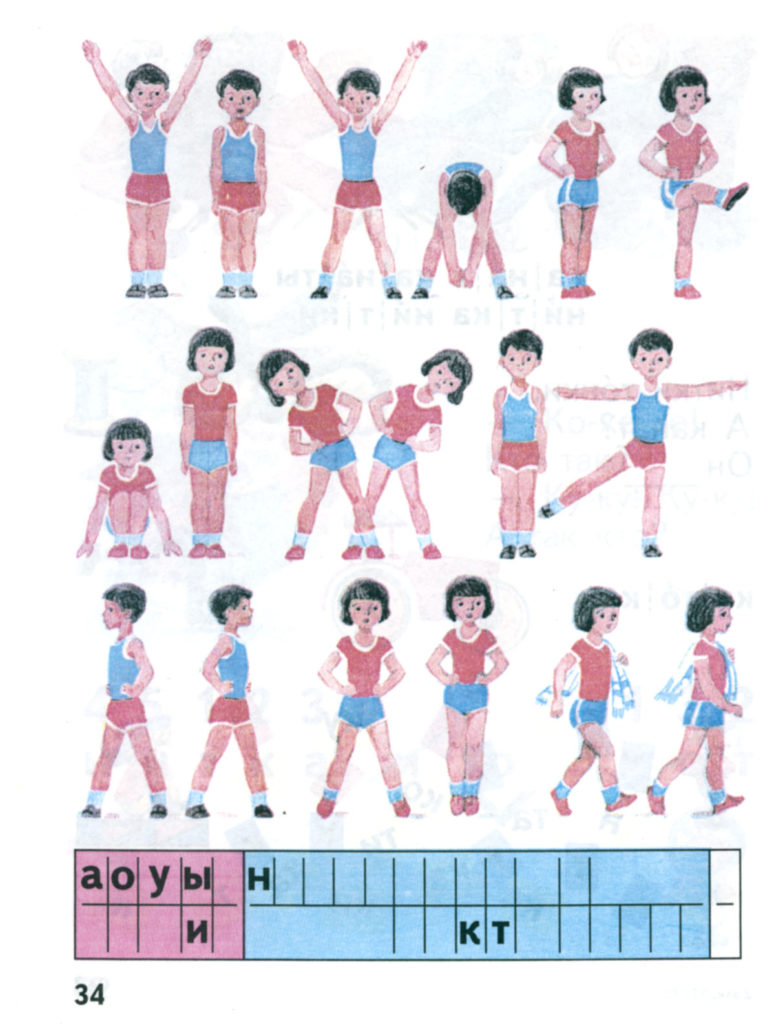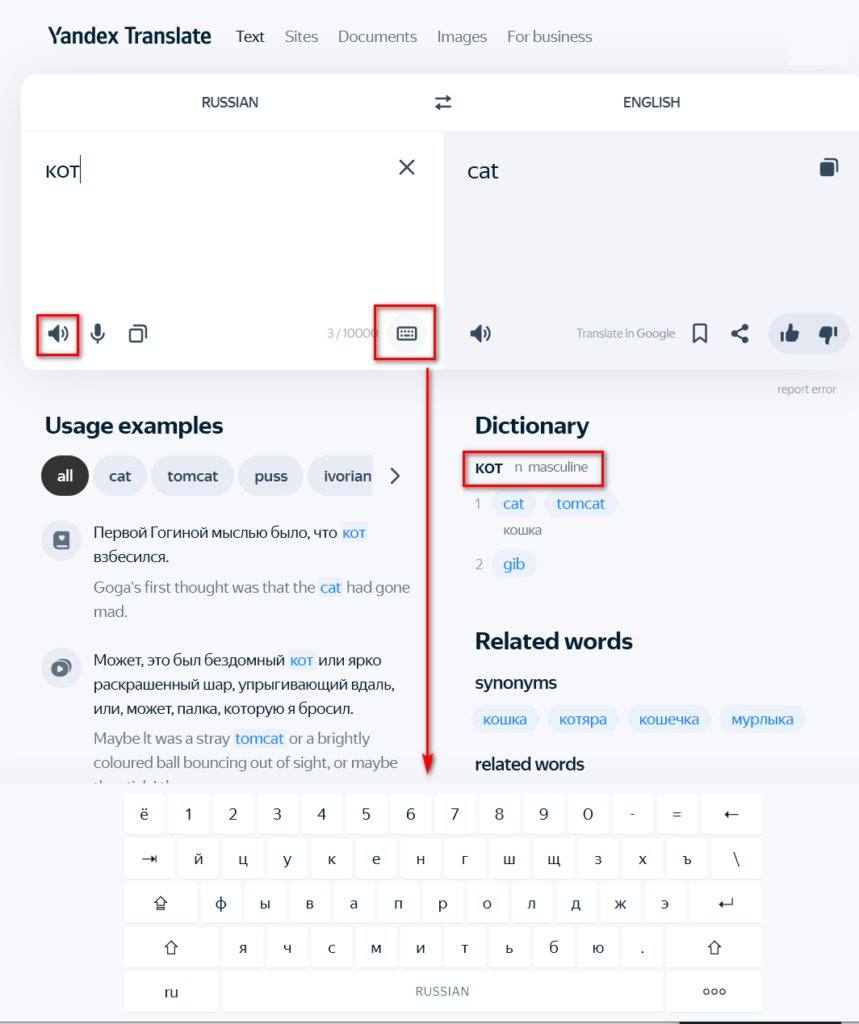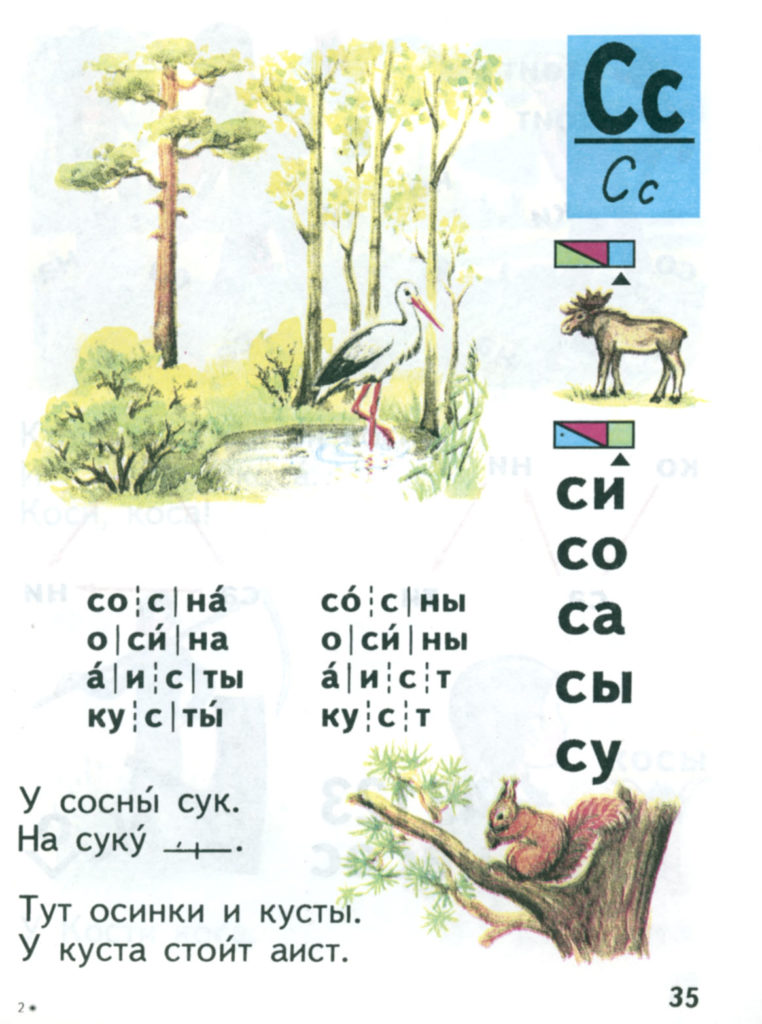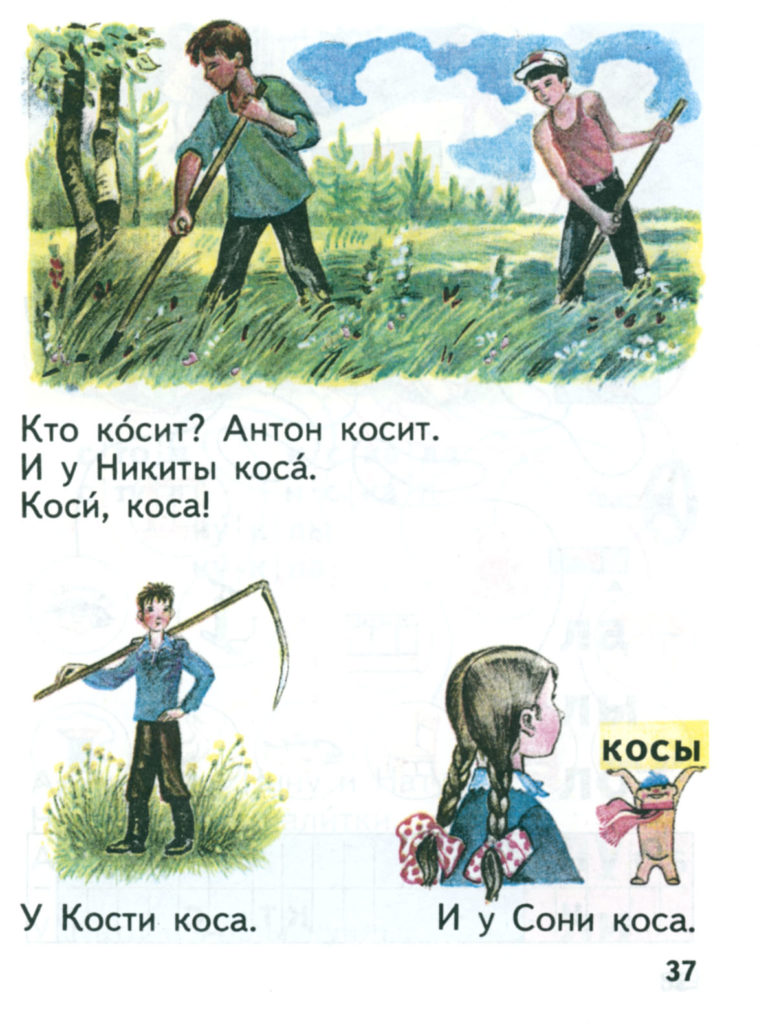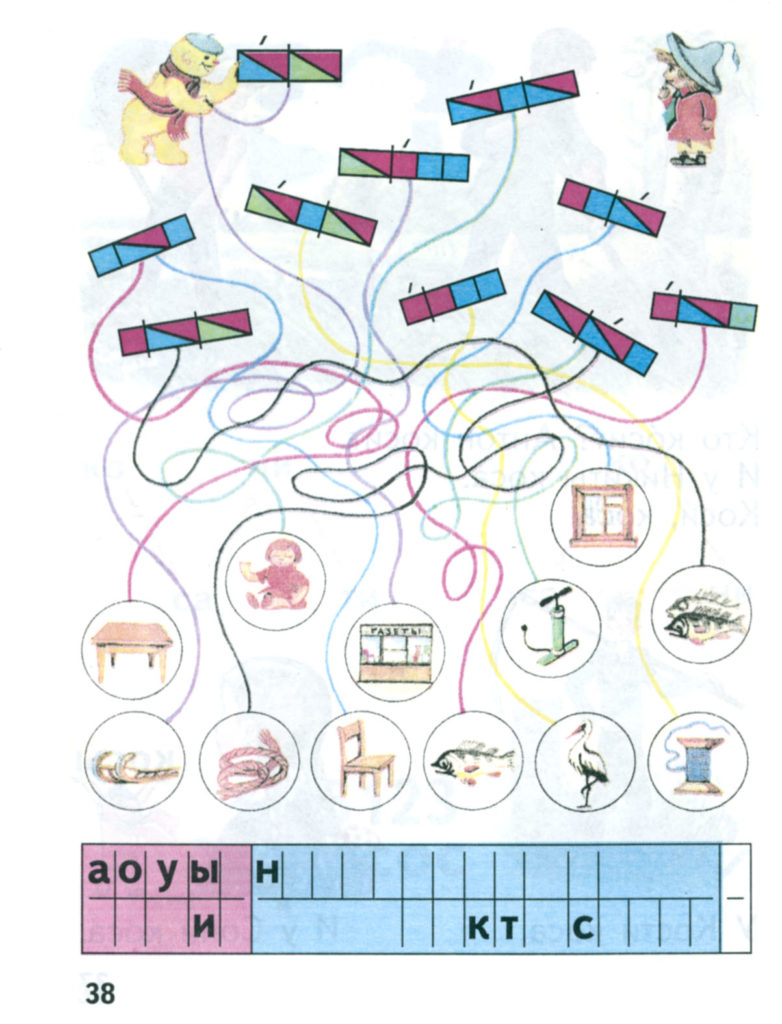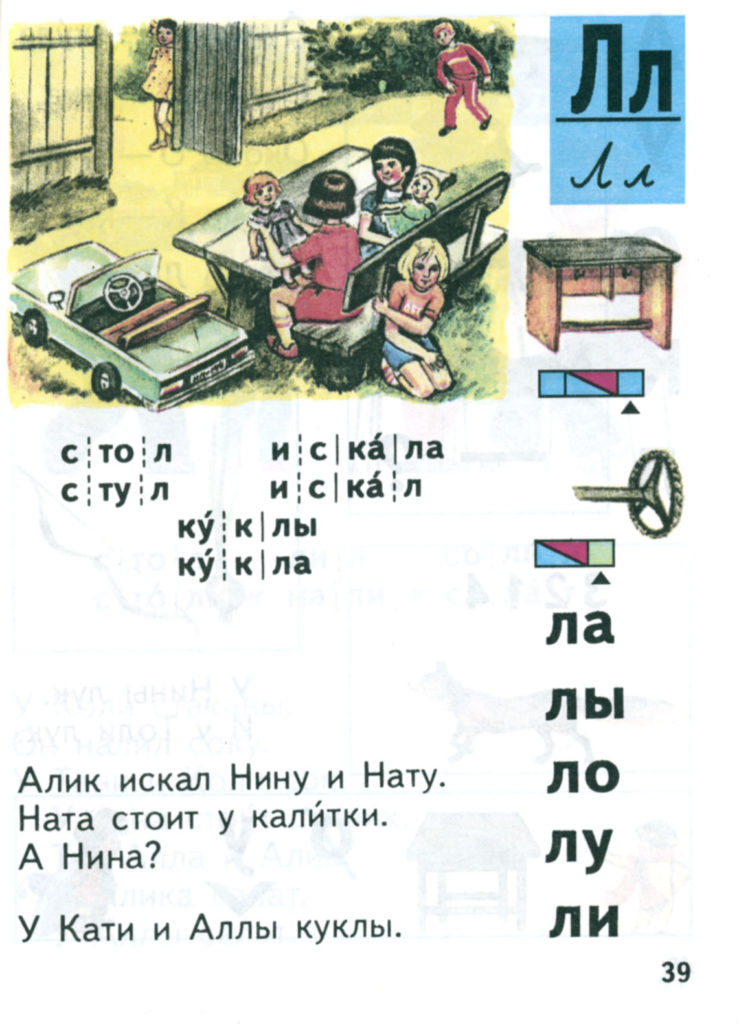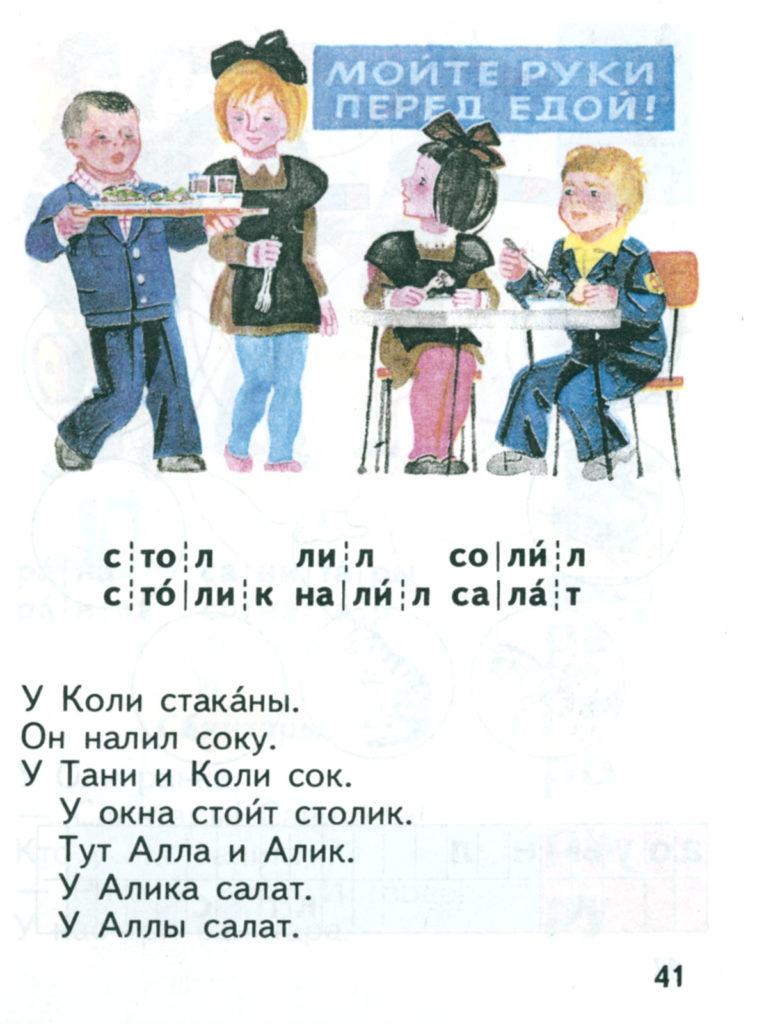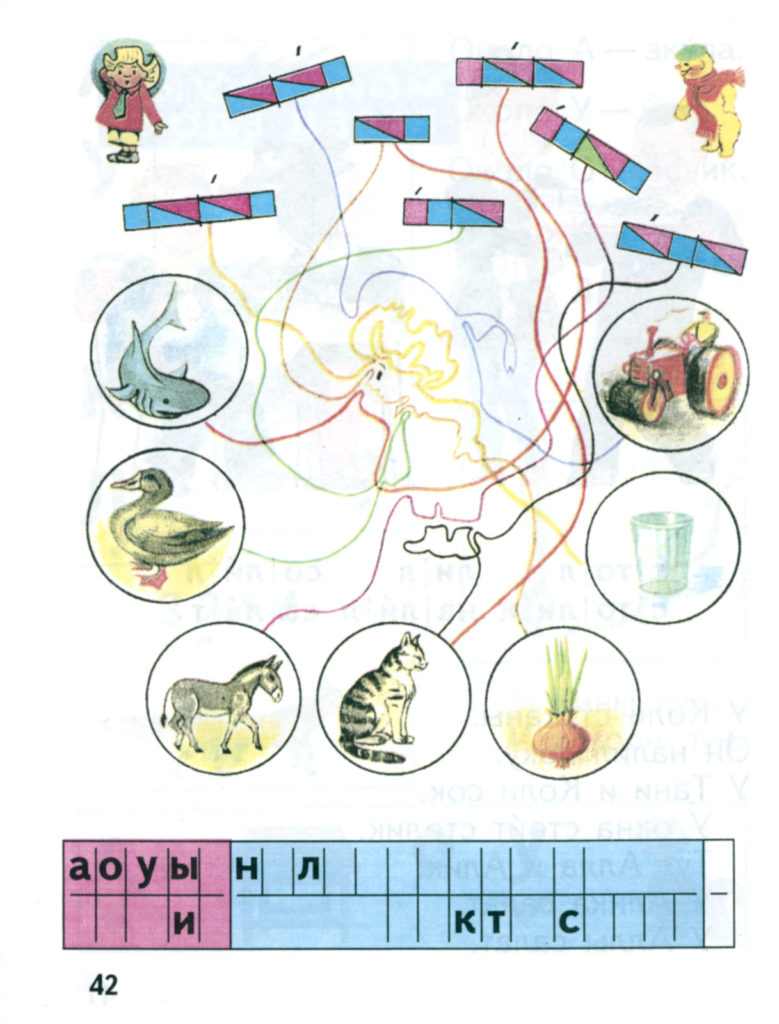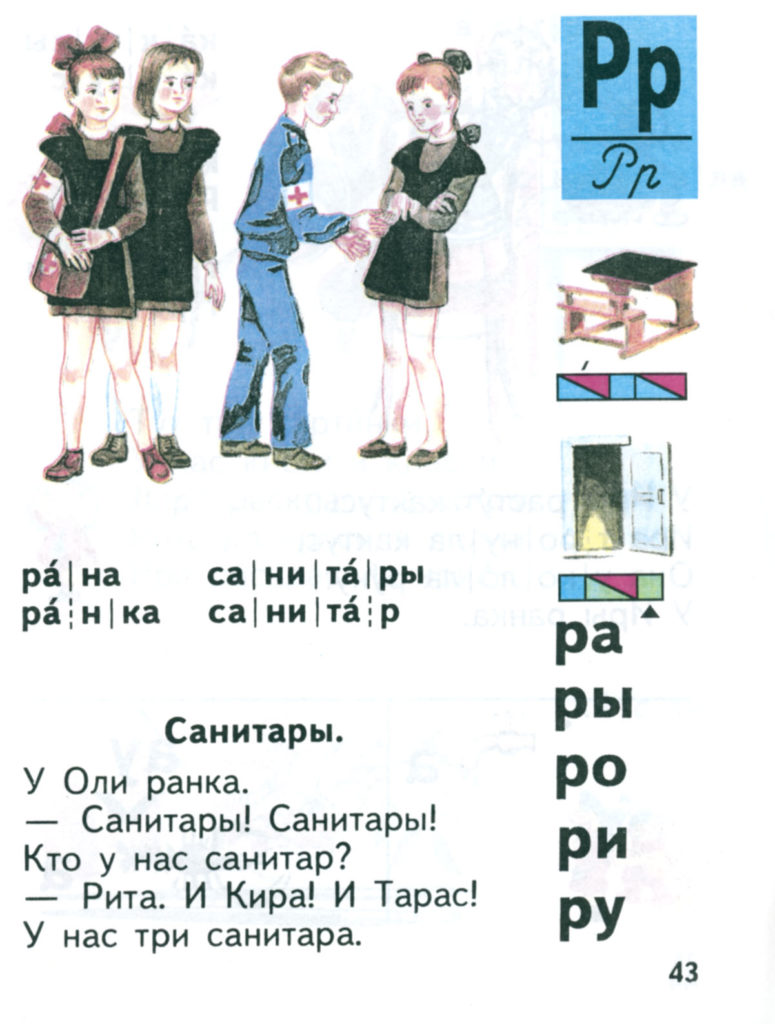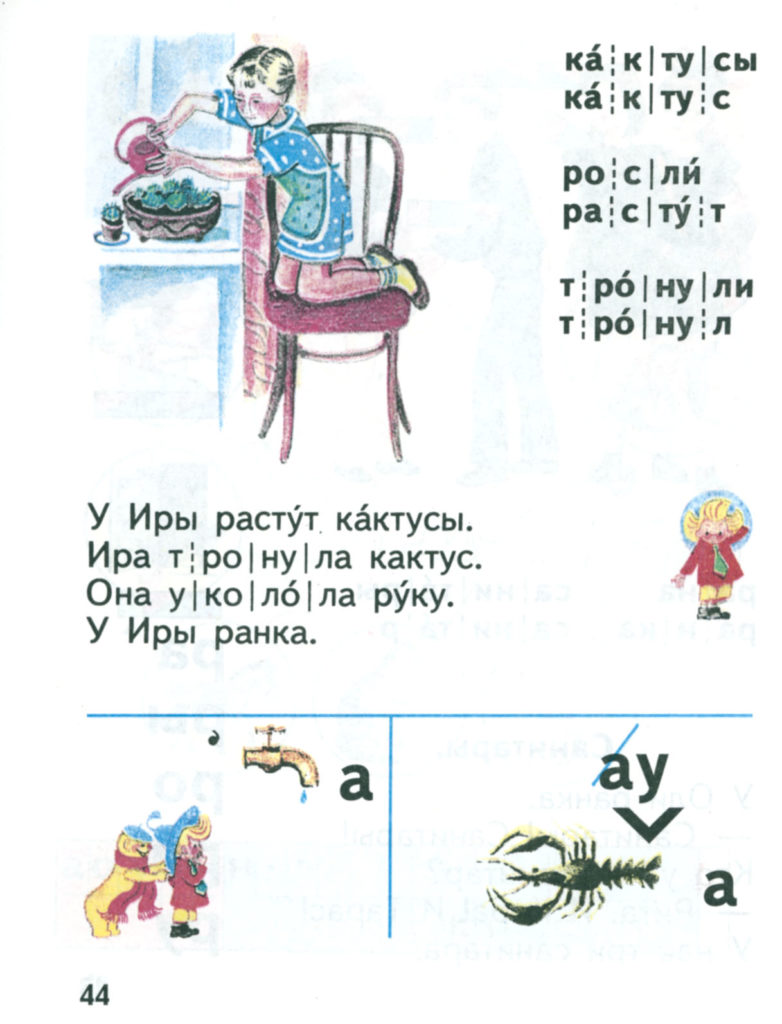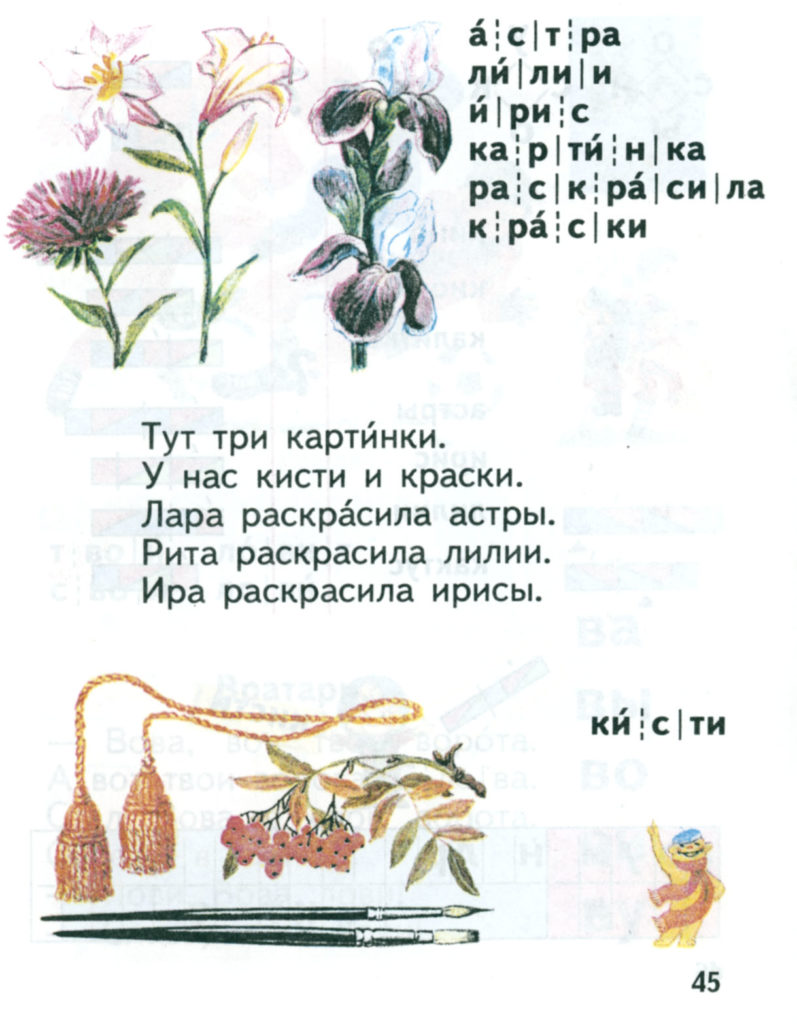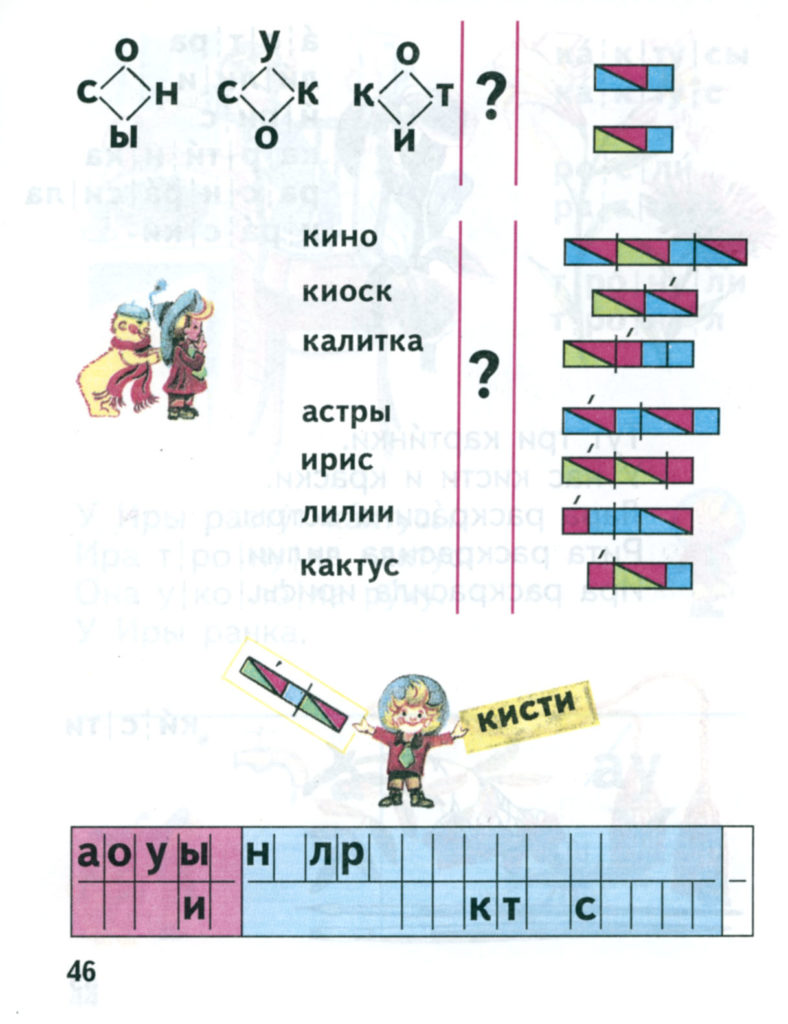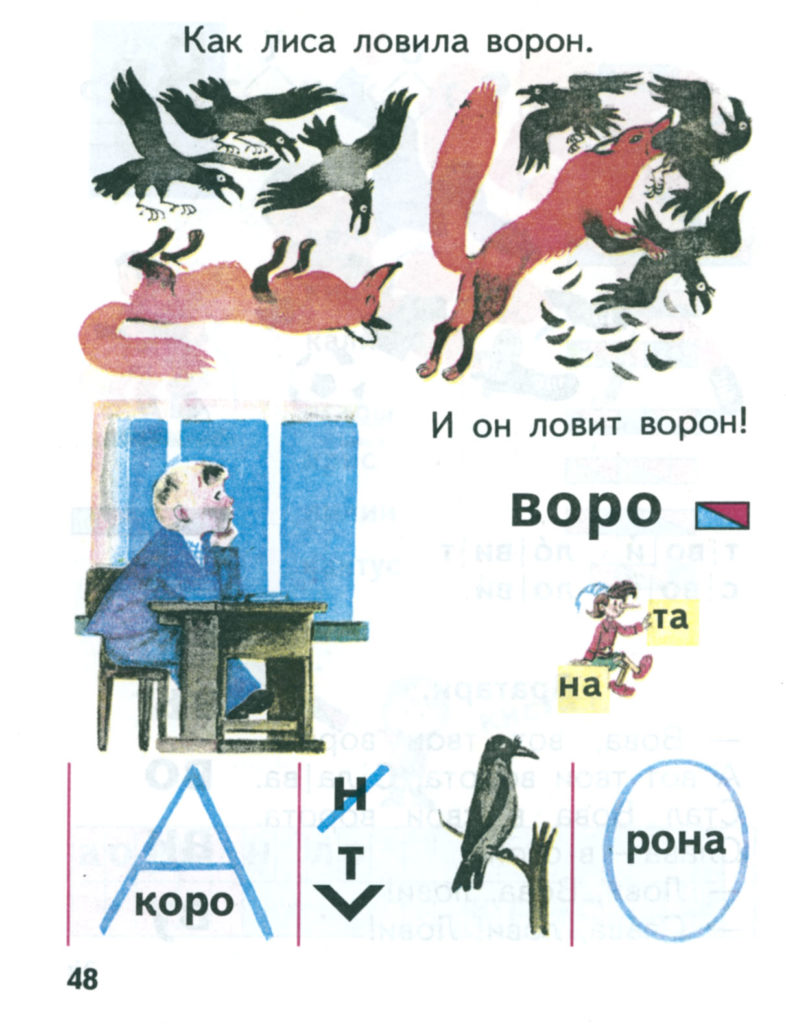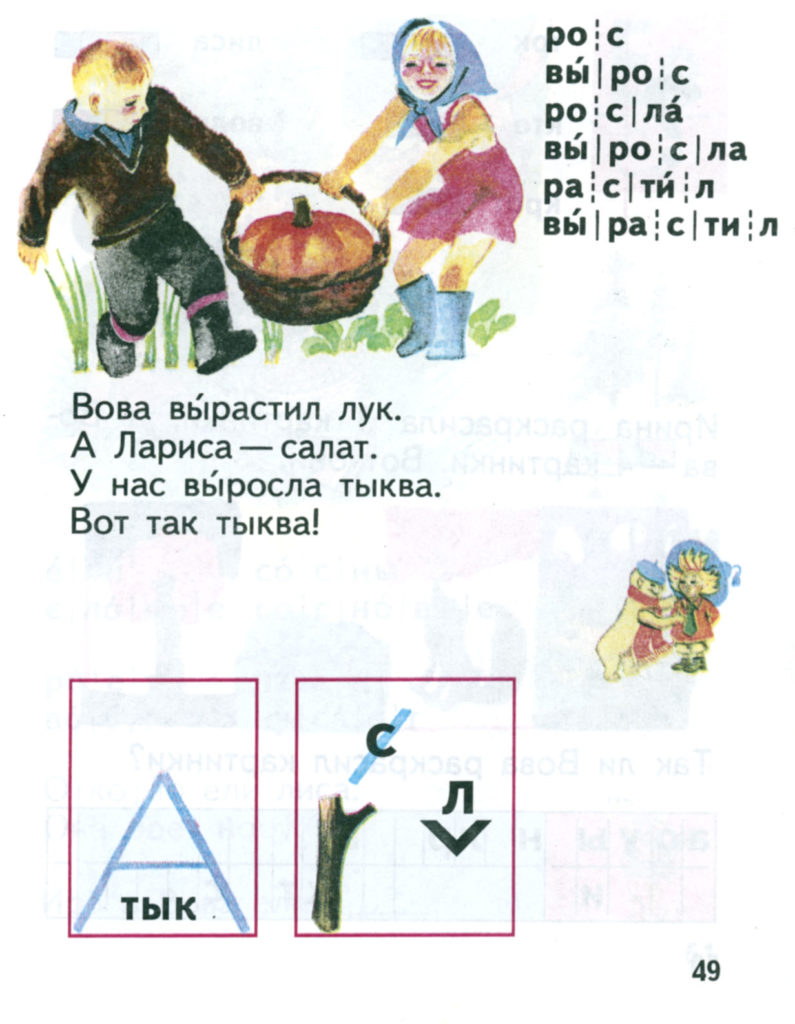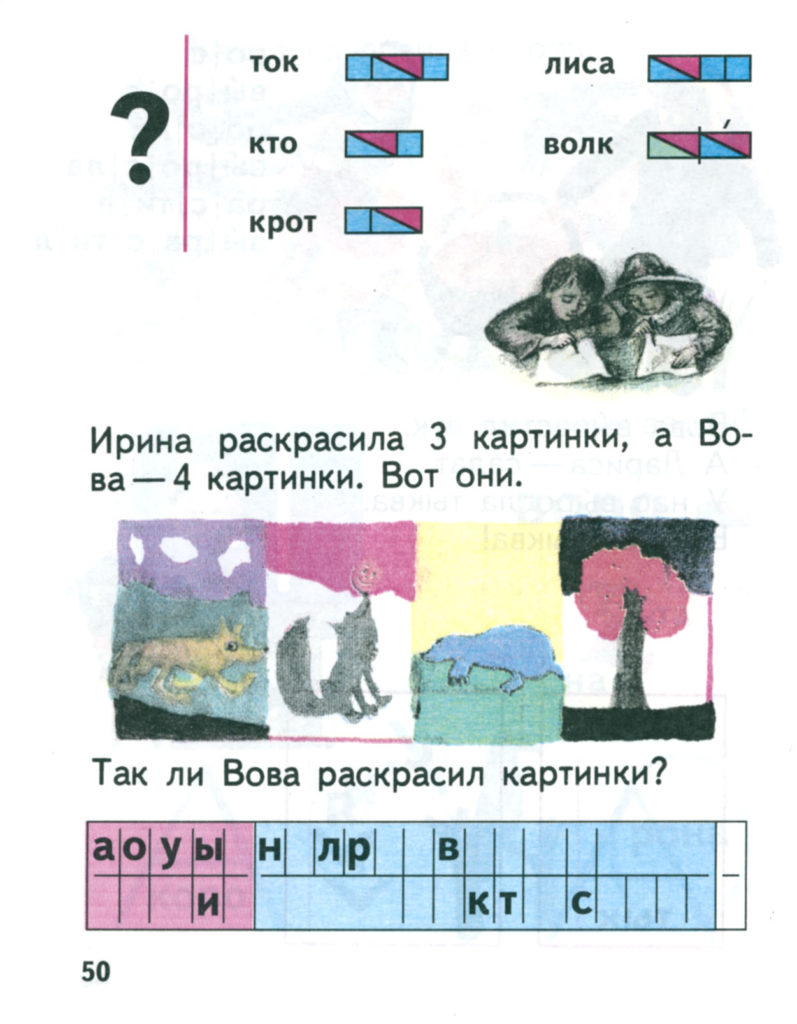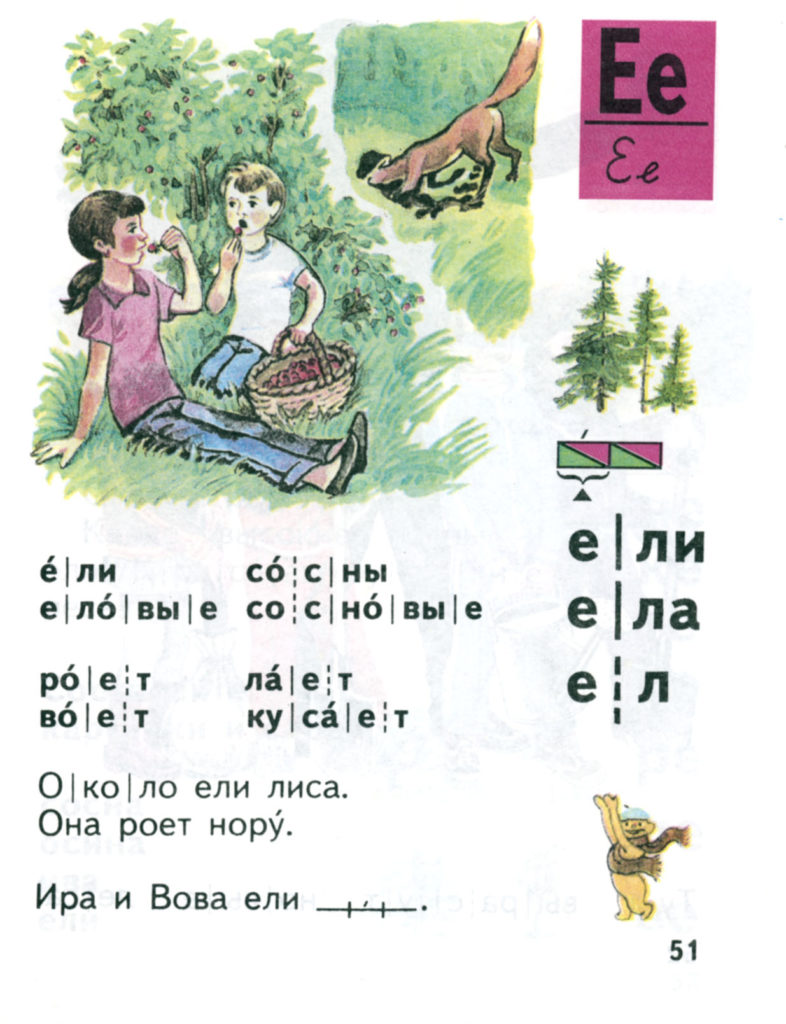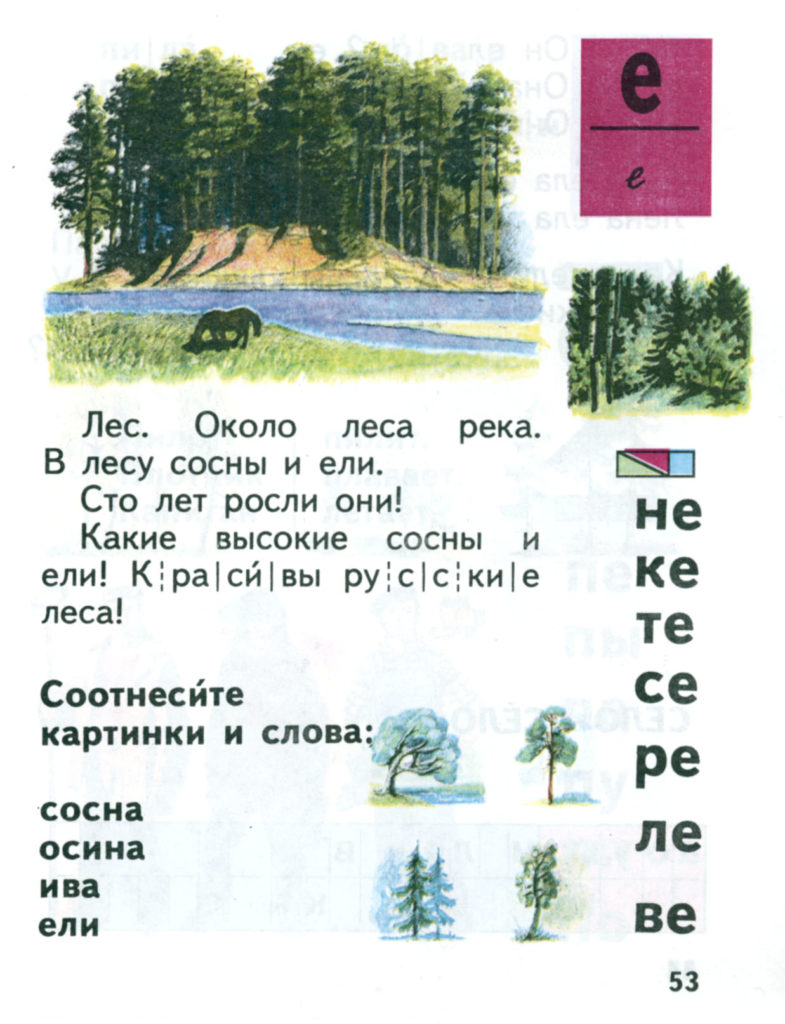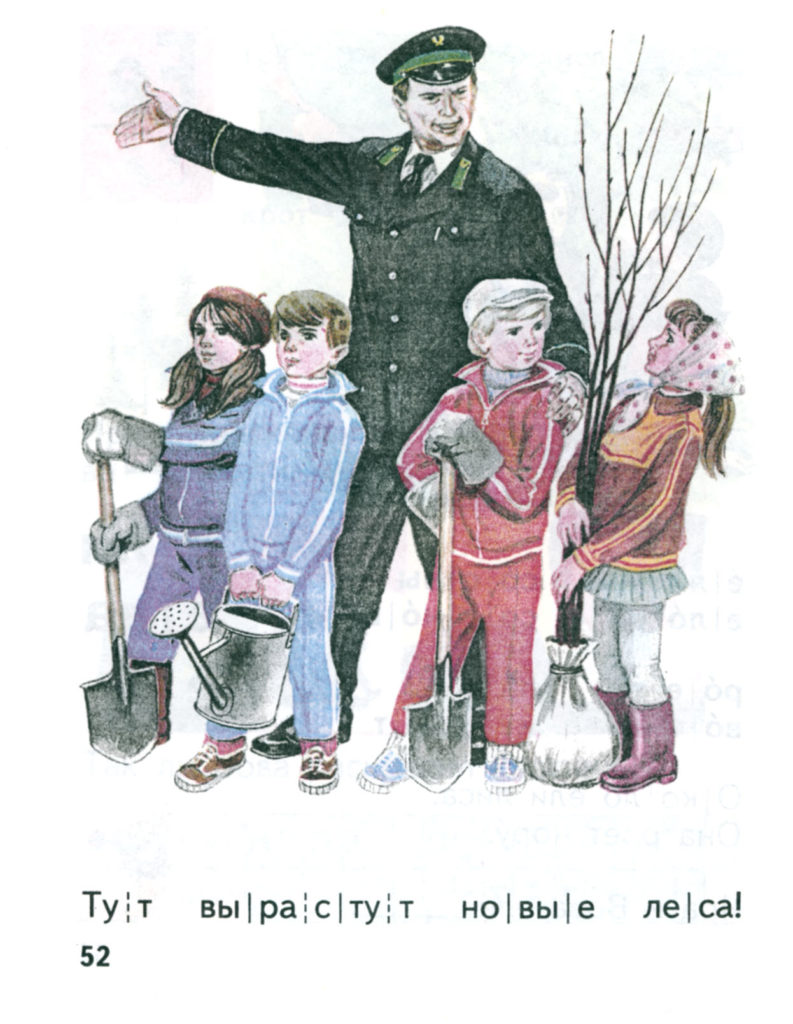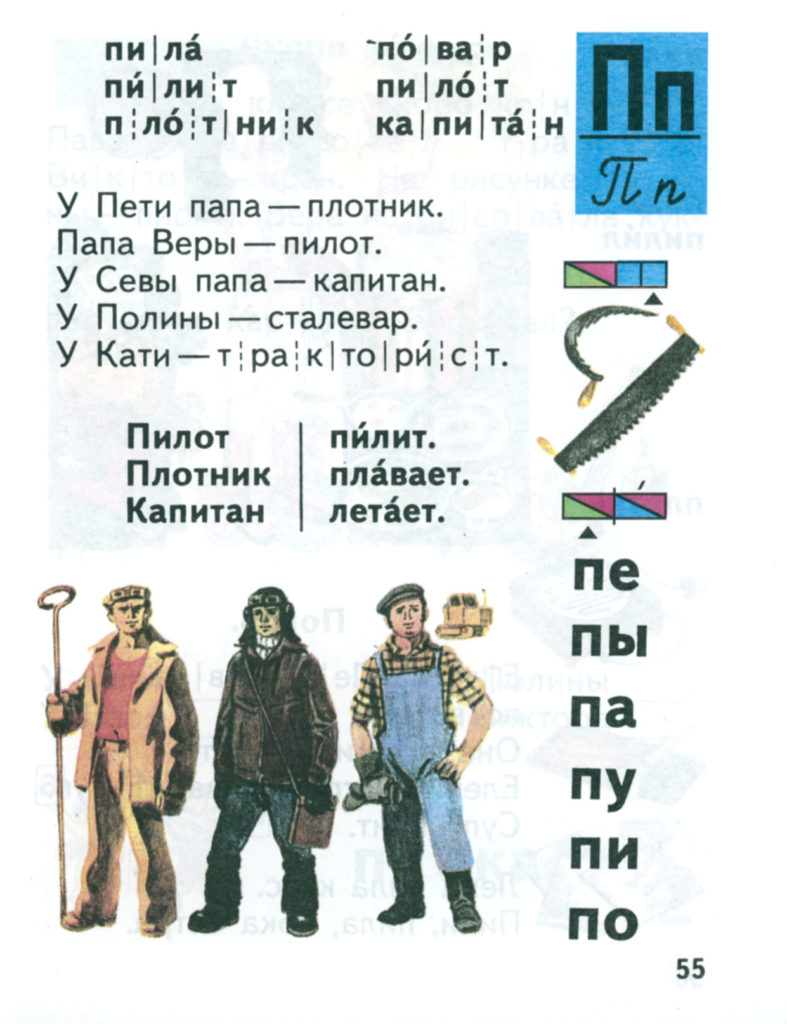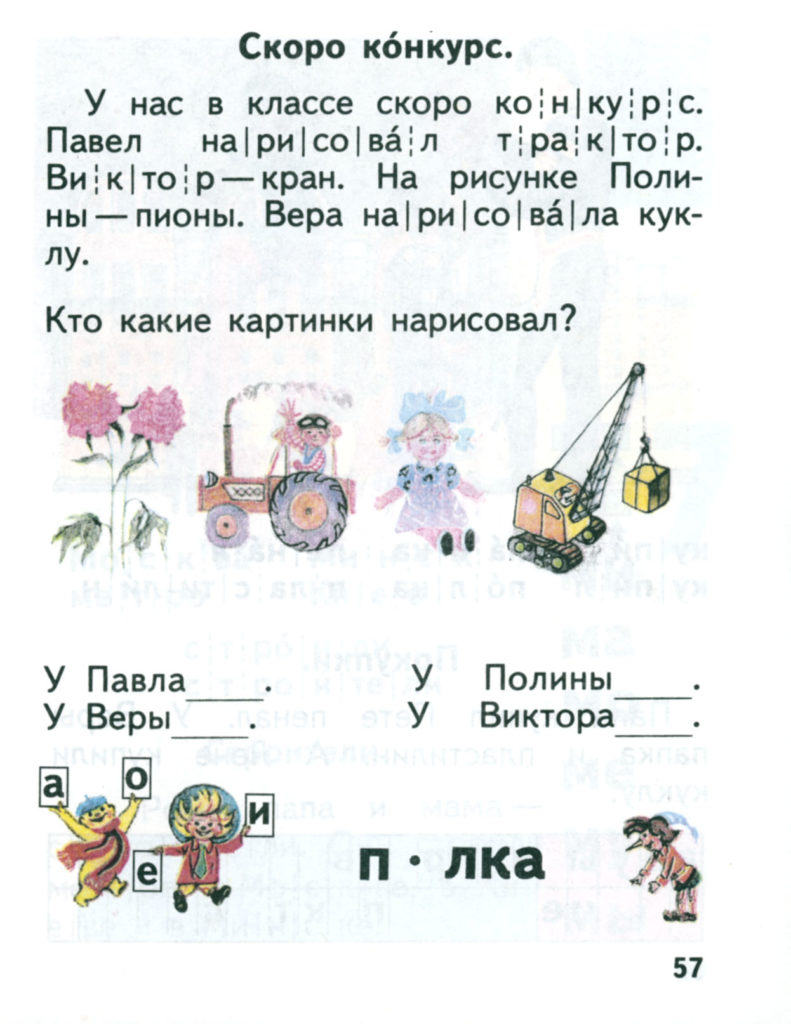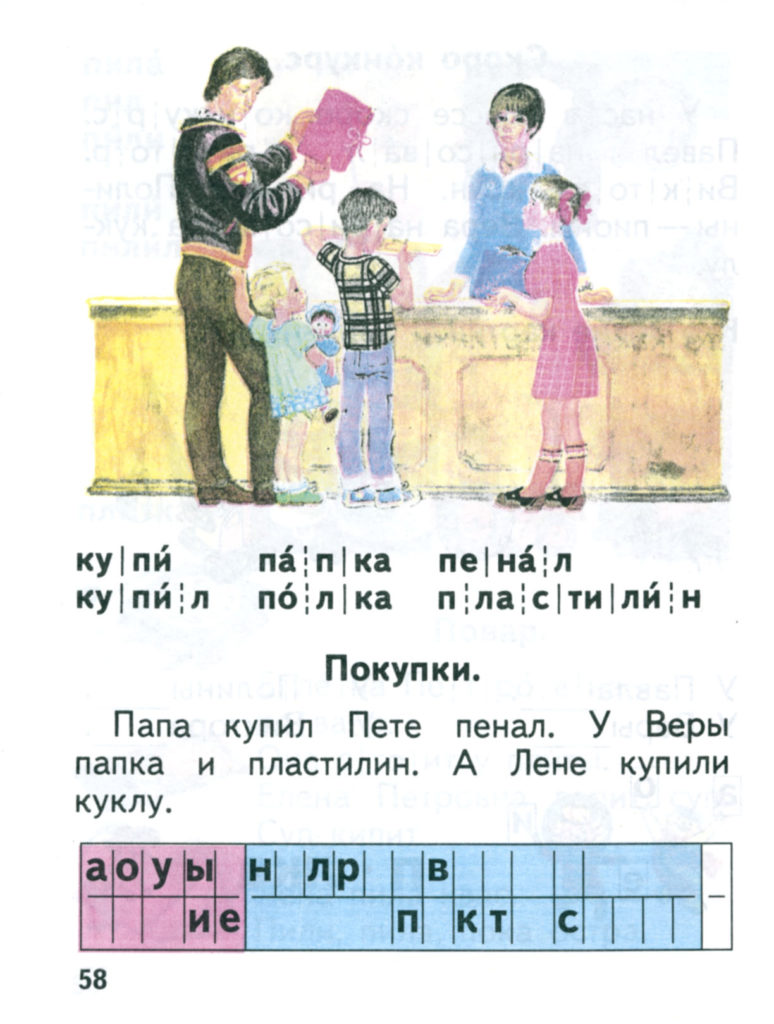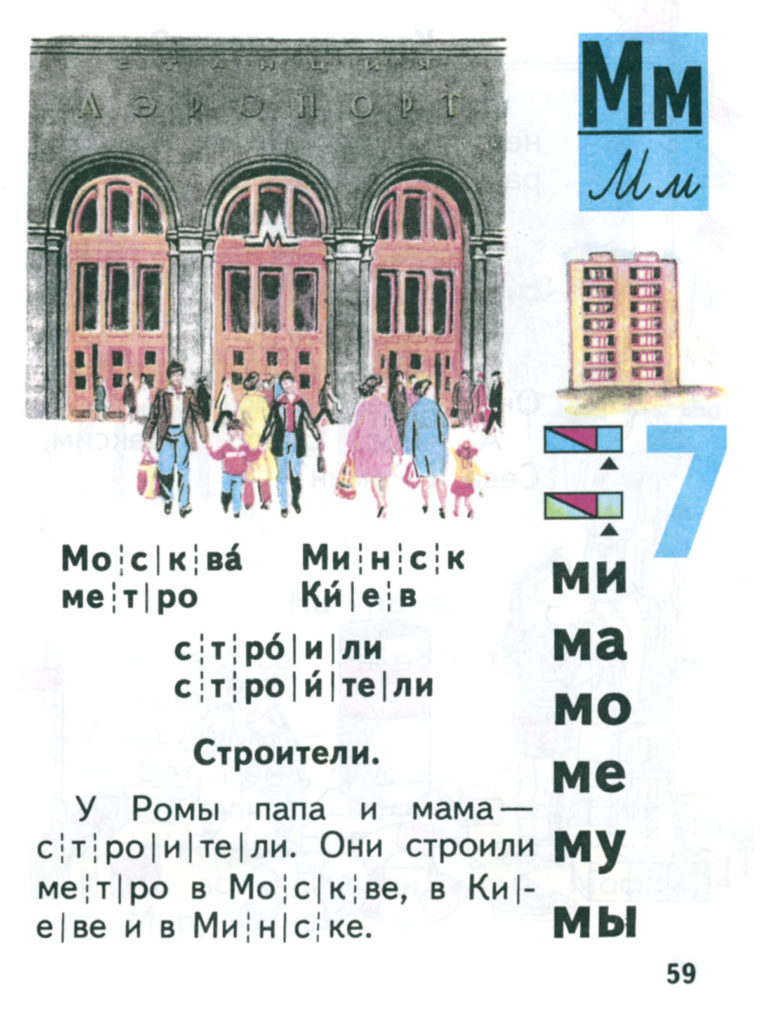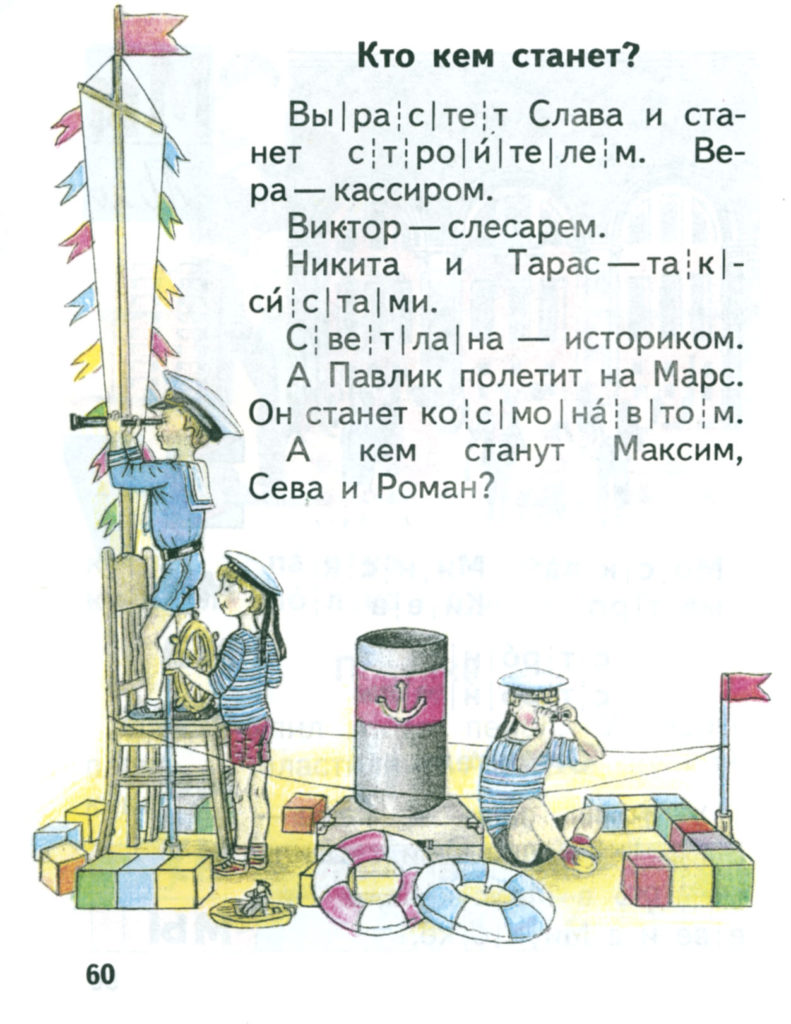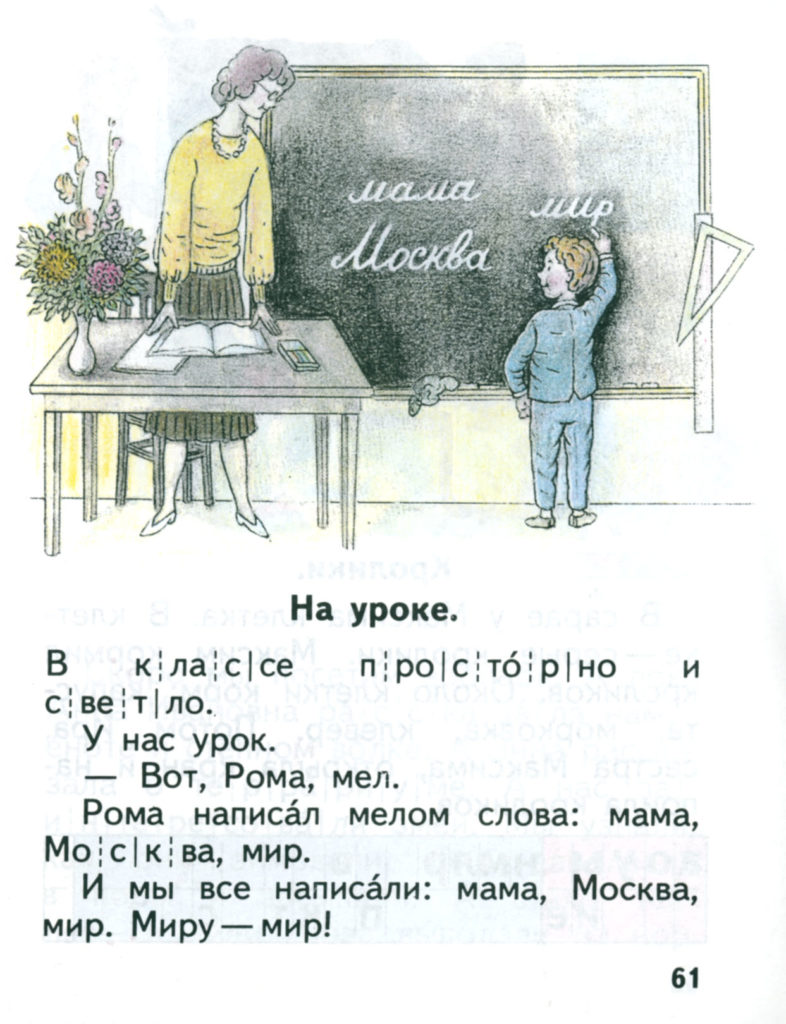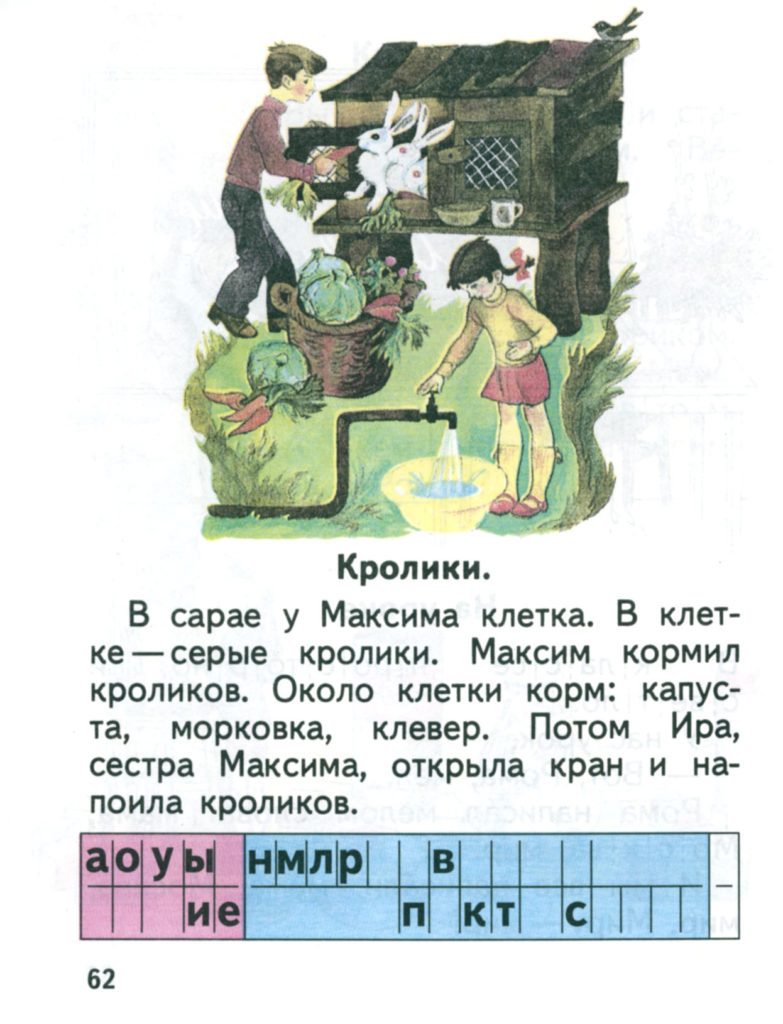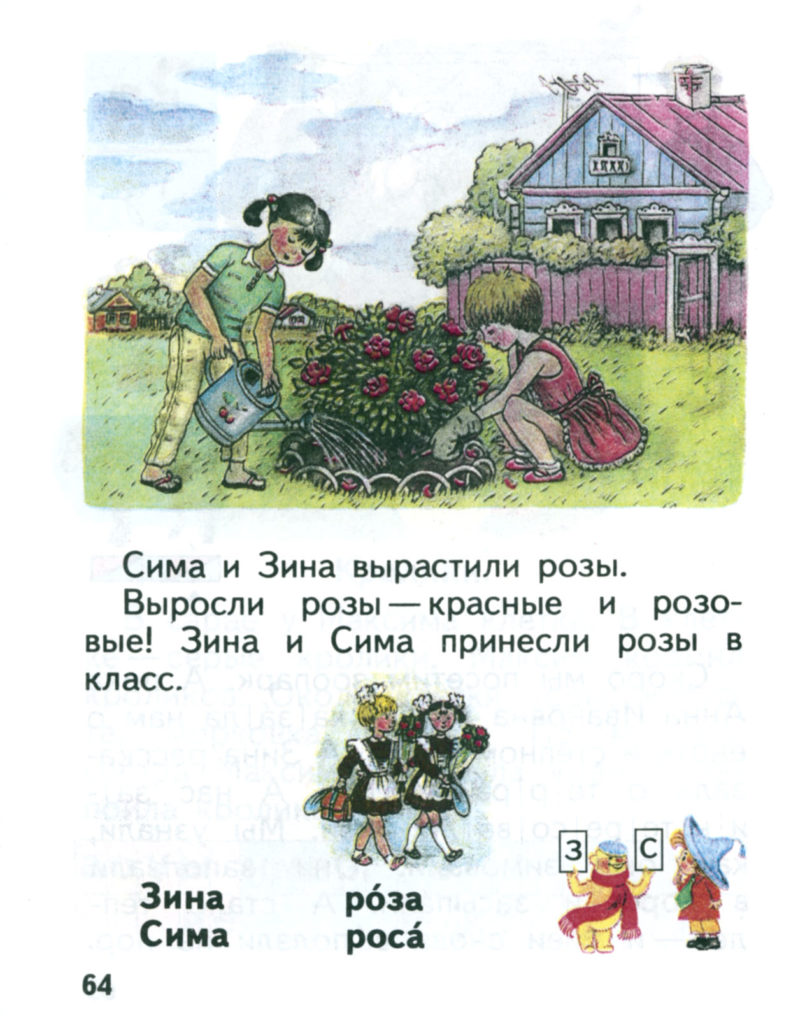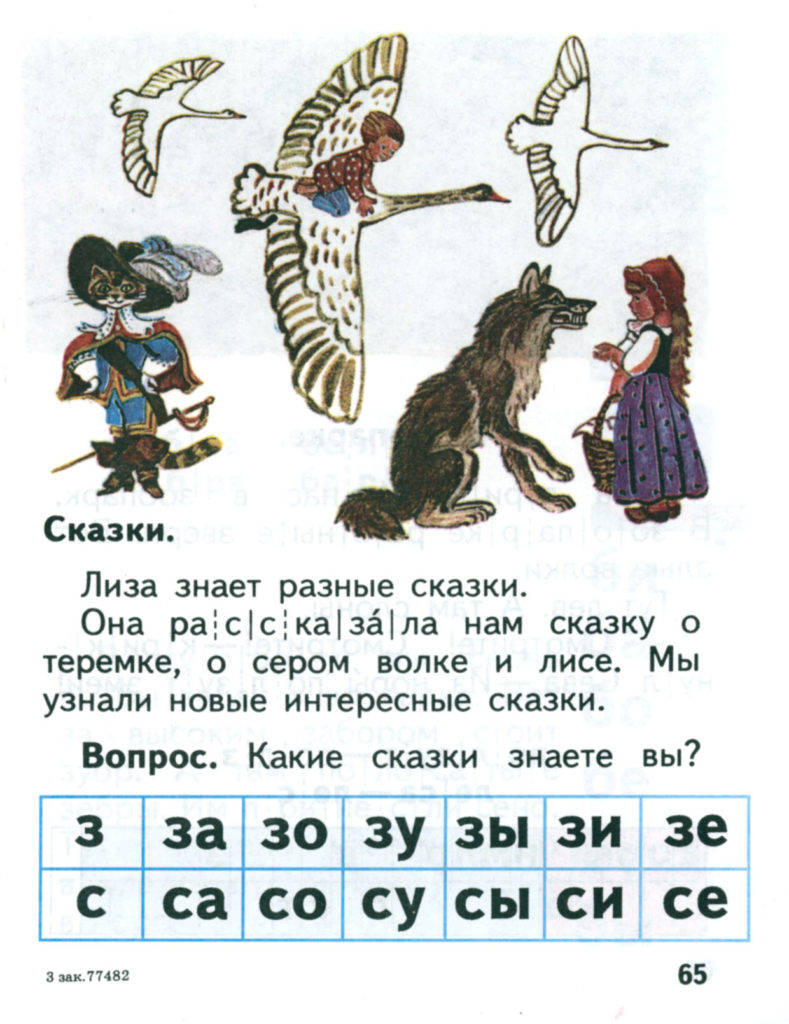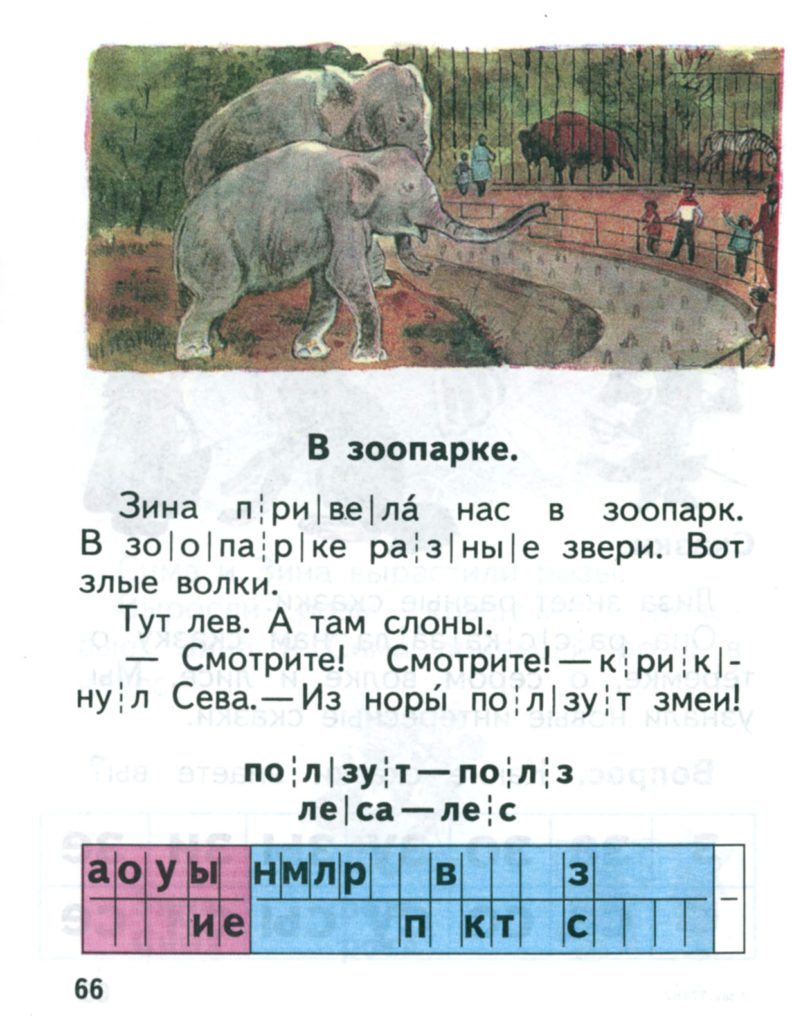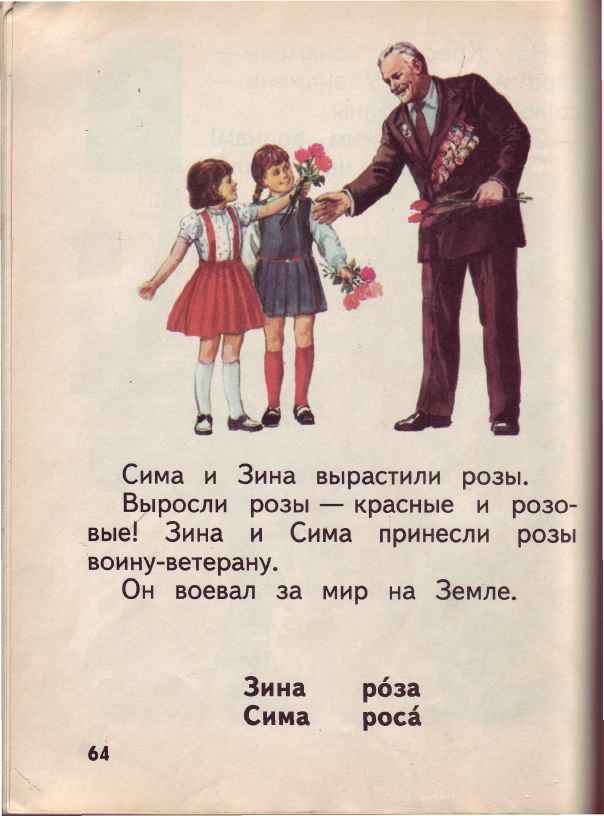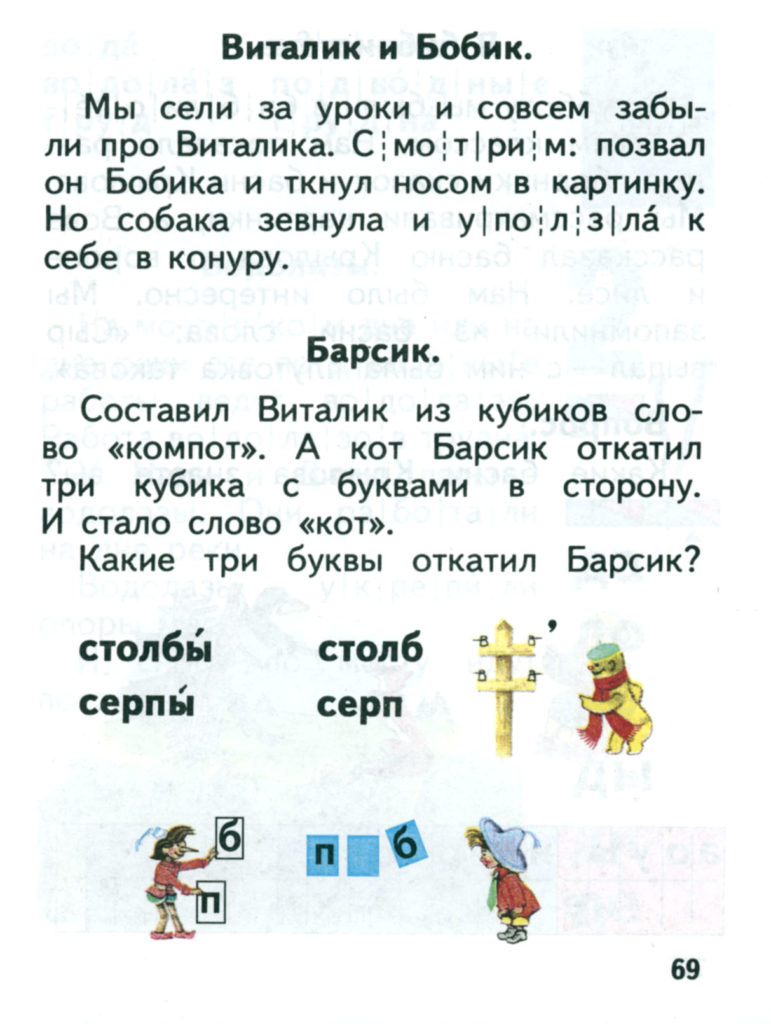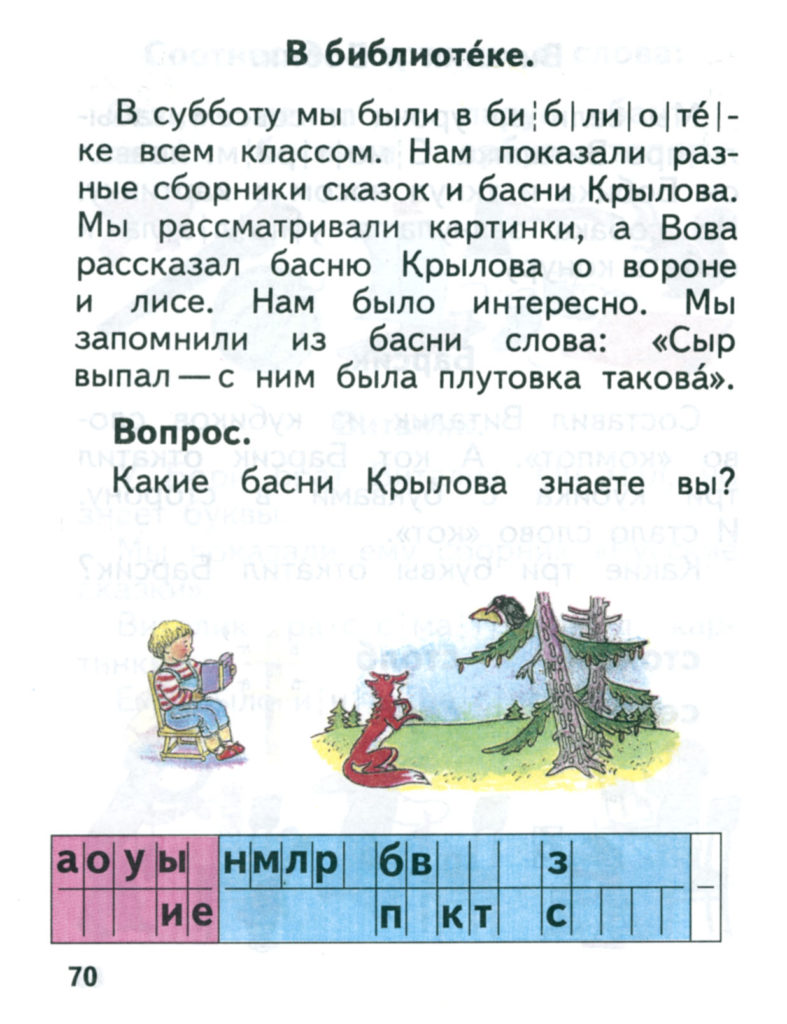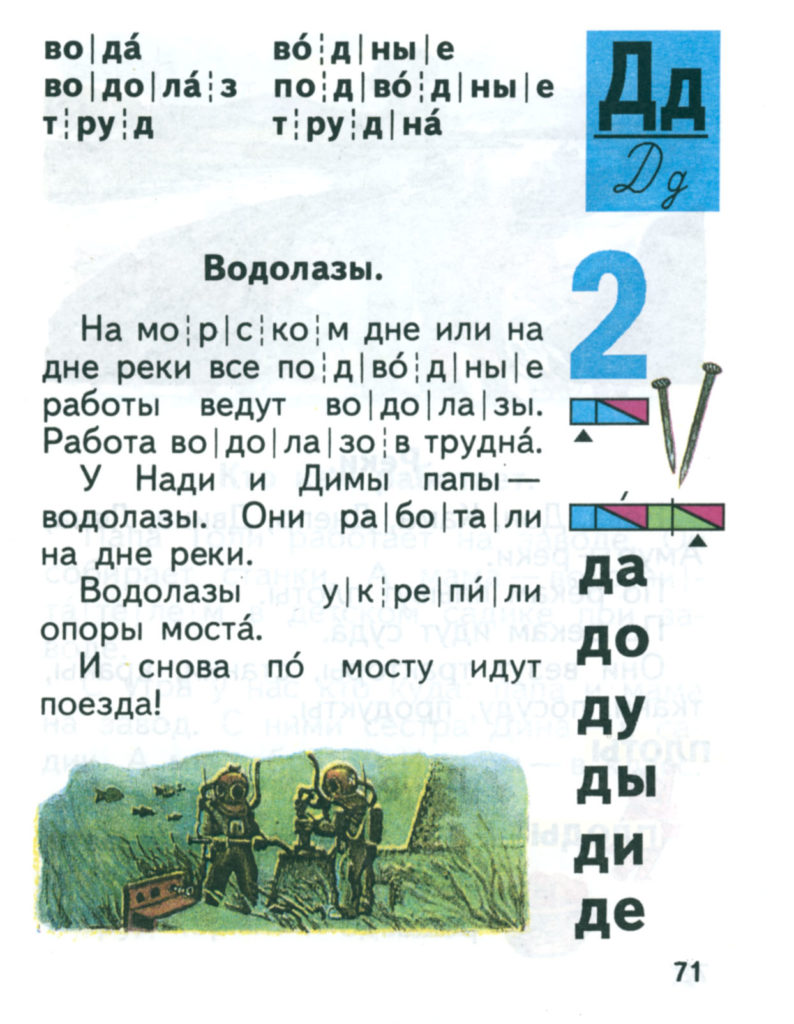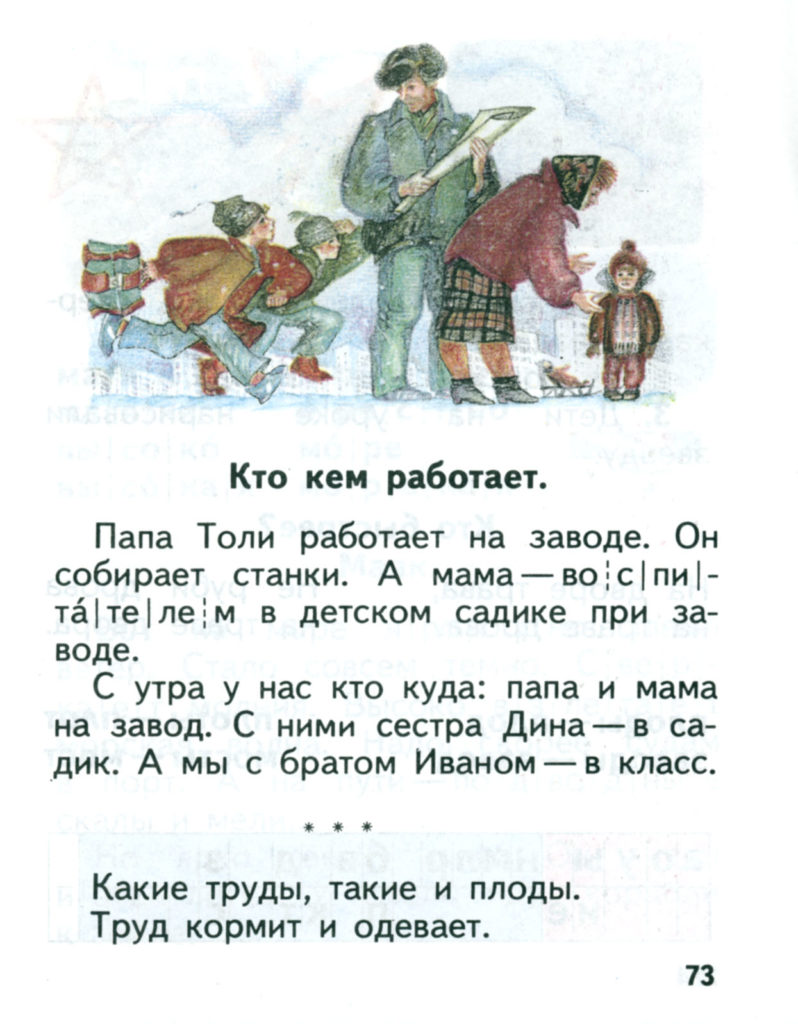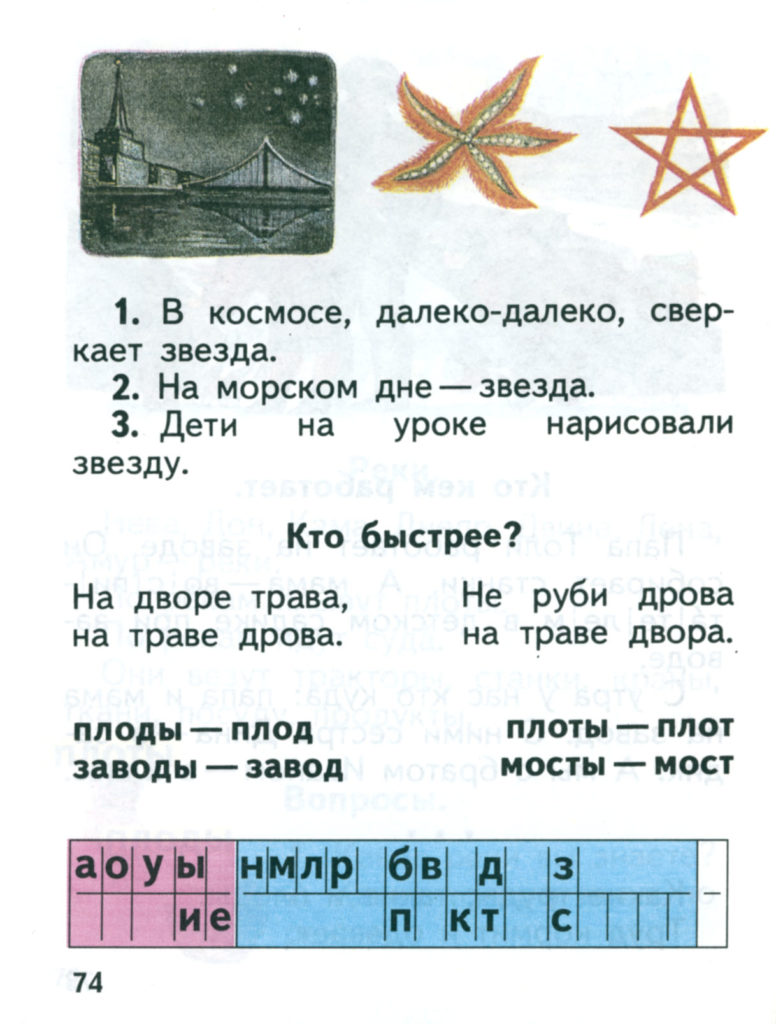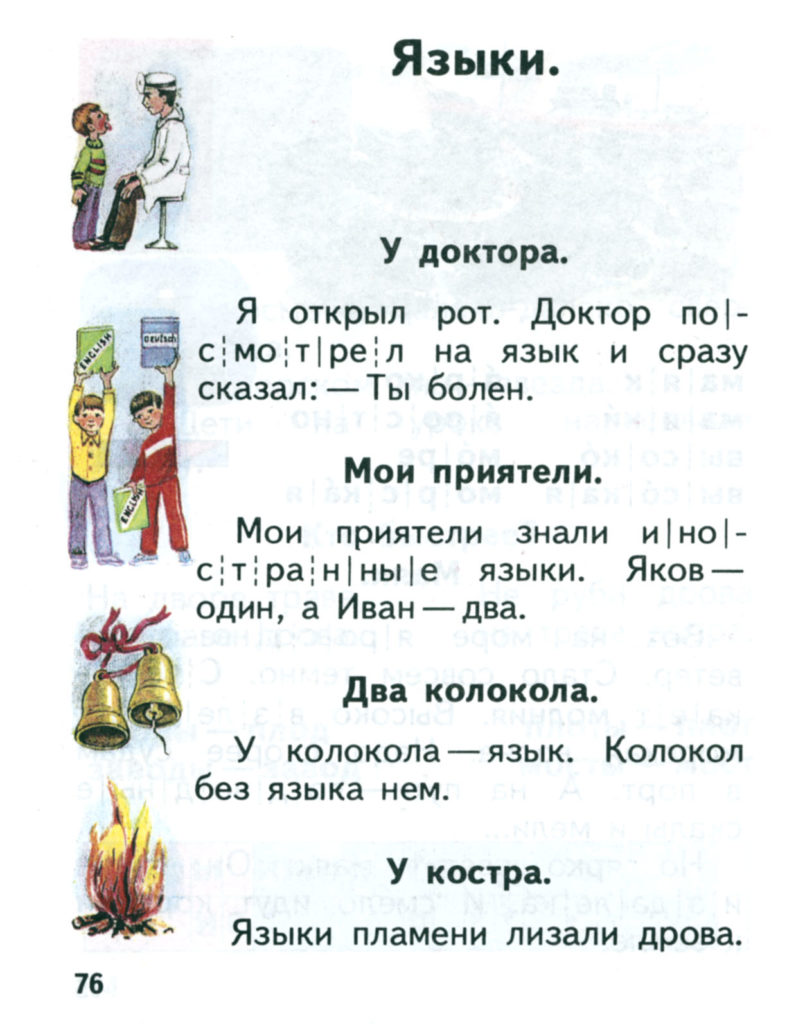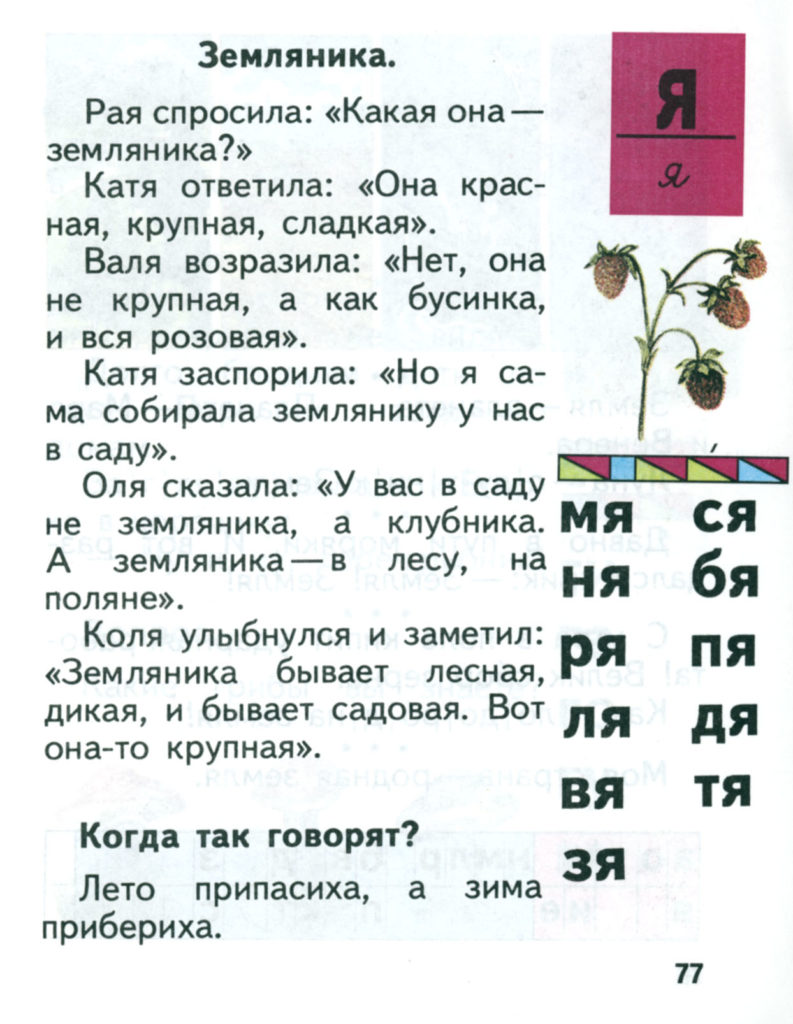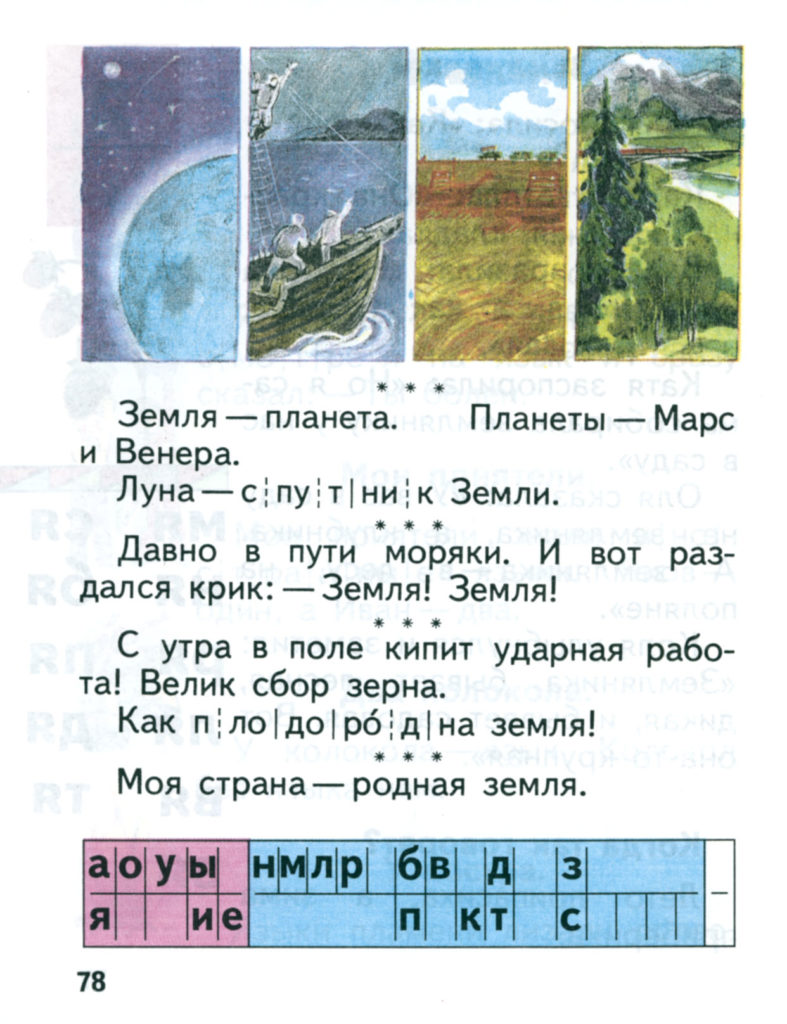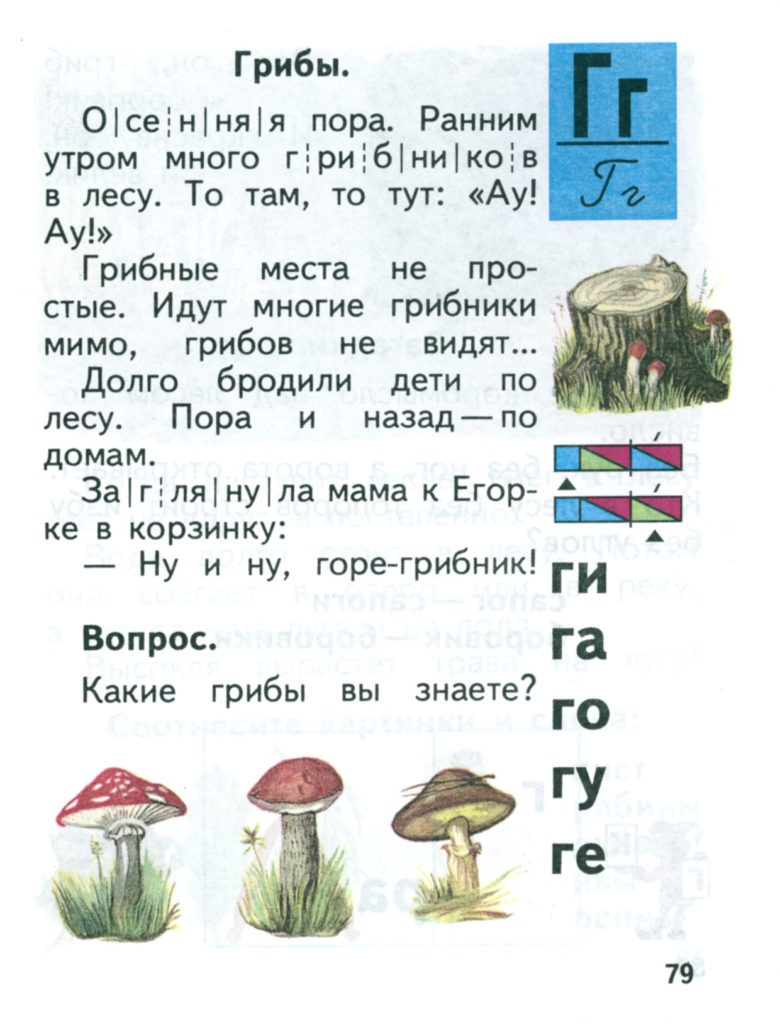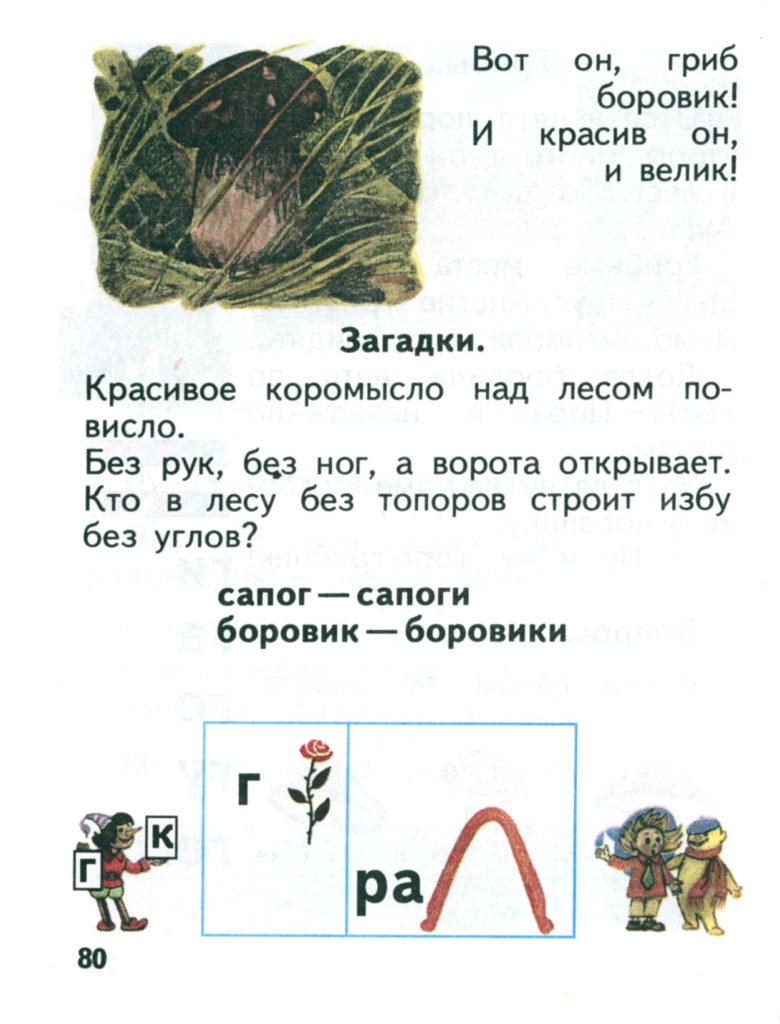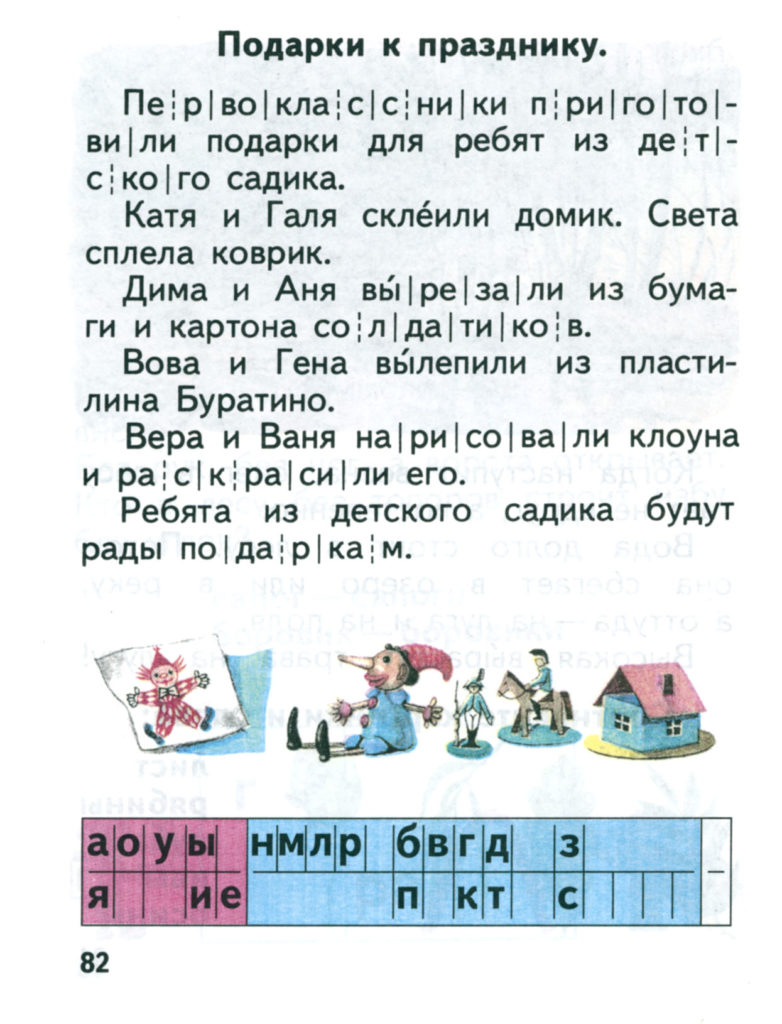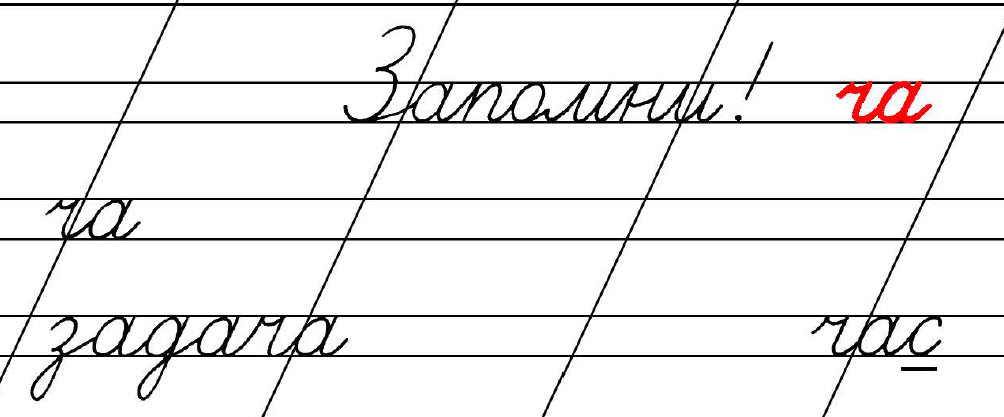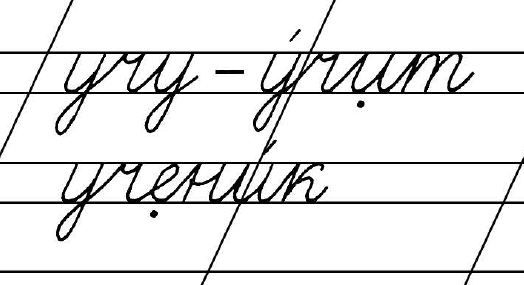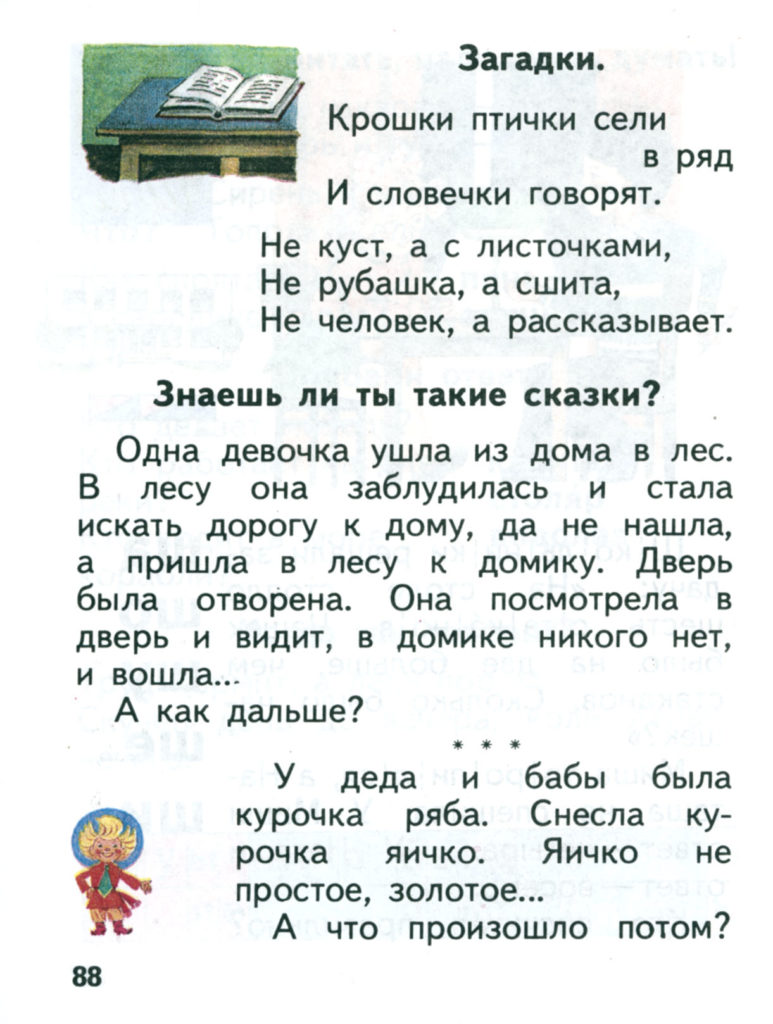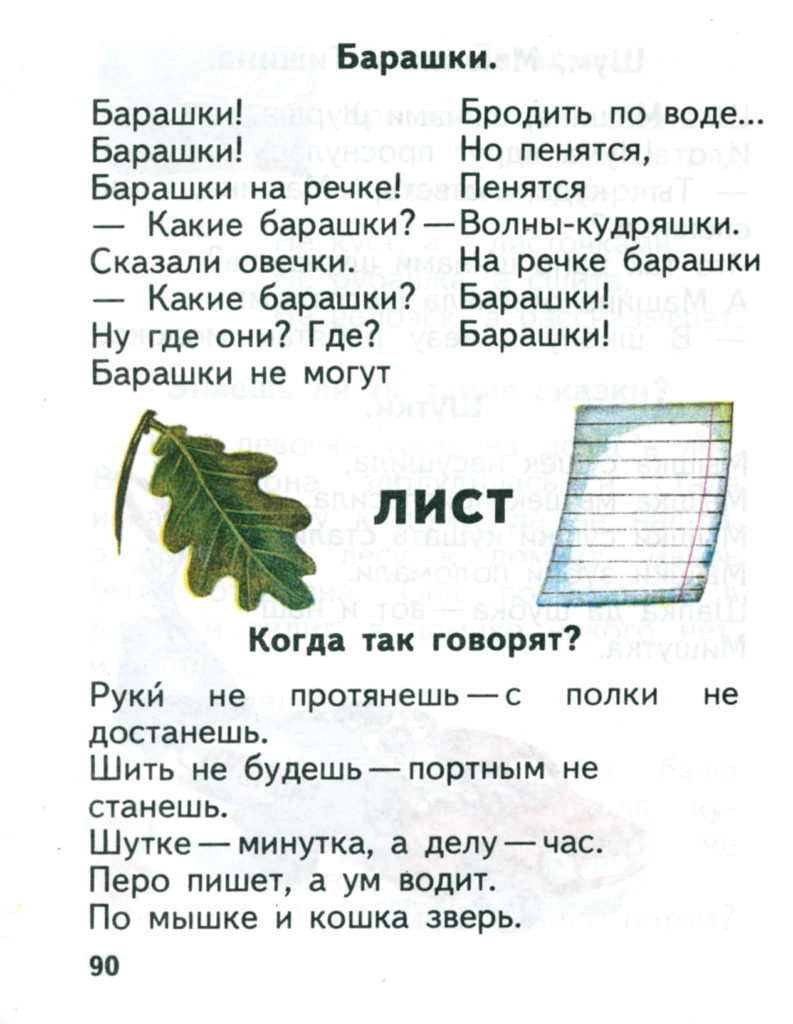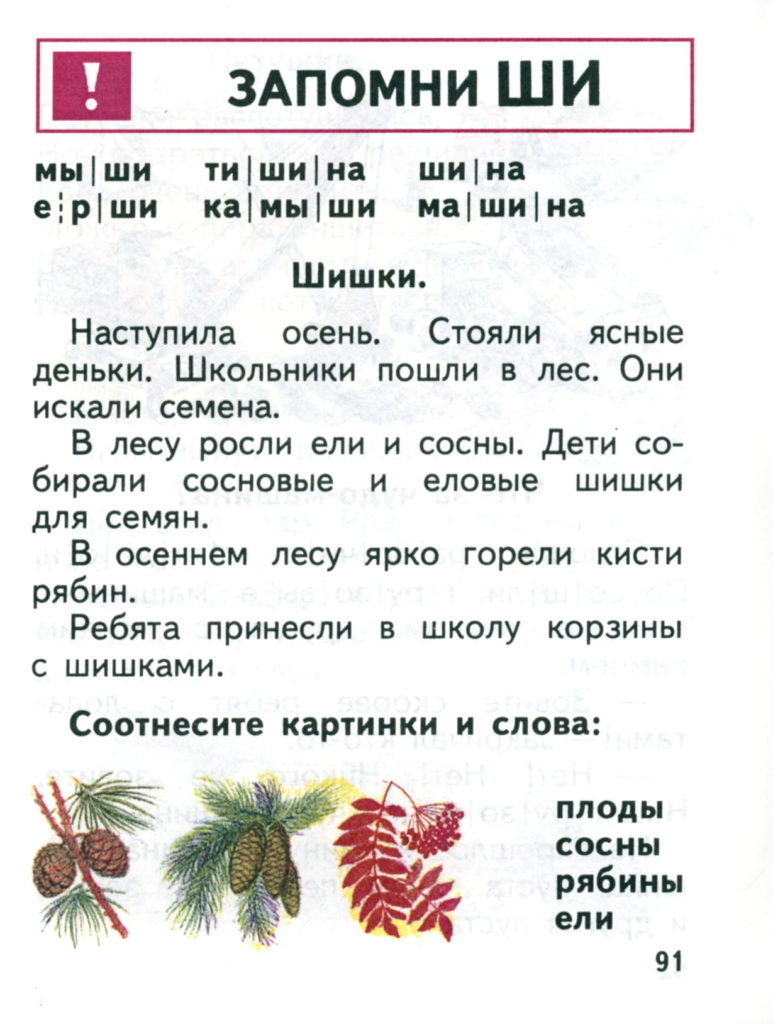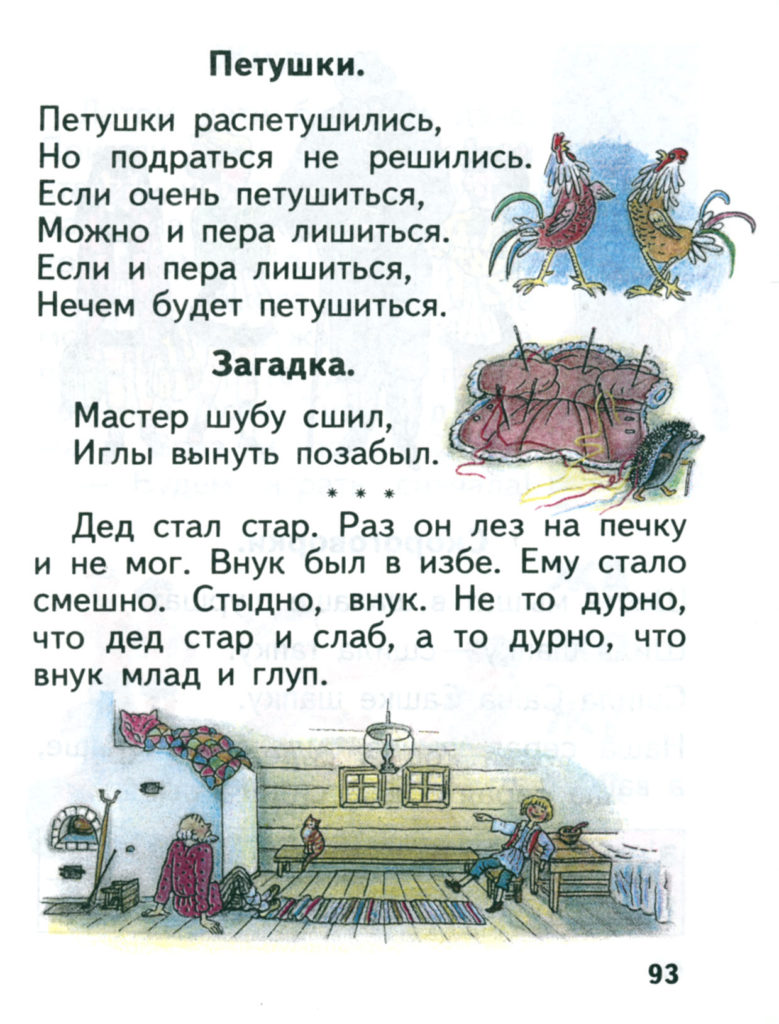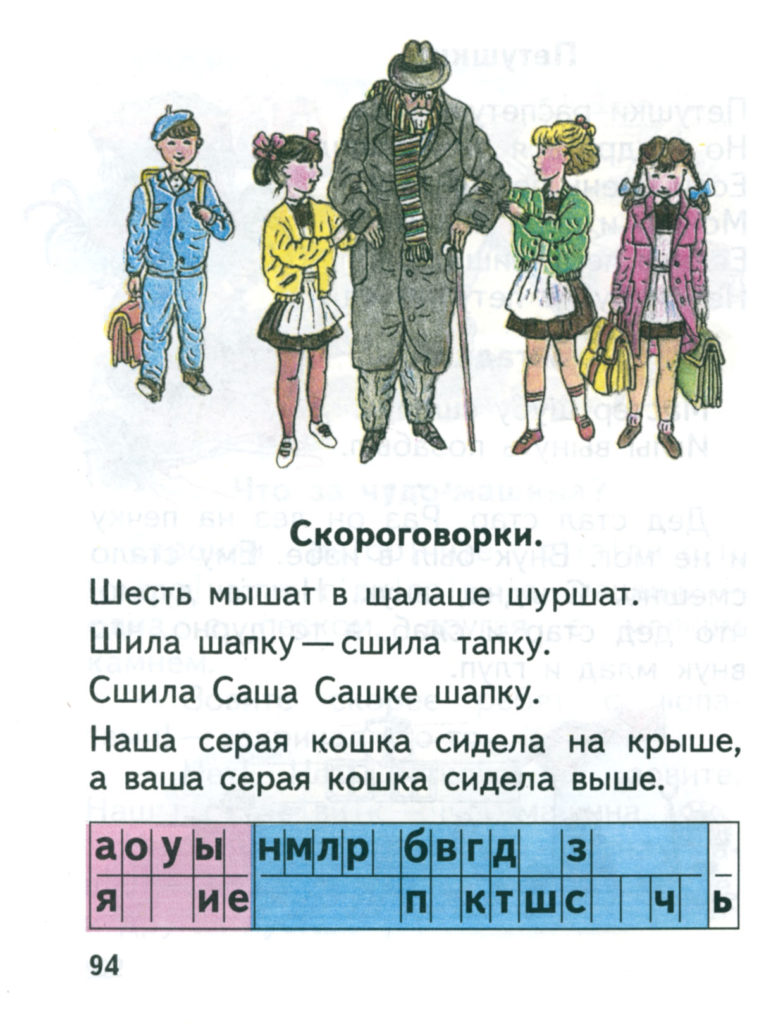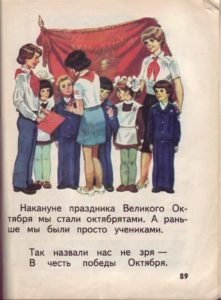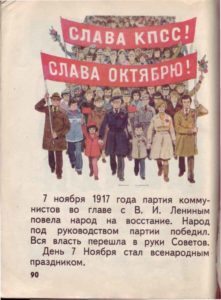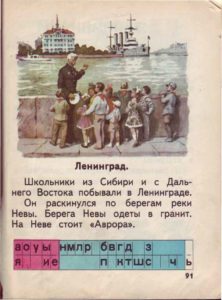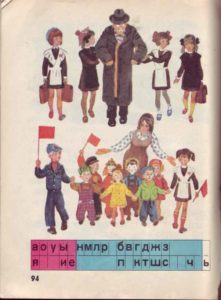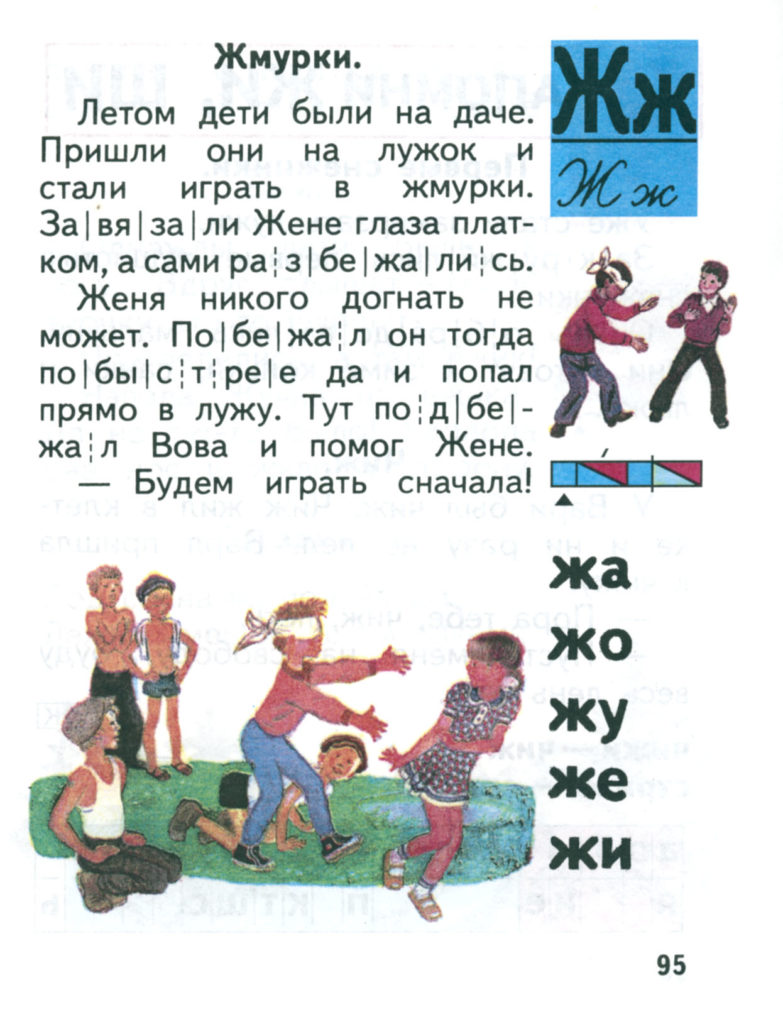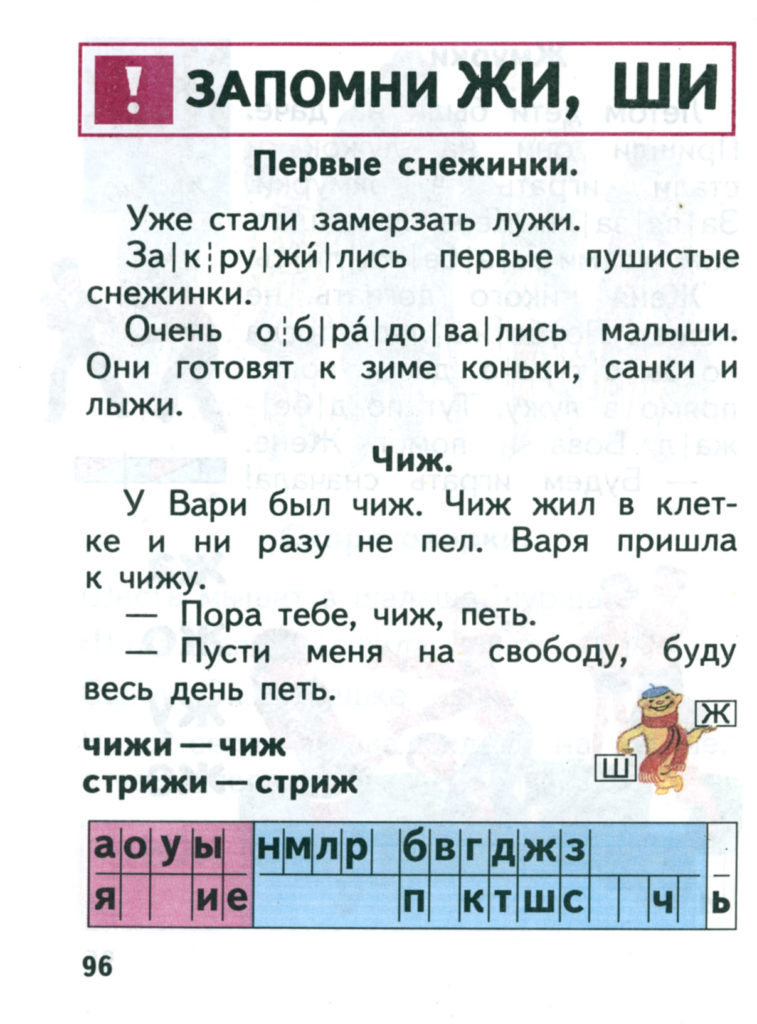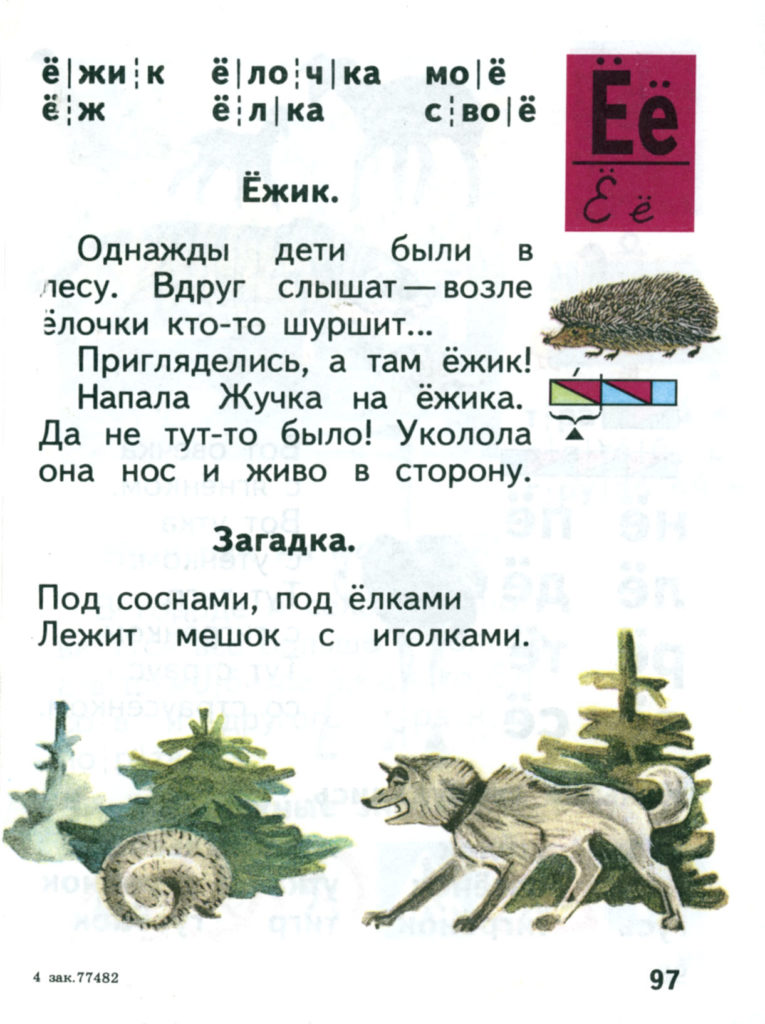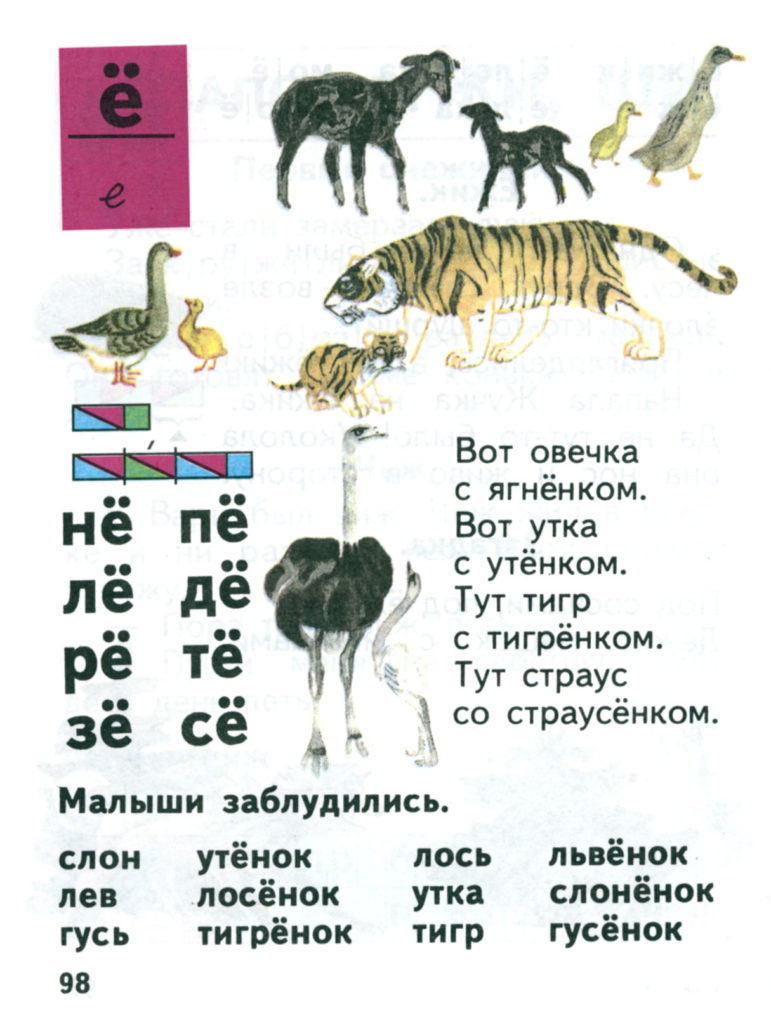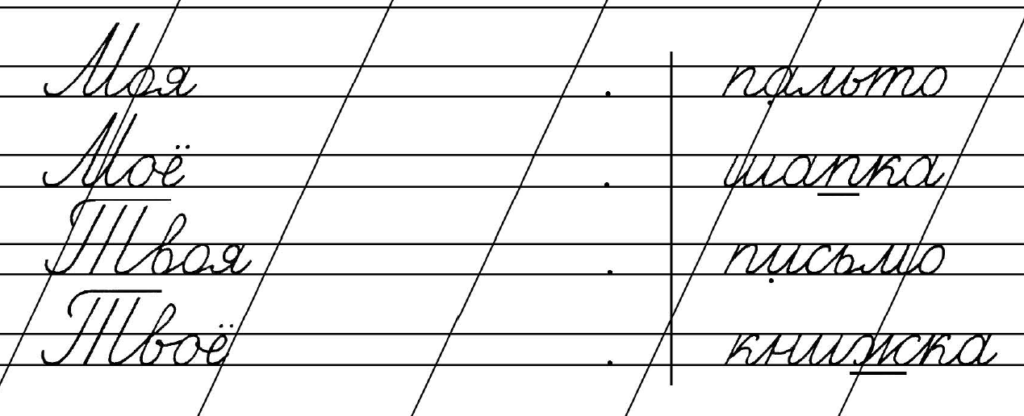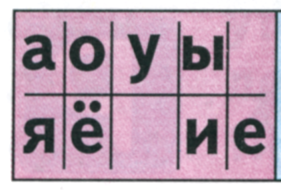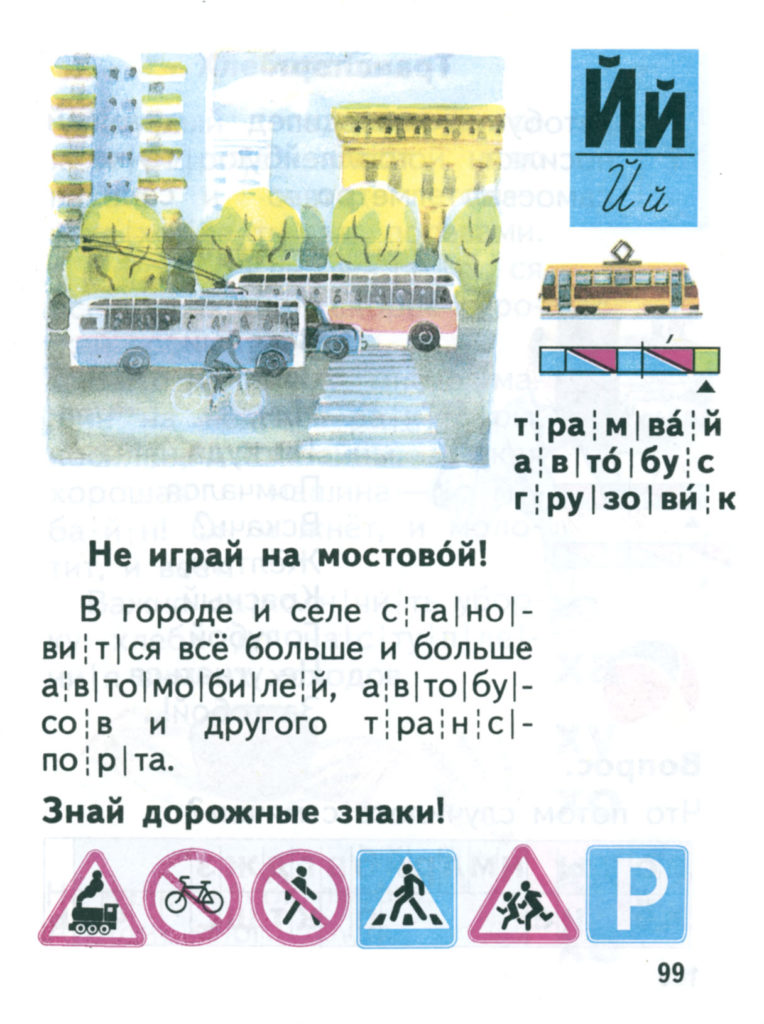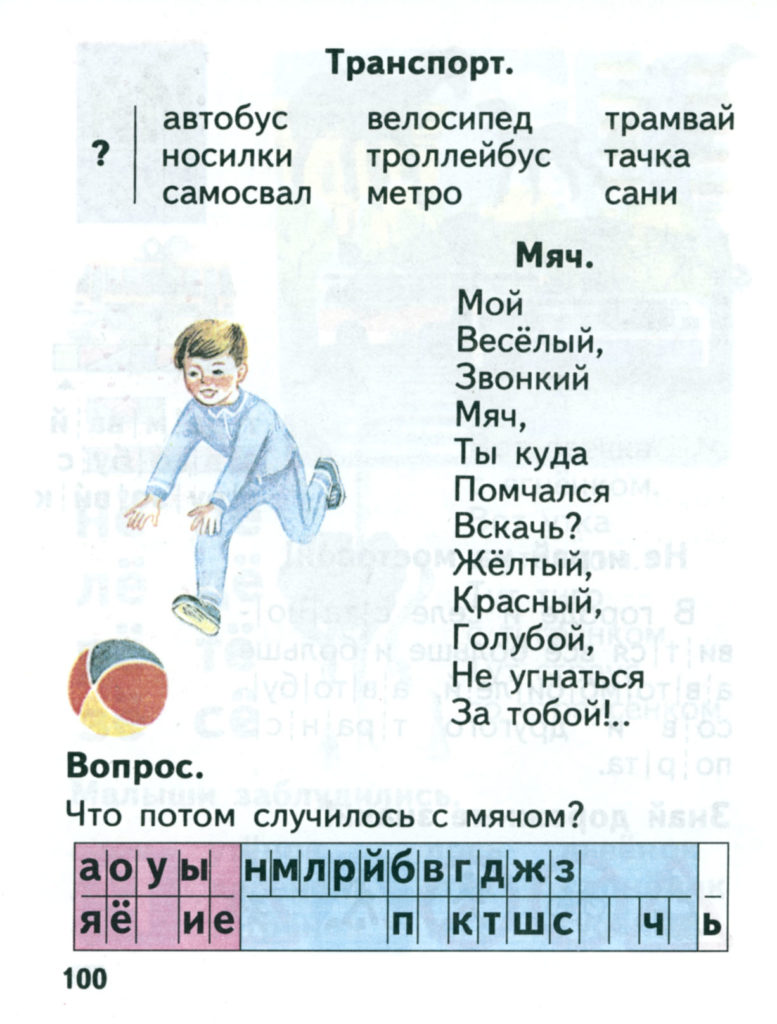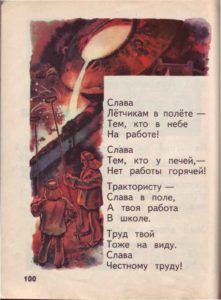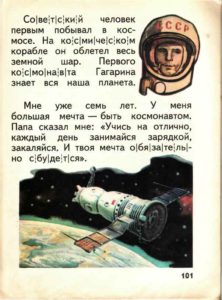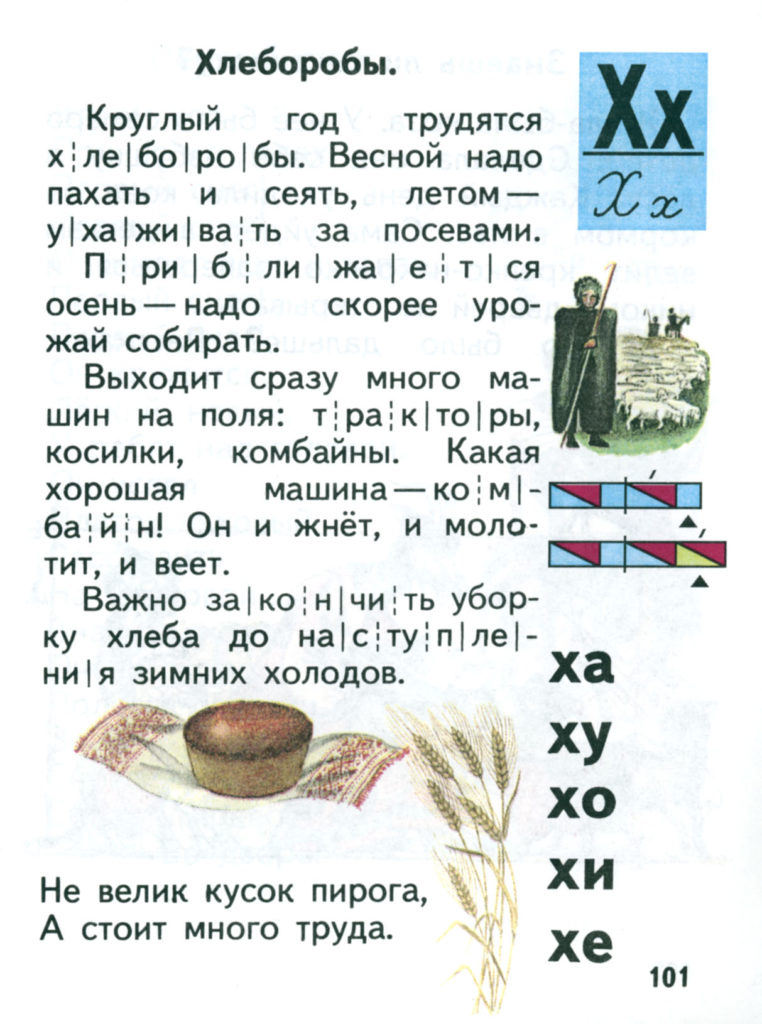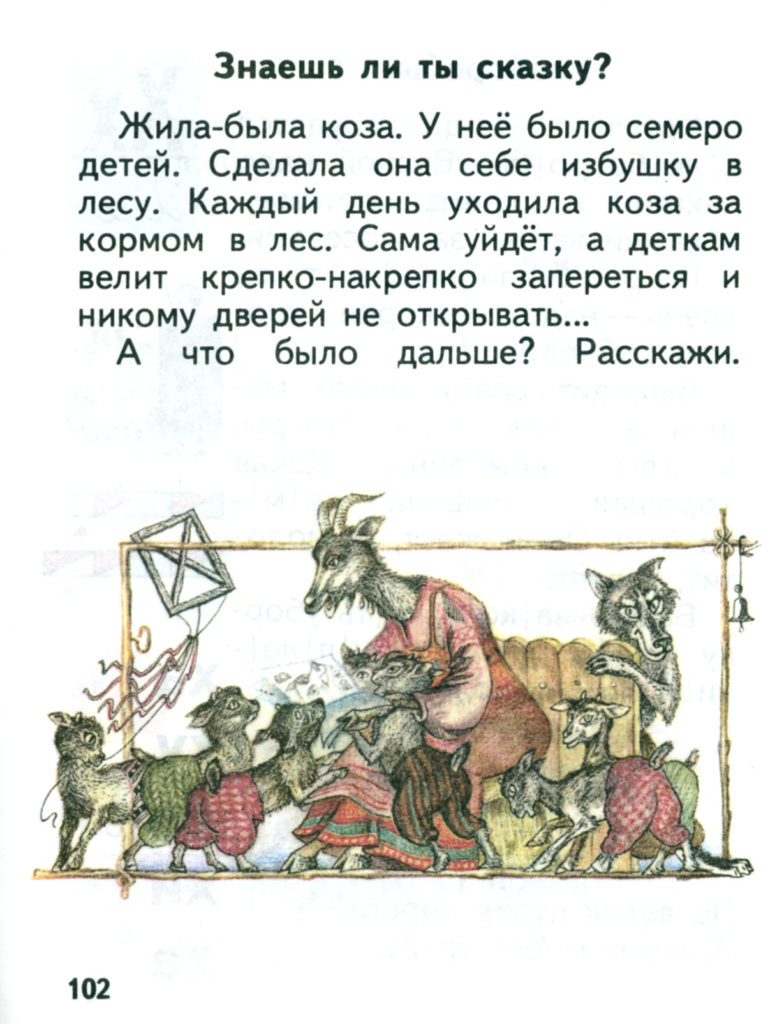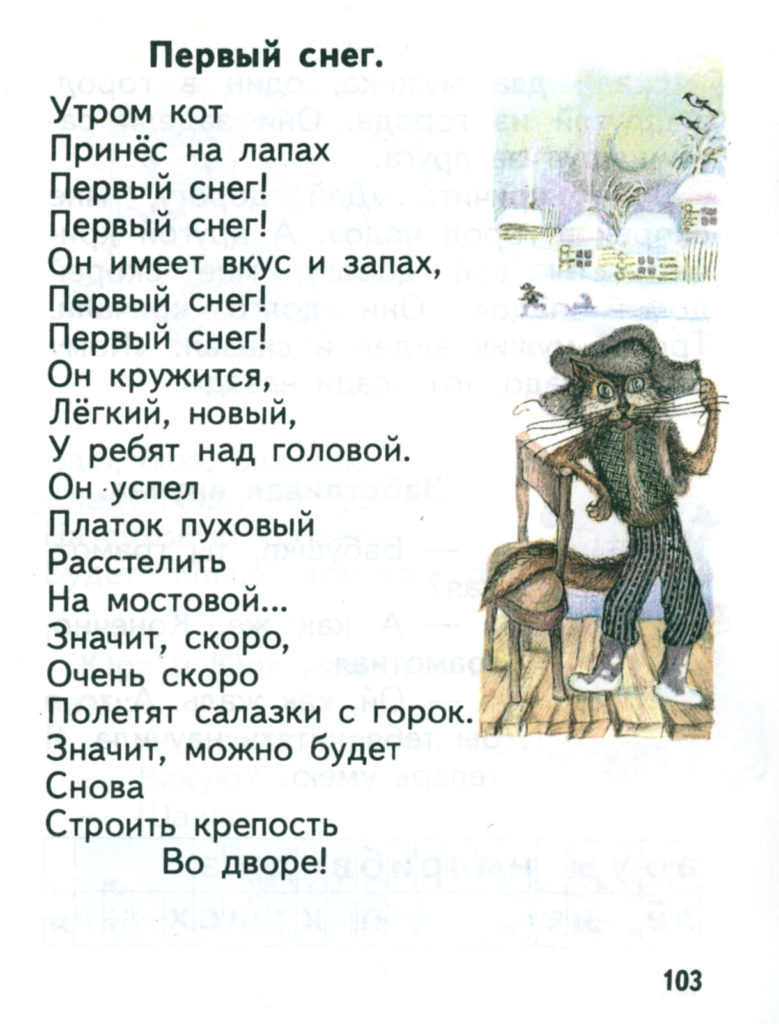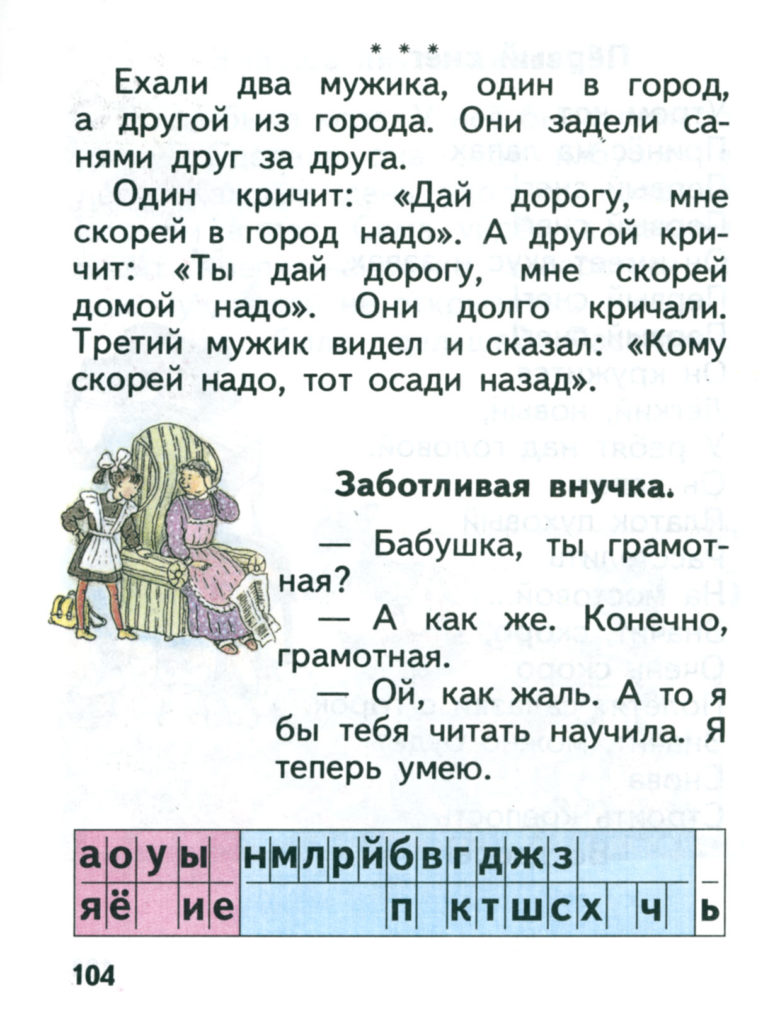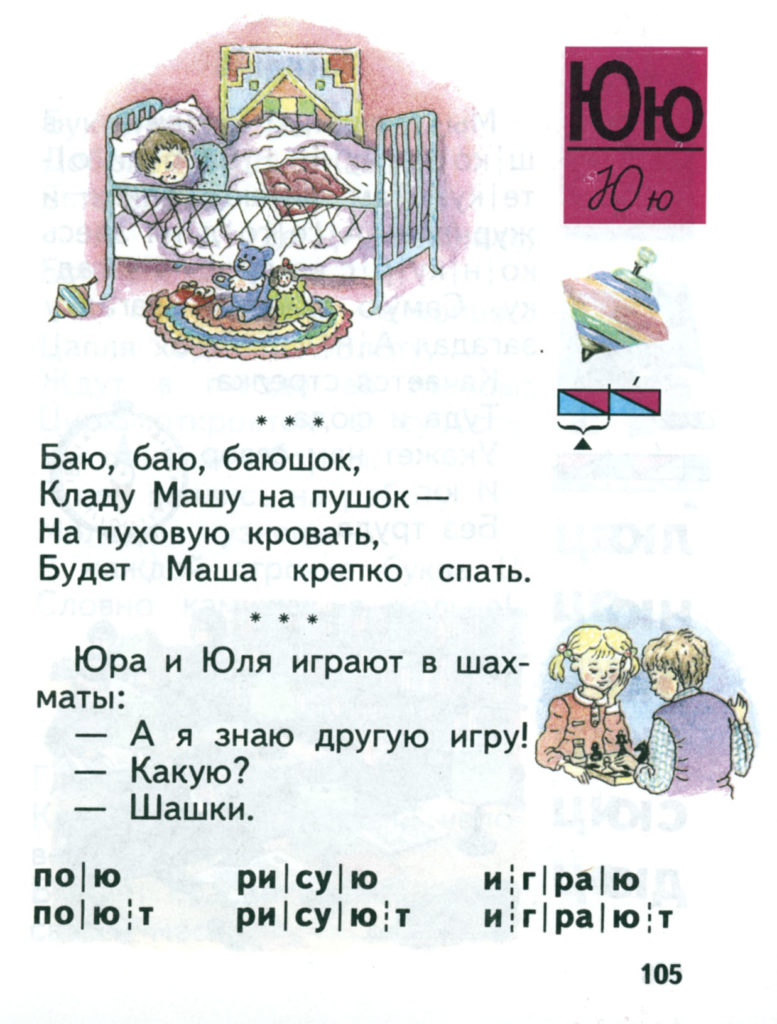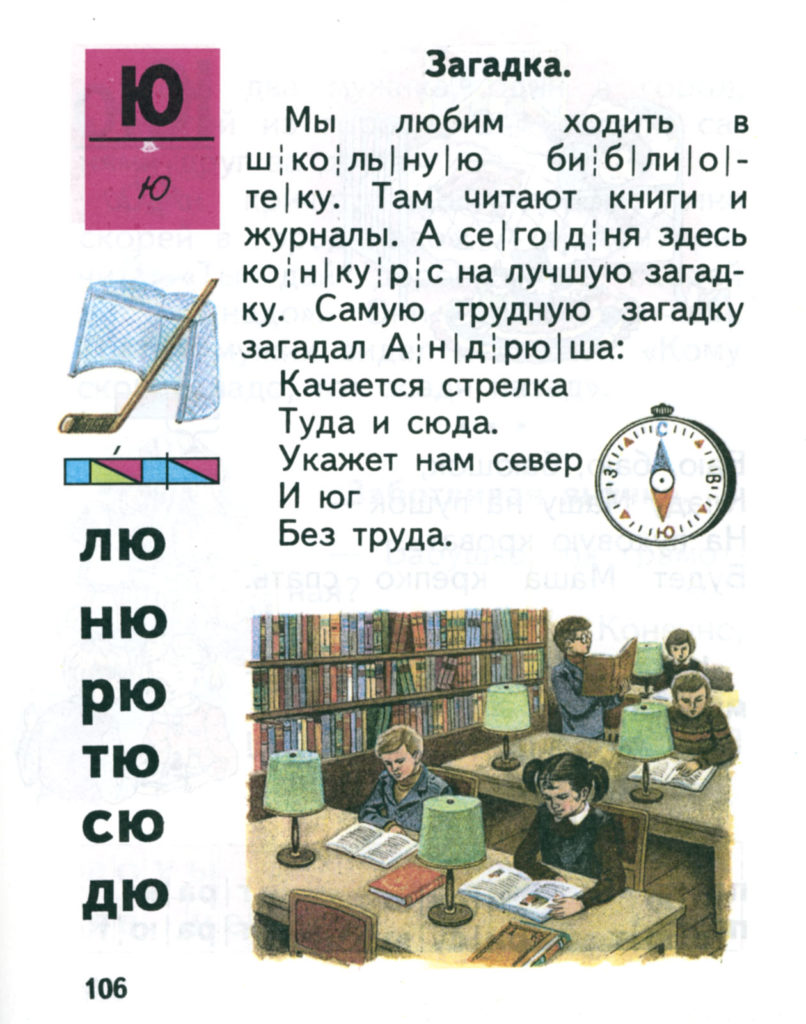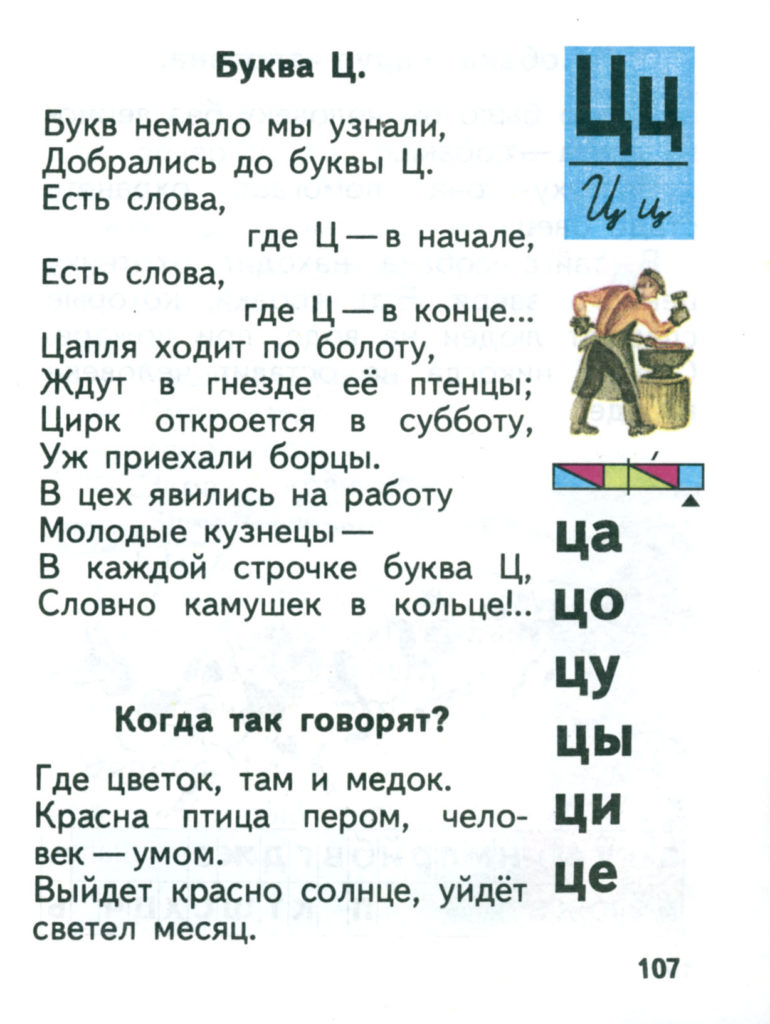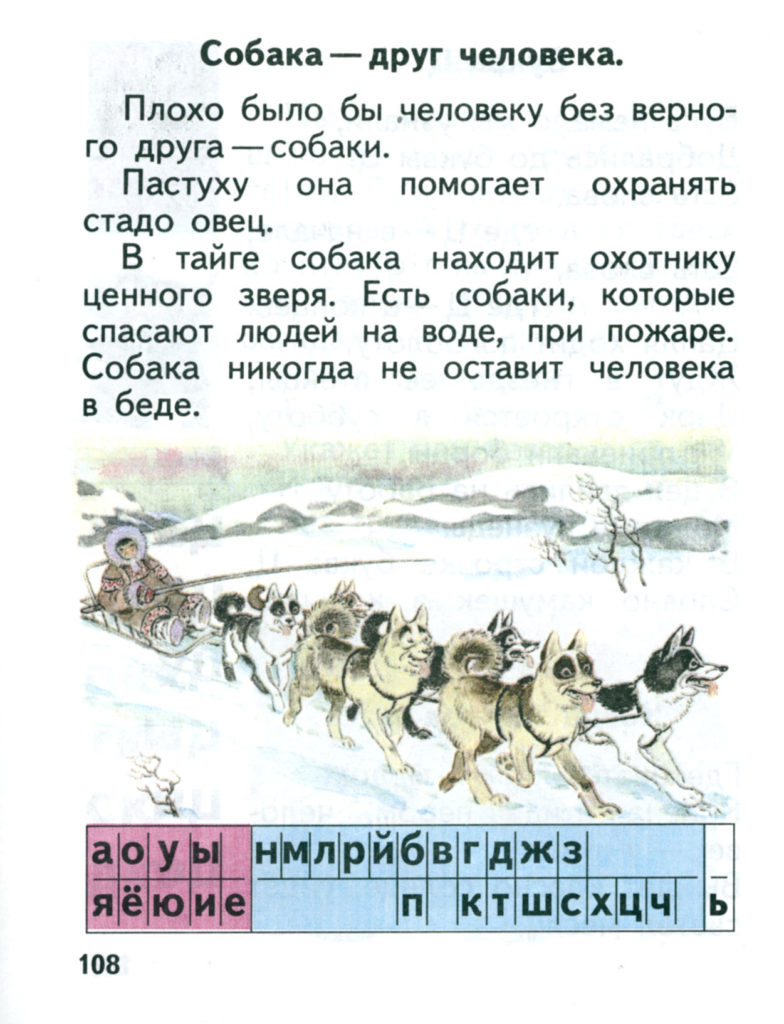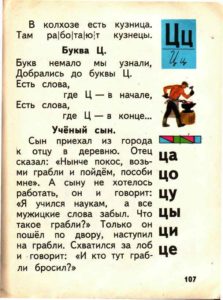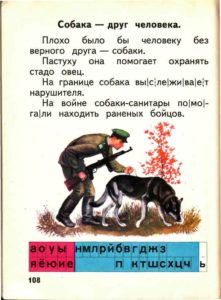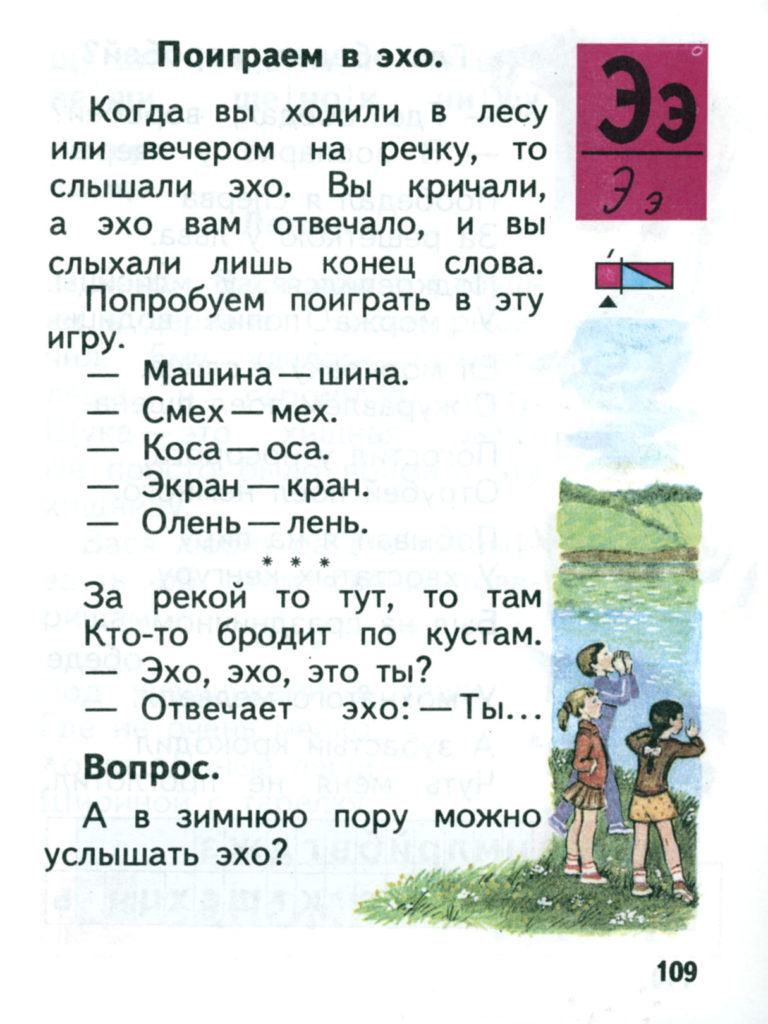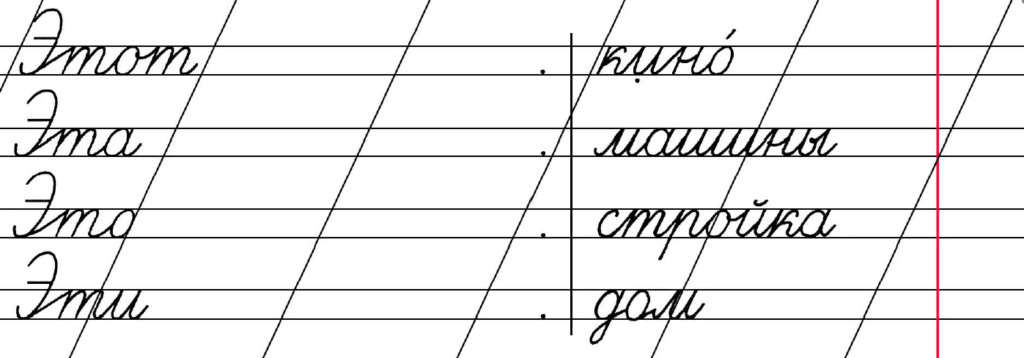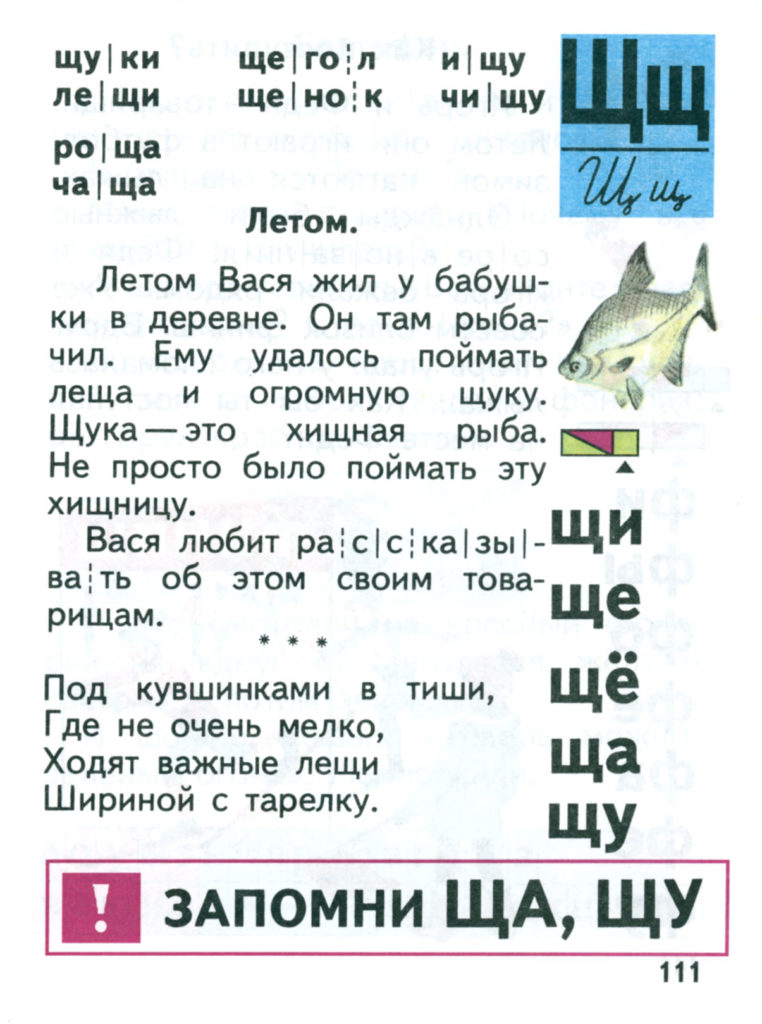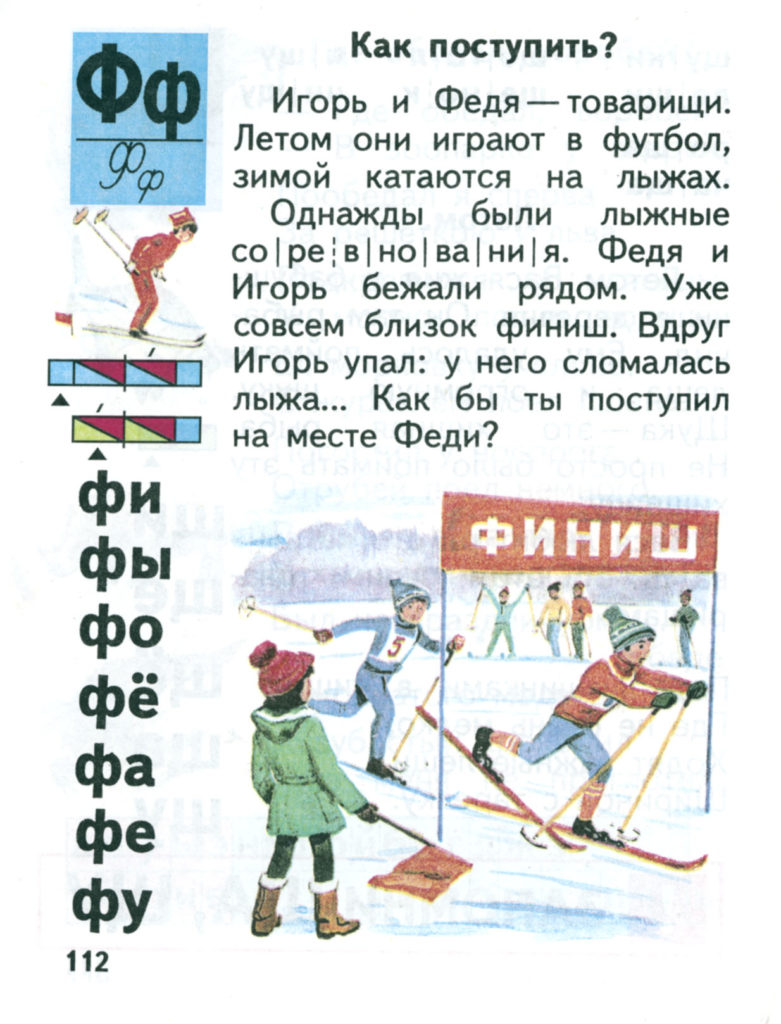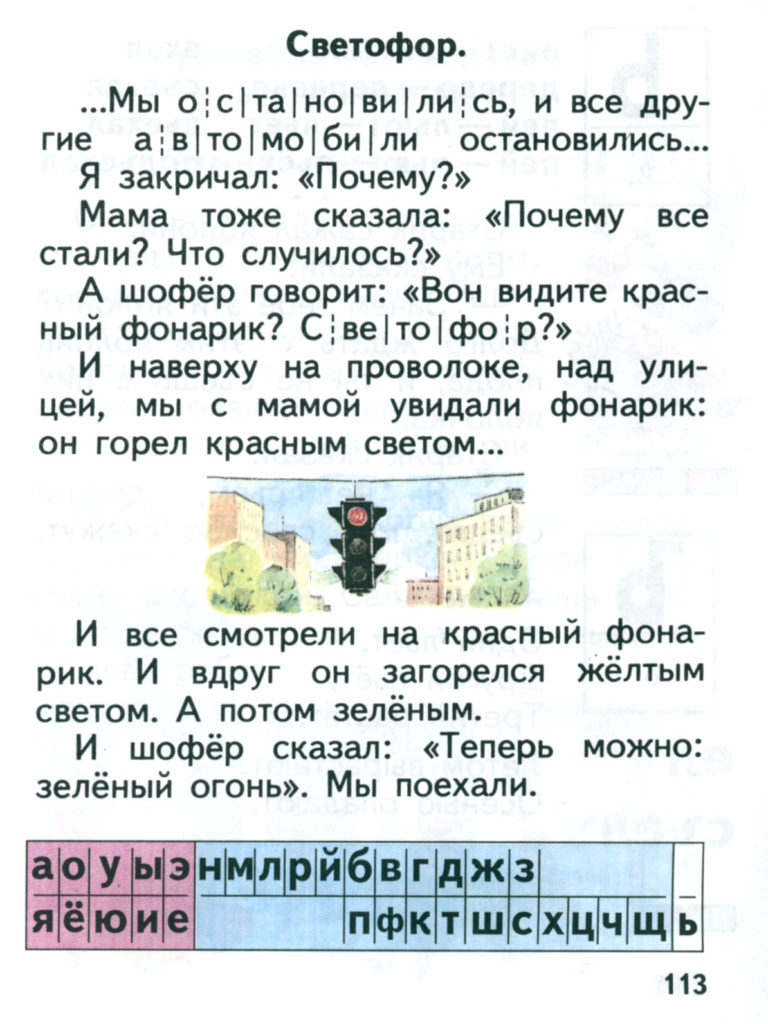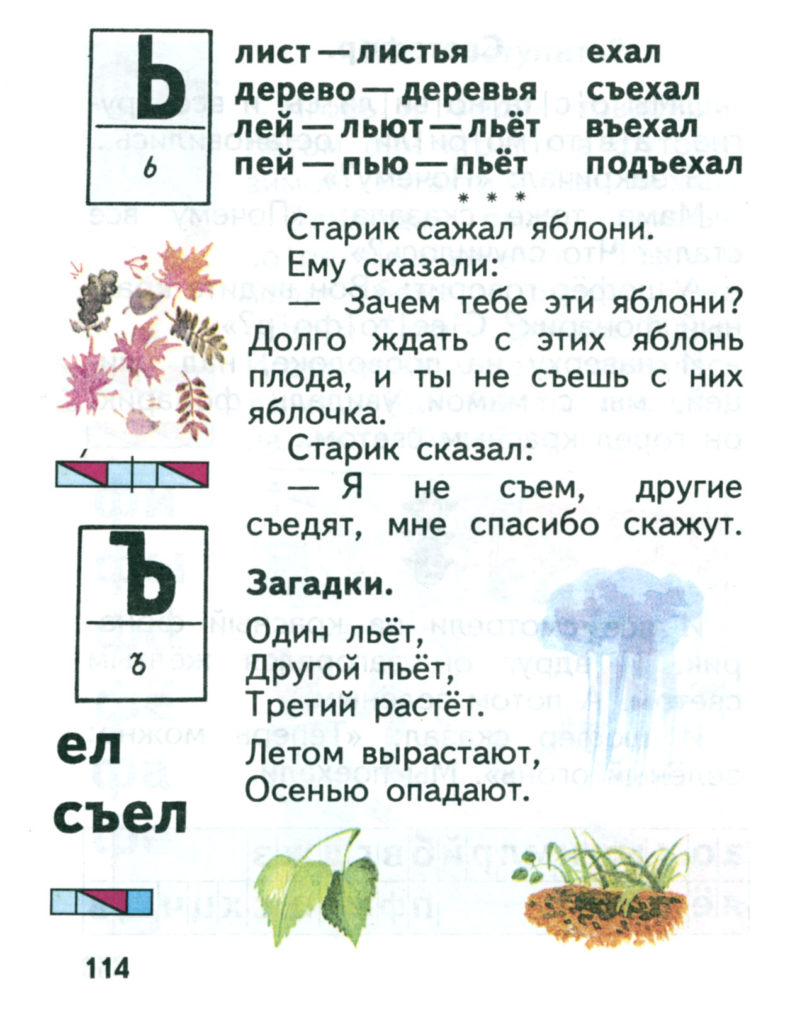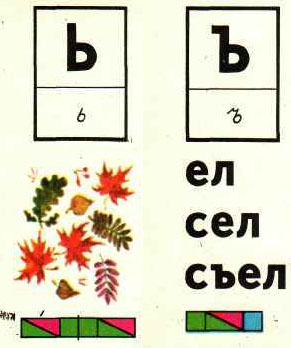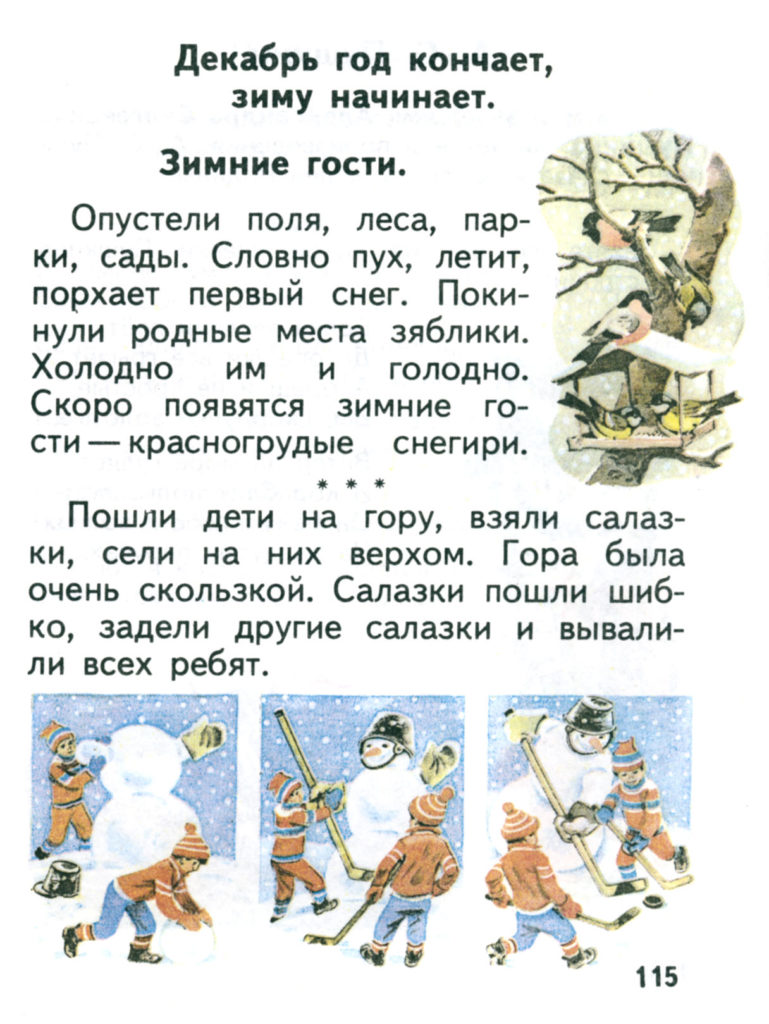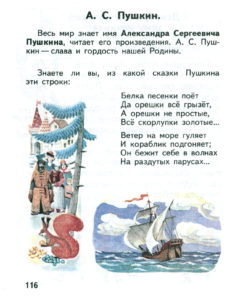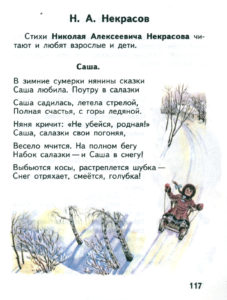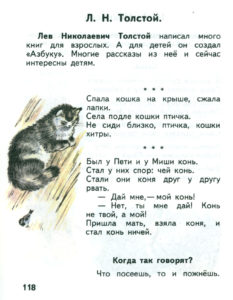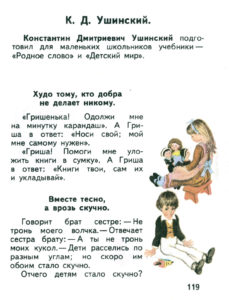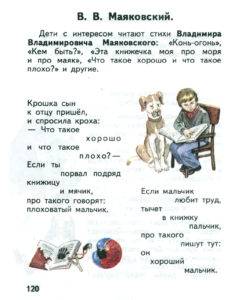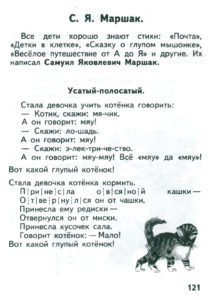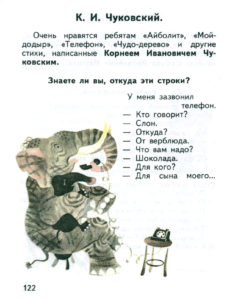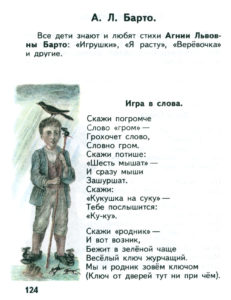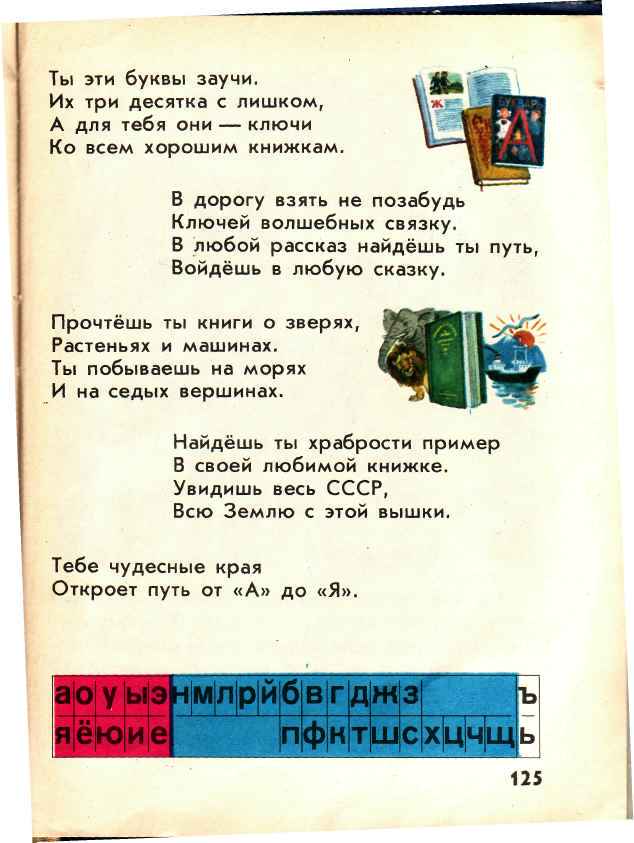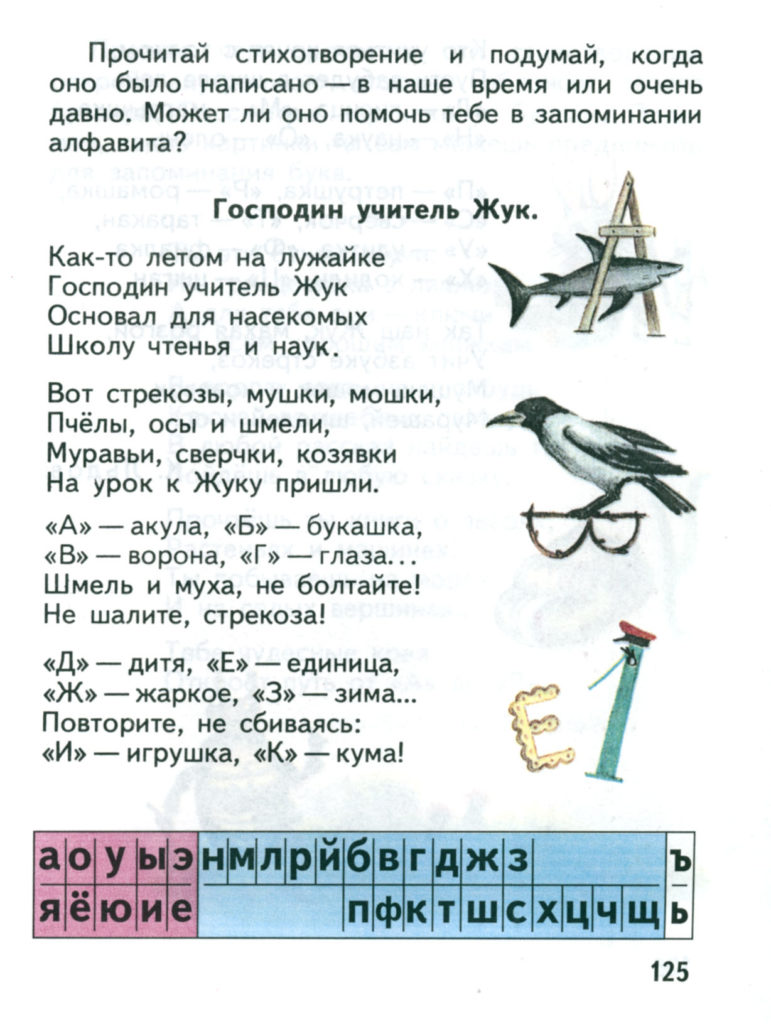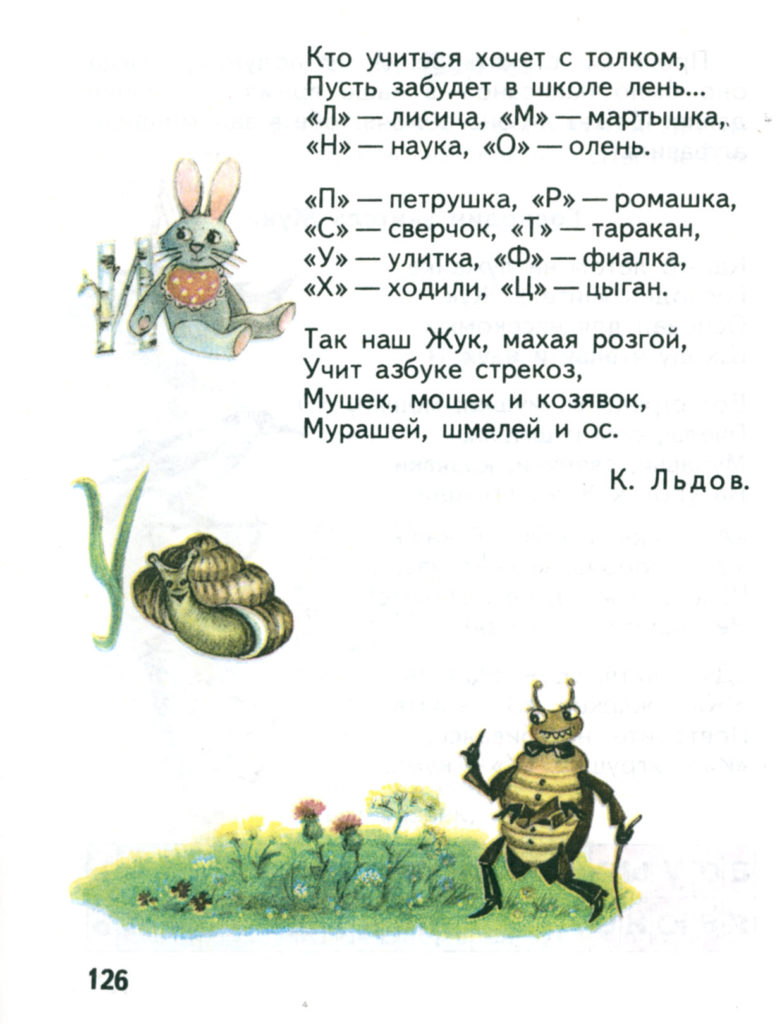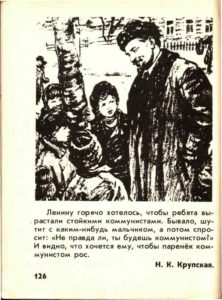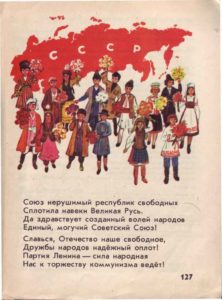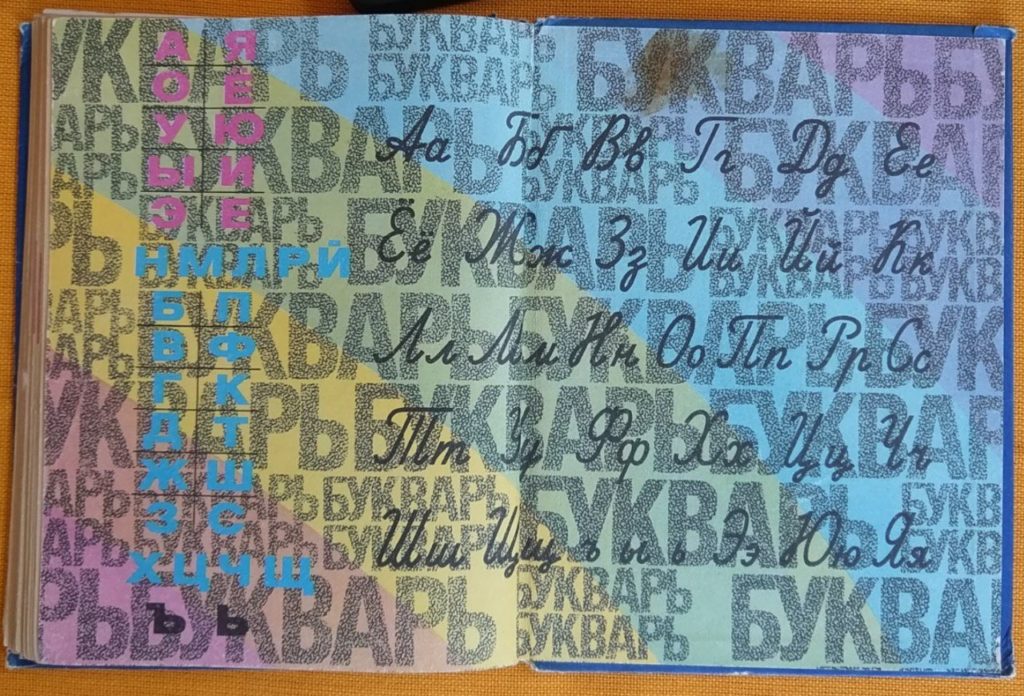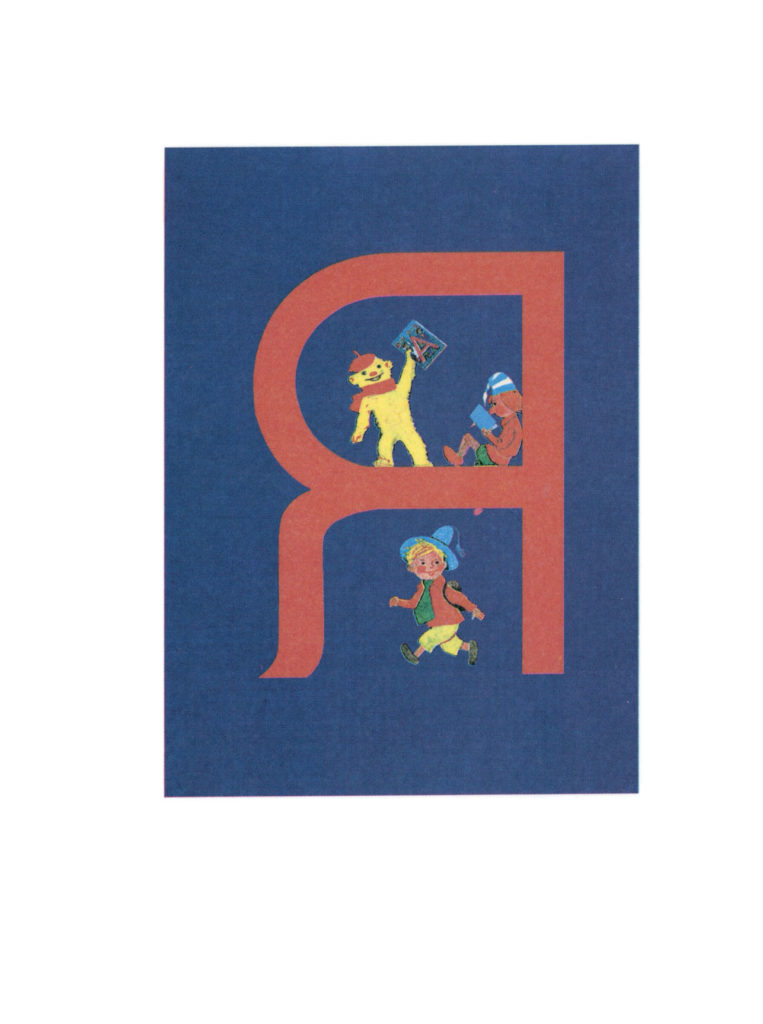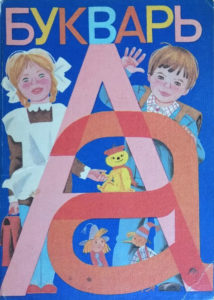The question of learning the Russian alphabet – or Azbuka, as it’s called in Russian – is one that occasionally pops up.
At the first glance, it may appear hard – 33 letters, half of which are unfamiliar or have a different reading from Latin. But that’s only at the first glance. The first-graders in Russia can do it, and so can you! 😁
Enter “Bukvar” – the letter learning book for the afore-mentioned first-graders. Its approach is to present letters not in the alphabetical order, but rather in such a way that new letters can be combined with the ones already learned to build more and more complex words and sentences. That way the learner builds associations between the shapes of the letters and the sounds they make in the words.
A foreign student can draw on most of this methodology. One part of the learning process that will require a work-around is the expected native-speaker fore-knowledge of how certain words sound.
After a very short introduction on the linguistic notation used in the book, one new letter is presented per day, with the explanations of the reading and of the example images used in Bukvar – this will be a great opportunity to learn new words while connecting the new letters to a context.
Should any questions to the materials arise, the readers are welcome to ask them in the chat of our Telegram channel “Beorn And The Shieldmaiden”!
This image covers the symbology. It’s something you can come back to as a reference throughout the book.
Another aspect of learning new letter is writing. Though few of us actually write using a pen nowadays, when learning new letters, writing makes for a good additional venue of memorisation – you start associating hand movements and strokes with the shapes of the letters. Here are two writing templates used by schoolchildren in conjunction with Bukvar’. I managed to find the versions that I myself used in the distant 1980s 😁
Template 1 — Template 2 (the 1985 edition, originally found here)
You can skip over the first 4 pages (they tackle hand coordination and fine motion of writing) and start on page 5, practising the letters as they come.
Another letter recognition aid that I created for this course is the complete alphabet, where each letter is shown using several different typefaces, some closer to the printed version of the letter, and some – to the handwritten one. The images from this aid will be given as we learn each new letter, but you can download the whole set for future reference.
Don’t try to take it in all at once, but rather take one letter per day, and play with it.
And now, imagine, that you have just come to your first day at school – on the 1st of September – and are getting into the learning mood by leafing through the first pages of Bukvar, thinking how wonderful it will be to when you can read all the words…
To help you get into the mood, here are two postcards – from 1956 and 1959 – greeting you on the 1st of September!
This course makes use of the 1996 edition of Bukvar (also downloadable as a PDF), which, while staying true to the methodology of the schoolbook used in the USSR, lost all of the imagery and text, connected to the patriotic education of the kids. Those curious can download the 1987 edition as a PDF (originally found here). Comparing the two editions can also be useful additional tool while learning the letters – you get more texts and images to connect the letters with.
Going even further back in time, The Shieldmaiden contributed a photocopy of a 1983 edition (as a PDF), which is the 3rd edition of the textbook. The print quality is more vibrant than in the later copies, and the phonetic templates and the letter table use a slightly different visualisation method.
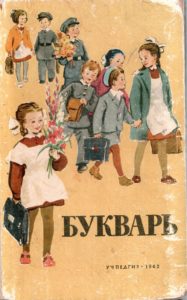 Another contribution from a friend is an even older edition of Bukvar – coming all the way from 1962! Here it can be downloaded as a PDF. That edition is completely different, with the letters presented to the pupil in a different order, combining the writing exercises into the same book, using different texts and illustrations. As part of the learning process, I would still suggest, you come back to it after you are done with the course at hand, and use the 1962 edition to both review the letters and to learn more words.
Another contribution from a friend is an even older edition of Bukvar – coming all the way from 1962! Here it can be downloaded as a PDF. That edition is completely different, with the letters presented to the pupil in a different order, combining the writing exercises into the same book, using different texts and illustrations. As part of the learning process, I would still suggest, you come back to it after you are done with the course at hand, and use the 1962 edition to both review the letters and to learn more words.
The first pages of Bukvar’ ease the pupil into the learning mode, mostly playing with images and the notation that will be used later in the book.
Day 1: “А а”
So, the first letter is easy, it is “А а” and it sounds as the vowel in “but”. For the speakers of the Scandinavian languages, “mat”, “hatt”, “takk” can be used as references.
For each new letter, both printed and handwritten forms are shown in the coloured square in the upper corner of the page. The colour itself indicates if it is a vowel (red) or a consonant (blue). Notice the difference between the printed and handwritten notation of letter “А а“.
For the example words I am going to use the Latin letters for those letters that we haven’t encountered yet:
These are:
“А́s-t-ra” (with the stress on the first А – “aster”)
“Ró-zа” (rose)
“Mа-k” (poppy)
This picture tells a folk tale “Turnip” of how one can accomplish any task if only that task is done in cooperation by the whole community. Here it takes the effort of grandfather, grandmother, granddaughter (“vnúch-ka”), the dog named “Zhúch-ka”, the cat (“kosh-ka”), and even the mouse (“mýsh-ka”) to pull out the turnip (“ré-pa” or “rép-ka”). Don’t dwell too much on the unfamiliar words, but note that they all end with the now-familiar “а”.
This is a row of letter “А” with different typefaces. The 6th pair is probably the closest to the handwritten style, but when reading actual texts, you may encounter anything in between.
Day 2: “О о”
The next letter is not much more difficult, than the previous one. It’s “О о“.
The letter is pronounced as “o” in the English “lot”, “walk”, “naught”. In the Scandinavian languages the same sound is conveyed with the letter “å”, and in Spanish, think how “loco” it is.
Make sure you do not pronounce it as a long “ou”! “Róza” is pronounced NOT like a “rose”. “Nos” is pronounces NOT like a “nose”.
Easy? Well, let’s make it a tad more difficult. If you are in Moscow, you’ll hear that “o” in the unstressed syllables is pronounced closer to “a”: “koróva” will sound as [karova] as the first “o” is not stressed. Don’t worry if you pronounce all “o“‘s as a rounded “o“, people with just think that you are from the Volga-region speaking local dialect. Incidentally, Belorussian formalised this “o“->”a” by actually writing “a” where it is heard.
The example word under the letter is the plural of “basses”: “о́-ku-ni” (remember from the notation, that red fields denote vowels, and mind the stress) – plural of a masculine word.
The other two fishes are:
“schú-ka” (pike) – feminine word
“sо-m” (catfish) – masculine word
And the picture of the children has some items with “o” in them, like “ú-doch-ka” (fishing rod, feminine) and “ved-ró” (bucket, neuter).
We now have two vowels! Hurrah! So it’s time to start systematising the letters. At the bottom of this page there is a table that will gradually get filled up with the new letters: red – vowels, blue – consonants, and white – modifier signs. For now, let’s have “a” and “o” in it!
The picture above the table is a fairy tale of how a fox tricked a wolf into believing that she (a fox – “li-sá” – is a feminine word) caught all the fish with her tail in a frozen lake while she, in fact, stole that fish from a passing merchant. He (a wolf – “volk” – is a masculine word) followed her advice and lost his tail as a result.
Day 3: “И и”
Today we are adding one more vowel to the list. This one has a writing that is different from the one familiar to the Latin alphabet users. The letter is “И и“. Note the diagonal line going from the lower left to the upper right – it is not a Latin N!
It makes the same “i”-sound as “i” in “hit”, and “ee” in “meet”. A special note on the vowel length. English has long and short vowels: compare “hit” and “meet”. In Russian vowels have the same short length. Try to never drag out the vowels.
The example word that matches the pattern is a “needle”: “и-gо́-l-kа” (hey, you already know 3 letters in this word!) As you may have guessed by the trailing “-a”, a needle is feminine in Russian. Mind the stress falling on the second syllable! The plural form of the word also matches the pattern: “и-gо́-l-kи“. I’ll touch upon the plural form of the feminine nouns again after we’ve learned another vowel.
The pictures have another noun with an “и” in it: a thread is a feminine “nи́-t-ka”.
I would strongly advise to write a few “И и” letters in the writing template block 1 – page 6, exercise 11 – so that you would memorise the shape. The script version is written almost like the Latin “u”. There’ll be a few such similarities in the other letters, so be aware of them and don’t let them confuse you.
Here is one way to remember which way to draw the diagonal line in “И”: Think of two Latin letters “ii” coming next to each other. How would you connect them in a handwritten style? They will look something like “ü”, right? And then you dorp the dots ¨ – you get the handwritten style of the Cyrillic “и”, with the same diagonal direction as when you connected two “ii”s.
Here is the new letter, added to our emerging systematic table.
The picture story above is the fable of how a fox (remember the word from the previous story? we can now add another letter to it: “lи-sа́”) offered some food to a stork (“а́-иst”, a masculine word as it ends with a consonant) on a plate, difficult for him to eat from, and then а́-иst repaid the “kindness” by offering lи-sа́ (or, more precisely: “lи-sé” in the dative case, but ignore it for now) some food from a jar, unreachable to her.
Day 4: “У у”
We are still on the vowels, and today’s letter is “У у“, which is not what you think it is, so unlearn what you’ve learned in English.
It sounds the same as “u” in “put” (or “soot”, but with short “u”-sound). Again, pay attention to not pronounce it as a long sound – we’ll have a different letter for that later.
The example words are (pay attention to the stress):
“У́-t-kа” (a duck) – feminine singular or “у́t-kи” in plural (the last letter is what we saw yesterday)
“gо́-lу-bи” (doves)
I am going to skip the word “hens” for now as the last sound is represented by a letter that we’ll examine tomorrow.
In the picture there is another fowl with letter “у” in it – “gуs” (masculine “goose” with the soft final “s” sound, as in “see”)
And here is the picture page, adding another letter to the table. The story is about a spotted “kу́-roch-ka” (diminutive from “kу́-rа” – hen) that laid a golden egg after a regular one – the last bit of food of the elderly couple – was broken by a mouse.
Exercise 12 on page 6 of template booklet 1 will let you practice a bit writing letter “у”, though knowing a similarly looking, yet unrelated Latin letter, this particular Cyrillic letter should present no problems.
Day 5: “Ы ы”
Let us pause and admire today’s vowel “Ы ы“! It is noteworthy for several reasons:
- First, it never appears at the start of a native Russian word, so the only way to see it capitalised, is if the whole word is written with the capital letters or if a non-Russian (e.g.: geographic name) word starts with it,
- Second, it’s writing is distinctly different from any Latin letter,
- And thirdly, it’s pronunciation is something that you will have to learn from scratch if you speak a Western-European language.
To tell you how to make the sound associated with “ы“, I’ll have to take an intermediate step. Remember how “И” is pronounced? (Hint: “i” as in “lit”). Now, pretend that you want to say that sound, but move your tongue half way back – not just the tip of the tongue, but shift the whole of it back. Try making the sound again, and you should end up pronouncing “ы“.
The instruction video below is an excelelnt reference to learn this slightly tricky sound:
As an extra aid, you can find two recordings of the sound, one on the IPA page for the “ɨ” symbol that describes the sound, and one on the Wikitionary page for letter “ы”. The sound on the IPA page is closer to the mark, but real-life use is is short, and not as drawn-out as in the example recording.
Confusingly enough, in the Latin transliteration, when writing Russian words in English, that sound is represented with the Latin letter “y”.
Now, this letter is very handy. It turns many nouns into their plural forms (and it also makes the genitive singular declension of the female nouns). Remember when we had the word for “hen” (kу́-rа), and I said that will come to the plural form later. Here it is: “kу́-rы”
The other images with the sound patterns are (we continue to use Latin characters for the letters that we haven’t learnt yet):
“shа-r” – masuline singular “balloon”
“shа-rы́” – masculine plural “balloons” (the stress actually falls on the final syllable with “ы”!)
“kу́-k-lа” – feminine singular “doll”
“kу́-k-lы” – feminine plural “dolls”
“rе́-pа” – feminine singular “turnip”
“rе́-pы” – feminine plural “turnips”
Here is how it falls into the systematic in the table, above letter “и”.
A few more plural nouns in the picture:
“s-lи́-vы” – feminine plural “plums”
“tы́-k-vы” – feminine plural “pumpkins” (two “ы” in one word!)
“rо́-zы” – feminine plural “roses”
A historical digression!
Chances are, you already know one Russian word that has this new mysterious vowel in it, you just don’t know that you know 😁
Year is 1814 and the Russian troops have dropped by Paris to ask the Frenchmen to play nicely and be kind to other people. The officers and the soldier alike are polite, courteous, and, above all, they always pay for their food and drink, leaving generous tips. There’s only one peculiarity – they don’t like the drawn-out meals, and like to have their meals served quickly. The local tavern owners and inn-keepers soon realised that there was money to be made on it, and like enterprising merchants everywhere in the world, they caught on a keyword that could bring these outlandish customers in.
But, unlike you now, they couldn’t quite pronounce or write one particularly tricky sound, so it got replaced with the closes thing they heard. And the customers, seeing that sign above an inn, could be sure that the owner was ready to provide a prompt service.
Thus was born the famous word “bistro”, which is actually “bы́s-trо” (if we disregard the writing of the unknown consonants for now), meaning “quick”, a word that you would use if you ask someone to be quick about something.
I would suggest practising writing letter “ы” and the other recent letters using the writing template – pages 6 and 7 in the first booklet (exercises 11-14).
Before we proceed to the next letter, our first consonant, let’s do a quick review.
Can we use these new vowels for something useful all by themselves? It turns out, we can.
“И” is the “and” union, combining two nouns: “this and that”.
“А” is a coordinating conjunction “but”: “not something, but some other thing”
Take a look at the picture:
“a scarf” и “a hat”
(not) “a backpack”, а “a pencil box”
(not) “a table”, а “a chair”
And when you are lost in the forest, you can scream “Ау́!” in the hopes of being found. Note the stress falling on “у”
The picture at the bottom does not need an explanation for what you scream when “о́-sы” (feminine plural of “wasps”) are out to take your watermelon.
Day 6: “Н н”
Today’s new letter is a consonant. Finally, we can make some simple sentences. The letter is “Н н” and it is pronounced as “n” – don’t get confused by its writing.
When a consonant is combined with a vowel to make a syllable, the consonant can end up being hard (marked with blue) or soft (marked with green). In a transliteration a soft consonant that stays by itself is marked with an apostrophe ” ‘ ” – we’ll come to the character that makes consonants soft later on.
So:
на – hard sound as in “nut”
но – hard sound as in “not”
ни – soft sound as in “near”
ны – hard sound as in… well, you should be able to read it after learning yesterday’s unique letter
ну – hard sound as in “noodle”
What are the children on the horse saying? Hint: it is NOT a Santa Clause sound!
The example image below the letter is masculine (as it ends on a consonant) singular “a drum” – “bа-rа-bа́-н” (note where the stress falls!)
A masculine singular “horse” has an error in the diagram – the blue triangle should have been white as we haven’t learned that letter yet.
It is ” kо-н‘ ” with a soft “н“.
For writing practice, go to pages 7-9 in the first writing template booklet (exercises 14-16)
We can now write two girl names: “И́нна” and “Ни́на”. When reading a double consonant, you draw out its pronunciation for two beats instead of pronouncing it twice.
In the pictures below the boys offer a balloon (shаr) and a drum (bаrаbа́н).
“На, ” indicates an offer, like “here” in English with a verb being omitted:
“На, И́нна, shаr.” – “Here, Inna, (take the) balloon”
“У” in the second sentence of each pair indicates the location of possession. Think “with”.
“У И́нны shаr” – “with Inna (is the) ball”, in other words – “Inna has the ball”. Note that “with Inna” is a genitive case, and so the ending of the girl’s name changes to reflect that: “И́нна” – nominative; “И́нны” – genitive.
Can you read the sentences for the other girl? Note that “н” in “ни” is pronounced soft.
Here are a few more images with the usage of the letter “н“. You can see a new girl’s name, placed in genitive case (the name itself is a short from of the name “А́нна”). Note the the questioning sentence that starts with an “А” – “А у Ни́ны?” (her name is also in the genitive case). Here this letter plays the same role as “and” in “And what about Nina?” Literally you are asking “And with Nina (what is there)?”
And then there are 4 handy words that you can now read:
он – he
она́ – she
они́ – they
оно́ – it
Here is our new consonant “н” in the table!
Day 7: “Т т”
Today’s new consonant is super easy! it is “Т т“. It is pronounced as “T t”.
Just pay attention to the slight difference in writing in its small printed form – there is no sticking-out business there. The handwritten from is different, though, so here you should take the writing templates to the aid.
As with “н”, the consonant will be either soft or hard depending on the vowel following it, when it stands in a syllable. Can you see which one will be soft?
The colour print on this page has an error, so the phonetic templates look off.
The two words with the phonetic patterns are (here the authors managed to include several letters that we still haven’t learnt yet!):
“Тr-и” – (blue-green-red) – Three (3)
“Pja-т‘ ” – (green-red-green) – Five (5) Pay attention to the soft reading of the “т“, with that marker at the end.
With this new letter we can add a couple of words to our vocabulary, as seen from the two sentences at the bottom of the page:
“Тут” mean “here”, and the sentence reads “Here (are) Nata and Anna”, with the implied verb “to be”.
The second word is “но́ты” – feminine plural of the word “но́та” – “a musical note”. When used in the plural from it means an album with the sheet music.
The writing exercises are on pages 9 and 10 of the first template booklet (exercises 17 and 18).
Let’s add a boy’s name to our list. You can read it, just pay attention to where the stress falls!
The little exercise below prompts you to place the correct syllable in the correct row. Can you do it?
Here are two more pages to help fixate letter “т” in memory before we move on. You should be able to read all of the text with ease, including the types of the airplanes. The two words in the pictures that we still haven’t leant the letters for are: “mи́sh-kа” (a little bear) “mа-shи́-nа” (a car). “Анто́на” is a genitive case of the personal name “Анто́н” (the dot above the “а” is a print error, and is not a part of the letter).
The table with the letters is getting another character! As for the picture, the children (that is, you) are invited to re-tell the last fragment of a well-known folk tale about “те-rе-mо́k”, a traditional Russian house, that gets inhabited by various forest creatures. Here are two renditions of it:
A folk version, with a darker ending, where the bear is not a nice character, and a later fable-like rendition, where the bear makes amends.
A special note on genders in Russian
Russian is a gendered language. Nouns can be either feminine, masculine or neuter. Adjectives always agree with the noun in their gender (like in Spanish). The verbs agree with the subject in the past tense only.
Determining the gender of a noun is really easy most of the time.
- Feminine – Nouns ending on “а” and “я” (e.g.: ро́за)
- Neuter – Nouns ending on “о” and “е” (e.g.: ле́то). The exception is “coffee” – “ко́фе”
- Masculine – Nouns ending with a consonant (+ “coffee” – “ко́фе”) (e.g.: кот)
That should cover about 90% of all the cases!
The difficult bit comes with the nouns ending with the soft sign which we will cover much later in the course. There, some nouns are masculine, and some are feminine. There are certain patterns there as well, and we’ll come to that once we cover more letters.
Day 8: “К к”
Today’s letter is again super-easy. It’s “К к“. Just like with “т”, pay attention to the small character that does not stick out, other wise you are good to go – it’s read just like “k” in “kit-kat”.
You may notice one peculiarity with the listed syllables. If you spotted the absence of “кы”, congratulations – that’s a syllable that you will never meet in the wild, except for some non-Russian geographic names.
But you will meet cats. In this particular short story, a male cat is called by three different names – a regular “кот”, a diminutive form “ко́тик“, and an praising “кото́к“. Other words of note are the question words “how” – “как“, and “who” – “кто”.
The crayfish in the template is the masculine “rа-к” and its plural form “rа́-ки”.
Writing exercises are 19 and 20 on pages 11 and 12 in the first writing template booklet.
And now you can ask some simple questions, like: “Кто так?” – “Who (speaks) like that?” (the verb is implied)
And you can play some word games! Reorder the letters in the word “ни́тка” (a thread, feminine) according to the numbers to get another word. Look it up in the dictionary! Same with the word “кот”!
What would happen to both initial words if you switch letters “о” and “и” in them? What new words will you get?
Here are a few more exercises with the new letters:
The first one is making plural forms out of masculine and feminine nouns. Can you see a pattern?
What are the properties of “ни́тка” and of “кана́т”?
The word “ка-то́к” can have two meanings, as the pictures suggest.
And finally, see that cartoon character “Neznájka” sitting on a phonetic template with a lot of letters and syllables before him? Which of the existing ones can form a valid words that you’ve already learnt? Some of the notes have missing letters that you can add to fit into the template.
Let’s place this new letter “К к” into the system – you will soon start seeing a pattern emerging from this table.
Oh, and exercises are good both for the brain and for the body. There will be more exercises as we learn more characters, and they offer an excellent opportunity to both explore the next letters and to learn new words and grammar.
So, how did the exercise on page 32 go? Did you manage to make a masculine noun “whale” (кит) out of a male cat (кот)? And turning “Кот” into “кто”?
The first word had two transformations:
“ни́тка” – “но́тка” (a thread into a “small musical note” both feminine singular)
“ни́тка” – “тка́ни” (a thread into feminine plural “textiles”)
We are venturing into the part of Bukvar’ that has more and more texts. And that in turn will require of you some dictionary look-ups. One method that I think will give the best result is to use Yandex Translate and translate one word at a time, typing the word in manually while using the book as a reference. On a mobile phone, I would strongly advise installing the Russian keyboard – this is easy on both iPhone and Android. If you are using a PC, Yandex offers a virtual keyboard on the translation page. The layout will be the same as on a Russian typewriter. Additionally you would be able to hear how that word is pronounced, and see the gender if the word in question is gendered.
Day 9: “С с”
Whoever said that Russian alphabet is difficult? Today’s letter is “С с“. It is read as “S”, but it may be easier for you to think of it as “C” in “city”.
It can be both hard and soft, and you already know which one of the so-far familiar vowels will make it soft.
The top phonetic template stands for “le-с” – “a forest”, with a hard “с” at the end.
The phonetic template word under the “moose” is ” lо-с‘ ” with a soft “с” at the end.
Read the four new words – they are shown side by side in singular and plural forms. The first two are feminine, the other two are masculine – the pattern that you noticed earlier continues here. Just pay attention how the stress changes in some of the words when they change the form.
And the tiny story at the end is something that you should be able to read. The only word with “unfamiliar” characters is “bе́l-ка” (“squirrel”, feminine singular)
“Оси́нки” is a plural diminutive form of the feminine noun “оси́на”.
If you feel like practising writing this letter, head to exercises 21 and 22 on pages 12 – 13 of the first writing template booklet.
A small digression about the prefix “со-” (read as “so-“) that denotes unity. Latin/English letter “c” and its conflicting reading as either “k” or “s” depending on the following vowel, changed the reading of this prefix, though its meaning and writing are exactly the same in Russian and the Latin-derived languages. In fact, the name of the USSR – СССР – has three words making use of this unity prefix!
Here are a few examples: “сотру́дничество” (lit.: co-working) – “cooperation”; “созна́ние” (lit.: “con-science / co-knowledge) – “conscience”.
The unity prefix is also used in a number of Russian words, where the English equivalent does not have them, e.g.: “созида́ть” (lit.: “to give this together” / “to co-produce something”) – “to build”.
In fact, if you browse the words starting on “со-” in a Russian dictionary, you’ll discover that almost half of them have something to do with “togetherness” at one or another level.
Now we can play a few more word games:
Note how the change in stress changes entirely the meaning of a word: “стои́т” (it stands) – “сто́ит” (it costs)
Try to build as many (valid!) words as you can from the strewn syllables and letters.
Follow the arrows, and you can build the words: коса́, са́ни, ни́ти, ко́ни.
Using the numbers and rearranging the word “насо́с” (a pump, and you know its gender!), you’ll get a pine tree – can you read it?!
And what does a pine tree have? A branch stub, a twig – “сук”, where you can replace “у” with “о” to get a drink. Which drink is it? (And don’t let Portuguese tell you that you don’t need to replace that letter!)
On this page there are a few very simple texts that will both let you train in letter “с“, and have your first play on the Russian words: the noun “коса́” can mean both “a plait” and “a scythe”. The verb ” ко́сит’ ” (with soft “т” at the end) means “to mow” (and it can also mean “to squint”), with the hard “т” it becomes a first person present tense verb, and “коси́” with the stress on the last letter is the imperative form of the verb.
Once we learn more letters, I’ll come back to this word to give you an even more elaborate word play with it.
Here is the table of the letters with “С с” added to it! And another word game which is perfect to learn new Russian words – take the image and try to find its corresponding word in the phonetic template. Use the dictionary as your aid, and if you are stumped, ask!
An intermission – soft consonants vs. hard consonants
The concept of soft vs. hard consonants cropped up several times. This concept is important in Russian, and luckily it is in part similar to the how the softness of consonants changes in English and the Scandinavian languages.
Let’s first take a look at a couple of word pairs in English:
“see” – the “s” is soft
“saw” – the “s” is hard
“tea” – the “t” is soft
“tell” – the “t” is hard
“kiss” – the “k”-sound is soft
“call” – the “k”-sound is hard
In Russian there is a very specific system that governs when a consonant will sound hard or soft in such a “consonant-vowel” syllable. Of the vowels that we’ve learned so far, only “и” will turn the preceding consonant soft. For the sake of completeness, there are a couple of consonants that are either always-hard or always-soft, but we will study them closer to the end of the course.
The default state of a consonant can be said to be hard.
Where Russian differs from English, is that a consonant can be soft by itself, if it is marked by a soft sign “ь”. In English transliteration we are using the apostrophe to mark such a consonant.
So, back to the word pair “see” – “saw”. Repeat it a few times… Now stop saying the vowel portion of these two words: ” s’ ” – ” s “. You should hear the soft-hard pair of the consonants.
Listen to the following word pairs, using Yandex translate:
Кот – кит – “К” turns from hard to soft thanks to “и” in the second word
Кон – конь – “н” turns from hard to soft thanks to the soft sign
Day 10: “Л л”
Today’s consonant is “Л л” with the reading “L” as in “latin”, “look”, “little”, a shape that is not familiar to you from the Latin alphabet, so take some time to let it sink in – both for its printed and handwritten forms.
In syllables is can be either hard or soft following exactly the same pattern as for the previous consonants.
The phonetic template words are:
“с-то-л” – “a table”, which, as you should be able to deduce, is a masculine noun.
“rу-л‘ ” – ” a steering wheel” with a soft “л” at the end thanks to the soft marker. This word is related to the English word “to rule”, and for a reason – it is a loanword from English.
Another noteworthy word is the past tense of the verb “to look for” : “ис-ка́-л” (when referring to a boy doing the action) and “ис-ка́-ла” (when it’s a girl)
You should be able to read the simple text at the bottom of the page, just be on the lookout for the the genitive case of another new noun: “кали́тка” – “a wicket gate”.
Don’t forget the writing exercises as it’s been a while since you last practised handwriting (even in English!). Writing exercises are 21 through 24 on pages 12-15 in the first writing template booklet.
Look how many words you can read! In the first word game you are offered to find a word that starts with letter “Л” – you already know the name of that animal in Russian from the previous lessons!
The word “лук” can have two meanings as the text and the picture suggests.
Can you make the Russian word for “power” out of a “fox”? A mighty fox you will be!
And finally, what will you get if you replace just one letter “о” in a “table”? Those knowing the Scandinavian languages might get a little surprise here.
A few more reading exercises with some new words. Incidentally, the picture is from the Soviet times, when all kids had a hot meal at school during the long break.
The word pairs in bold are:
“стол” – “сто́лик” – A table and its diminutive masculine form, “a little table” that is created using the “-ик” suffix.
“лил” – “нали́л” – This is a pair of verbs forms of “to pour” in the past tense, masculine. The first one is a continuous form “he was pouring”, and the second one is in the perfect form: “he has poured”.
“соли́л” – “сала́т”. These two are unrelated: “соли́л” means “he was salting”. “сала́т” is simply “salad”.
A small digression: there is one curiosity in the text: “Он нали́л соку” – “He has poured juice”. The noun juice is in a case that no longer officially exists in Russian, but is still often in use – the students are told that it’s “just an exception reading”. “Со́ку” is what was once the “partitive case” (“Коли́чественно-отдели́тельный падеж”)
Adding “Л л” to the table, you could probably start seeing a certain pattern emerge.
One more picture-to-phonetic-pattern game with the image of “Neznájka” cartoon character in the middle, formed out of the threads. The cat image has two threads coming out of it – can you see why?
Day 11: “Р р”
Another consonant to add to the Latin-Cyrillic confusion. the letter is “Р р” and its read almost as “r” in “read”, “root” or “frank”. The sound has more roll to it, closer to the rolling “r” in Spanish – “perro”. And you already know when it will sound hard or soft.
Pay attention to the difference between the handwritten and the print forms of the letter!
The words in the phonetic templates consist mostly of the consonants that we haven’t leant yet, so I’ll write them both in Cyrillic and using transliteration:
“па́р-та” [par-ta] is “a desk” (feminine), and
“дверь” [dver’] (with the soft “р” at the end) is “a door”, which is also a feminine noun
The new words below the picture are:
“ра́-на” a wound (feminine as you already can see from the word ending) and its diminutive counterpart – “ра́н-ка”, “a small wound”.
“санита́ры” is the plural form of the masculine noun “санита́р”.
More new words: “a cactus”, “to grow” and “to touch”:
“ка́ктусы” is just a plural form of the masculine noun “ка́ктус”, but you already could deduce both facts, based on the previous exercises, right?
“росли́” is a plural past tense of the verb “to grow” – “they grew”
“расту́т” is a plural present (continuous) tense of the verb “to grow” – “they grow” / “they are growing”. Note how the vowel “а” and “о” substitute each other. This is something that you will observe in other words at times.
“тро́нули” is the plural past tense of the verb “to touch” – “they touched”
“тро́нул” is the singular masculine past tense of “to touch” – “he touched”
In the tiny story you’ll come across all these words, but see what happens to the past tense verbs, as the story is about a girl?
And finally two word games (how do first-graders solve them?!)
A “water tap” turning into a “wound”… A genitive case of the noun “crayfish” becoming a nominative “hand”. Can you see these words?
Writing exercises 25 and 26 are on pages 15-17! They should help you memorise the shapes and the sounds related to those shapes.
Another reading exercise with a slightly more complex text.
I want to draw attention to a couple of words:
The second word in the column: “ли́лии” is the plural form of a feminine noun, a flower “lily”. When two vowels appear after each other like that, both are spoken as separate vowels with a slight drop in volume between the adjacent vowels. Just don’t overdo it: “ли́-ли-и”
The next-to-last word in the top column: “раскра́сила” is the past perfect feminine form of the verb “to paint” – “she painted”
A fun word at the bottom of the page: “ки́сти”, a plural masculine noun from “кист’ ” (with a soft “т” at the end). This noun has several meanings, as the picture applies. There is even one more meaning that is not in the picture: “a wrist”.
Let’s place the new “Р р” letter into the system, and then play some word games placing the words into their phonetic templates.
The top one: can you find the one word that goes into the template with the soft first consonant?
The second game is a pure match-them-up!
Day 12: “В в”
We continue our leisurely stroll among the consonants, just to make you feel relaxed, before a new vowel makes an appearance.
Today’s letter is “В в“, which is read as “V” in “Victory” or “Volt”. Again, one syllable here will make the “в” sound soft.
The phonetic templates correspond to the words:
“в-ра-та́-р’ ” – “a goal-keep”, which is a masculine noun with a soft “р” at the end.
“ло́-ви-т” – a present continuous verb “he/she is catching”
Other words of note are:
“тво-и́” – plural possessive second person pronoun – “your”, as in “your goalpost”
“сво-и́” – plural reflective second person pronoun – “his” or “her”, as in “his goalpost”
An astute student may ask: Plural? Goalpost? In Russian the word “воро́та” (gate, gates, goalpost) is always plural, just like “the city gates” in English.
“ло-ви́” is an imperative form of the verb “to catch”. Note the stress falling on the second syllable.
Can you read the little story?
The handwritten form is really close to the printed one, so that part is, at least, easy. But practice makes perfect, and the handwriting exercises 27 and 28 for that perfection are to be found on pages 17-18 of the first booklet.
Time for some games, but first a short fable about how a fox was catching crows by playing dead.
But why is is written that the boy is also catching crows? That’s a set phrase, meaning that someone is inattentive, with a wandering mind.
Buratíno has two syllables that turn one word into another – you can read both!
A variation on the same game is in the middle bottom picture, too.
And the picture in the corner invites you to insert the new letter “в” to make two animals.
Here are a few more words that give a subtle grammar lesson. They are all based on the root that means “grow”.
рос – вы́рос – “he grew” / “he was growing” – “he has finished growing” (intransitive verb)
росла́ – вы́росла – “she grew” / “she was growing” – “she has finished growing” (intransitive verb)
расти́л – вы́растил – “he was raising something up” – “she has finished raising something up”. The meaning of this pair is “to tend to something so that it grows”. (transitive verb!)
Can you see the patterns for gender and tense? You will see this “вы-” prefix later on. In English it roughly corresponds to the preposition “out”, as in “came out”, “turned out”, “outcome”.
Where would your inner 7-year-old playing from time to time? So here is another pair of word games: in the first square is the vegetable that the children are carrying. In the second square you are to strategically replace letter “с” with “л” to make a new word – another vegetable that makes you cry when you chop it up.
After placing letter “В в” into the table, let’s play a few more games. The phonetic templates and the words have become mixed up – can you match them?
I’ll leave the second game up to you – if you manage to read the task, you can then unleash your inner 7-year-old self!
Day 13: “Е е”
Today we will be learning the first Russian vowel that is comprised of two sounds – a consonant preceding a vowel. This construct is known as a “syllabema”. Its writing is easy, and you will be immediately comfortable with it, but the reading will vary, depending on the surroundings, so you need to pay attention to how you pronounce this character.
Let me introduce you to “Е е“!
Being a syllabema means that the letter describes two sounds joined together, and sure enough its sound is “je”. Note that the sound often gets transliterated to Latin as both “ye” and “je”. The English words that closely approximate this sound are: “yellow”, “yet”, “yes”.
The letter will produce this “je” sound:
1. when a word starts with it, or
2. when it follows another vowel, or
3. when it comes after a hard of soft sign (we will cover them later in the course).
On this page we see examples of the first two cases. See how the phonetic template sets aside a two-coloured syllable block for “е“? That’s because the first sound is seen as a soft consonant “j”.
“е́-ли” – “they ate”, but it is also a word for the plural noun “firs”, as can be seen from the illustration.
“е́-ла” – “she ate”
“ел” – “he ate” (by now you are, of course, fully comfortable with the gendered past tense verbs and the way they are formed!)
The second case is seen in the following present continuos verbs. Note that the present (and future) tense verbs are not gendered!
“ро́-ет” – “he/she/it is digging”
“во́-ет” – “he/she/it is howling”
“ла́-ет” – “he/she/it is barking”
“ку-са́-ет” – “he/she/it is biting”
And the plural adjectives:
“е-ло́-вы-е” – “of the fir kind”, as in “fir needles”
“сос-но́-вы-е” – “of the pine kind”, as in “pine needles”
Now you can read the three short sentences! The unknown word is “mа-ли́-ну” (we haven’t learnt the letter “m” yet), which means “raspberry” in the genitive case.
Let’s see what happens when “е” appears within a word, after a consonant as part of a syllable. It makes the preceding consonant soft (the same way as how we’ve seen “и” softening the preceding consonant). Meanwhile “е” itself is pronounced not as a syllabema, but as a short “e” in the English word “let”. Try saying “lee”, and notice the soft “l”, now combine that soft “l” with “-et” from “let”, and you’ll get the correct pronunciation. In facts, the word “лет” means “years” in genitive case. Take a listen, using Yandex Translate.
You, probably, already know the Russian word for “no” – “нет”. The biggest mistake that gives away a foreigner, is if the speaker pronounces that “е” as a dual “ye” sound! So, mind the “е”.
Again, make sure you do not pronounce “е” as a dual sound when it is a part of a syllable with a preceding consonant!
The phonetic template is for the noun “forest” – “лес”, note how the first triangle is green, marking a soft consonant.
You should be able to read the short story (with a dictionary, but still!) Make good use of all the letters that you’ve leaned so far.
And it’s the first time that the exercise task is actually written, so you can read it, and then do what is asked of you.
Bringing it all together, you should be able to read this sentence out loud (and understand it).
Here is our new letter “е” in the systematic table.
The top game is about the past tense of the word “to eat”, and how it changes with gender and number. Can you deduce the pattern from the personal pronouns in the second column?
In the third column the word “to eat” is in the present tense. The conjugation occurs according to person:
(Ja) ем – I am eating
Он/Она́/Оно́ ест – He/she/it is eating
Он/Она́/Оно́ пое́ст – He/she/it would be eating. or He/she/it is about to eat.
Then come two lines with your very first tongue-twister! “Е́ле–е́ле” means “barely” or “very slowly”, so “Lena was eating very slowly”. But why was she eating like that?
The next is a set of questions and picture-answers. As in the previous exercise, read out loud, paying attention to how you say “е“, depending on where it appears.
And finally, some fun with changing of where the stress falls in a word, turning “a village” into a past neuter conjugation of the verb “to sit”.
If you feel like doing some writing, the exercises 29-31 are on pages 19-21 of the first writing template booklet.
As a small historical digression: you may wonder why doesn’t Russian have different letters for these two versions of the sound, recorded with letter “е“. Before the reform of 1918, there was, actually a separate letter “Ѣ ѣ” (mostly) used for the second type of reading within syllables. Its actual pronunciation, though, with time became very close to that of “е”. Add to that several inconsistencies as to where which letter should be used, requiring students to memorise long lists of words with “Ѣ ѣ” (hello, English with its strait straights), and simplification might not have been such a bad idea after all, despite creating some homonyms in the process.
Day 14: “П п”
We are back consonants, and today’s letter is “П п“, which sounds as “p” in “petrol”. If it helps, you can remember it by thinking of the famous mathematical symbol of the Greek origin – π – “pi”.
The two words in the phonetic templates are:
“сe-р-п” – a sickle. Pay attention to the pronunciation of the consonants: it’s like “pr-“ in “prefix”, but in reverse.
“пи-ла́” – a saw.
Which two syllable pairs will make “п” sound soft?
A few new words with this letter at the very top:
I’ve already mentioned the saw…
“пи́лит” – is the present tense third person conjugation of the verb “to saw” – “he/she saws” or “he/she is sawing”.
“пло́тник” – a carpenter
“по́вар” – a cook
“пило́т” – a pilot (easy, right!)
“капита́н” – a captain
“сталева́р” – a steelworker
You may have noticed that all these names of the professions appear in the masculine form. With one exception, the masculine form will be used even if the person is female. The exception is “a cook”, which in the feminine form is “по-ва-ри́-hа” (we haven’t come to one of the letters yet!), however the masculine form will normally be used, sounding more formal and respectful.
After a short text describing which profession has the father of each child, there is a little word game: match the three professions with their corresponding action verbs. Let the dictionary be your helper!
Here we have another play on words and the importance of placing the stress properly:
“пила́” – “she drank” or “a saw”
“пил” – “he drank”
“пи́ли” – “they drank” (with the stress on the first syllable)
“пили́” – “saw!” (an imperative form of the verb “to saw”, when the stress is on the second syllable)
“пили́л” – “he was sawing” (with the stress on the second syllable)
Then comes a short story about a cook. Yes, she is female, but with the name of the profession being in the masculine form.
And at the bottom there are two sentences playing on the above word play, imbued into the word “пила́”.
The writing exercises 32 and 33 for this new letter are on pages 21 and 22. Notice that the script version of the small “п” looks similar to the Latin “n” – don’t let that confuse you!
Ready for a read-and-understand game? There is a short text at the top. After reading it, try to fill in the blanks (actually writing your answers) with the names of the toys that each of the four kids has.
At the very bottom there is a letter substitution game:
“п_лка” – filling the blank with the suggested vowels will make sense in 3 of the 4 cases.
So, here is our systematic table with letter “П п” added in!
There are a few words under the counter for you to read. Can you master such a long word as “пластили́н”?
One pair would require an additional explanation:
“ку-пи́” – is an imperative form of the verb “to buy”
“ку-пи́л” – and this is a past tense masculine conjunction: “he bought” (looking at how the English verb changes, don’t say that Russian is difficult)
And finally, a very short story “Поку́пки” – “Purchases”/”Shopping” to describe the picture at the top of the page. Don’t skip it!
Day 15: “М м”
After some difficult letters, let’s take on a relaxingly easy one. It’s “М м” – that’s it, just like the Latin “M m”, nothing complicated. Maybe, one thing: notice how the small “м” is written.
The customary list of syllables lets you practice where “м” is pronounced soft and where – hard.
The two phonetic templates match the words:
“до-м” – a house
“се-м‘ ” – number seven, with a soft “м” at the end thanks to that mystery marker.
One word that we associate the most with the letter “М” is “метро”. Unlike in English, the stress falls on the last syllable, and you, naturally, remember that “о” is NOT pronounced as a long vowel “ou”.
“Строи́тели” is the plural noun “builders” or “construction workers”. Can you read the story and tell where little Roma’s (a short name of “Рома́н”) parents worked?
The handwriting exercises 34 and 35 are to be found on pages 23 and 24 of the first template booklet.
Here is another, this time longer, story about who will become who by profession. Note that the occupation names are in the instrumental case, answering the rhyming question “кем” – “whom”, ending with “-ом” / “-ем“:
Кем он станет – Whom will he become?
Исто́риком – A historian
Can you answer the question at the end of the story?
One more story, “На уро́ке” – “At a lesson”. The noun “lesson” – “урок” is in the prepositional case.
This letter is one coming with a lot of stories, and we will see more and longer texts going forward, allowing us to practice reading the ever-growing number of the letters that we’ve already learnt.
Here we also see where the new letter “М м” gets placed in the systematic table.
Can you answer who is Ира in the story “Кро́лики”?
Day 16: “З з”
Today’s letter is “З з“. The Latin letter “z” is closely related to it. In the past this letter was written as a “z” with a small tail going down from it (ꙁ), and the lower-case handwritten version is still drawn the same in both Russian and English. The letter is pronounced as “ze” (without that final “t” in “zet”).
The phonetic templates are:
“з-ме́-и” – plural “snakes”
“зе́-b-ра” – “a zebra” (we haven’t learnt the consonant in the middle yet)
The short story introduces a few animals, but also the plural past continuous tense of the verbs:
“зимова́ли” – “they were spending winter”,
“заполза́ли” – “they were crawling in”
“засыпа́ли” – “they were falling asleep” (Incidentally, simply changing the stress to “засы́пали” will turn the word into “they have filled/covered something using some granular material”, e.g.: “buried under earth”)
The handwriting exercises 36 and 37 for this letter (and a small recap) are to be found on pages 25-27 of the first template booklet.
On this page there is another short story. Learning letters means that you can start using them to read, even if with a dictionary. Which colours are mentioned in this story?
There is one word pare, where the consonant and the stress change, also change the meaning of the word, take a look:
“ро́за” – a rose, with the stress on the first syllable
“роса́” – dew, with the stress on the second syllable.
From the previous word pair, you may have noticed one thing: “з” and “с” for a pair of a voiced and voiceless consonants. This is illustrated in the table on this page. Note that both consonants appear as soft or hard, depending on the vowel in the syllable.
Another little story, with a question, that you may be too shy to answer.
As you see from the systematic table, letter “З з” is a voiced counterpart of “с”.
Read a short story and try to copy out all the words with the new letter.
Two words in bold that require some grammatical attention:
“ползу́т” – is the present (continuous) plural verb “they crawl”/”they are crawling”
“полз” – is the past tense masculine form: “he crawled”
PS: The pre-1992 edition of Bukvar honoured the WWII veteran on the page about the roses.
Day 17: “Б б”
Today we continue out trip to зоопарк, and introduce a new consonant “Б б“, which corresponds to the Latin “B b”. When making Latin, someone did have to mix up “б” and “b” , “в” and “v”. The confusion could have arisen in the gradual shift between the plosive and fricative sounds, as can be seen in modern Spanish, where, for example, the word “vaca” (“a cow”) is pronounced as “baca”.
One way to remember the sound of “б” is this: the Russian name of the “alphabet” is “азбука”, called so after the mnemonic names of the first two letters. Each name has a specific meaning, and together they build a cohesive message. With the subsequent addition of the Greek letters and the removal of some old letters, the message got a bit garbled, but still legible. Az – was previously used for “I” as a first person pronoun (and is still used like that in the Church-Slavic) .The same word as in Norwegian “As” (think Asgard) and English “ace”. Buki – some now interpret it as “bogi” (gods), but that is more of a neo-pagan approach. The self-name name “А́збука” indicates the reading of “buki”, and there we see modern-day Russian word “bukva” – “letter”, which also meant “writing” in the olden days, Norwegian “bok”, and English “book”. So here you have it: “б” as in “book”.
But back to “б“! The phonetic templates under the blue square are:
“зу-б-р” – “a bison”, which can, incidentally, also be written in Russian as “би-зо́-н”, with the stress on “о”)
“gо́-лу-би” – plural “doves” of a masculine ” gо́-лу-б‘ ” (we haven’t learnt the letter for “g” yet)
Here are a few more animals:
“зе́бра” – a zebra
“ко́бра” – a cobra
“бе́лка” – a squirrel
“барсу́к” – a badger
Can you find the word for “fence” in the text – it is in the prepositional case? And the word “burrow” (in the dative case)?
A little match-’em-up game before we proceed to another text.
And then a text with one difficult to read word: “рассма́тривал” (“he was looking at something in detail” / “he was examining visually”). After reading this story, what can you say about the boy named Виталик?
More short stories about Виталик. Who is Бо́бик? Can you say something about the gender of this character?
And then comes Ба́рсик! There is a question at the end of the story, can you answer it?
Remember the yesterday’s letter and what was the difference between “з” and “с” sounds? The same voiced-voiceless principle applies to our new letter, and the one that we’ve already learnt: the voiceless “п” becomes the voiced “б“, as can be seen from the two examples at the bottom of the page:
столб – “a pole” (as in telegraph pole)
серп – “a sickle”
столбы́ – “poles”
серпы́ – “sickles”
And sure enough, that’s where “Б б” was added in the systematic table!
The story “В библиоте́ке” mentions fables, and one specific fable by “Крыло́в”. I won’t be asking you to answer the question after the story, though.
The writing exercises for буква “Б б” are 38 and 39 on pages 27-29 of the first template. And here are a few typefaces showing both the printed and the handwritten versions of the letter.
As a digression, here is a humorous variation on a fable from the previous page, a fragment of a cartoon “The Plasticine Crow”.
Day 18: “Д д”
Today we continue with the voiced counterparts of the voiceless consonants that we’ve learnt earlier – буква “Д д“. It is pronounced the same as the English “D” in the word “deck”. As you’ve come to expect, it can come in both the hard and the soft form, depending on the vowel in the syllable.
Note the difference between the printed and the handwritten forms! Don’t confuse the handwritten lower case “д” with the Latin “g”! To help you familiarise with the shape of this letter, use the writing temple 1 and exercises 40 and 41 on pages 29-31.
The two phonetic templates matched these words:
“д-ва” – number “two” in the nominative masculine singular case or
“д-вe” – number “two” in the nominative feminine singular case.
“g-во́-з-ди” – Plural of “nails” (we haven’t learnt the letter for “g” yet)
Here are the new words in bold:
“во-да́” – “water” (you can hear how these words are related)
“во́д-ны-е” – plural adjective “of the water”, as in “water works”
“во-до-ла́з” – “a diver” (literally meaning: “water crawler”)
“под-во́д-ны-е” – plural adjective – “underwater”, the prefix “под-” means “under”
“труд” – “work”, “toil”, “labour”
“трудна́” – with the stress on the last syllable, this feminine adverb means “hard”. You can see its example usage in the following story.
The story is about the divers – “Водола́зы”. One point of interest in the story is the use of the locative case, which is not considered as one of the official 6 cases of the Russian language, yet is widely used: “по́ мосту” – “along on top of the bridge” with the stress falling on the preposition “по”, while the word itself is spoken without any stress.
The story on this page is about rivers. You can try answering the two questions after the story. For the second question, to make it a bit more interesting, list the answers using the text of the story, but name the items in the singular nominative case, where applicable.
The cartoon character has a little word play for you, exemplifying the change in the word meaning when just one voiceless consonant becomes voiced:
“плоты́” – “rafts”
“плоды́” – “fruits”
Here is another reading exercise.
Under it, there are two sayings about work and its worth! The first one does not have any verbs in it, but can you understand it?
Here is “Д д” added to the systematic table, to the location that you may have already expected!
At the stop of the page are the three meanings of the word “звезда́”.
Then comes an excellent exercise to let you practice the shift between the voiced “д” and the voiceless “т” – a tongue twister! How fast can you read it while pronouncing all the words clearly?
Day 19: “Я я”
Let us take a small break from the consonants, and look at another syllabema vowel – “Я я“. The sound it makes is often transcribed in English as “ja” or “ya”. When appearing by itself, “я” means the first-person personal pronoun “I”. Read “I” backwards, and you will get “я“.
This letter follows the same rules as what we learned for “Е” – it makes a dual sound, unless it stays in a syllable with a consonant preceding it, in which case it makes the consonant soft, while the vowel part is reduced to the “а”-sound.
The word in the phonetic template is:
“ма-я́-к” – “a lighthouse”, note how “я” is a syllabema, making up a syllable all by itself.
The other words of note demonstrate how a feminine adjective is formed from either an adverb or a noun. In Russian (just like in Spanish), adjectives agree in gender and number with the noun they describe.
“высоко́” – an adverb “something located high”, as in “высоко в небе” – “high in the sky”
“высо́кая” – a feminine adjective “high” or “tall”, as in “высо́кая волна́” – “a tall wave”
“мо́ре” – “a sea” (the Latin-language speakers will see the “mar” root here)
“морска́я” – and adjective “of a sea”, as in “морска́я вода́” – “seawater”
A couple of words, starting with the letter “я”:
“я́рко” – adverb “bright”
“я́ростно” – adverb “fiercely” or “violently”
Now you are well-equipped to read the short story “Мая́к” – with a dictionary, as there are still many new descriptive words, setting the mood for this short story!
On this page, you get to learn all the meanings of another very useful word – “язы́к”. Ask, if anything in these short snippets requires an additional explanation!
And now we are coming to the letter “я“, appearing in the syllables. Practice saying all the 11 syllables on this page out loud, making sure the consonants come out soft, and the vowel does not sound as a syllabema, i.e., there is no “й”-sound in there.
The word in the phonetic template is:
“зем-ля-ни́-ка” – an innumerable noun “wild strawberry”, with three of the consonants sounding soft, and two – hard. Can you follow the conversation in the story about the wild strawberries. How many people take hart in the conversation? What 4 types of berries are being mentioned?
At the bottom of the page is a folk saying, which could be hard to follow, as the nouns there are formed out of verbs. The saying reads: “Summer is the saver, and winter is the taker”.
Here we have another illustrated reading exercise on the topic of words with multiple meaning. This time it is слово “земля́“.
It may not come as a surprise that “Я я” falls right under the vowel “а” in the systematic table.
To practice writing our new letter, open the first writing template booklet on page 31 and do the exercises 42. And after that, continue to the second writing template for the exercise 43 on page 1.
Day 20: “Г г”
Back to the consonants today, and the letter is a completely unfamiliar “Г г“. It is read as “g” in “get”, “gone”, “logo”. Though it can be both soft and hard, you will not see it in a syllable with “ы” and “я”, unless it is a loan word.
The words in the phonetic template are:
“г-ри-бы́” – mushrooms
“к-ру-ги́” – plural “circles” or “rings”, referring to the rings on the tree stump. Here “г” is soft.
The story is all about mushroom-hunting, a very popular Russian past-time in late summer and autumn. Can you answer the question after the story?
Notice that the printed and hand-written forms of the letter are completely different. Head over to the second writing template and exercises 44-46 on pages 2-4 to memorise “Г г” by writing it.
Time for some reading games, but first a short rhyme about one of the best mushrooms that you can find in the forest!
The three puzzles will challenge the wit not only of the 7-year-olds, but also of their parents. Can you understand the puzzles, reading them word-by-word, and then, for an extra bonus, solve them?
After the puzzles come two word pairs that should help you train pronunciation of the voiced “г” and its voiceless counterpart “к”, alternating between the singular and plural forms of the two masculine nouns.
The final two games suggest adding a few letters to a word, represented by a picture in order to get a new word. You already know the name of the flower, so getting the new word by prepending it with “г” should not be difficult. The second picture represents the noun “arc”. If you translate it to Russian and prepend it with “ра-“, what will you get?
Another story of nature. Which season does it describe?
Can you match the picture of each “лист” (leaf) with the corresponding tree’s name?
That’s a lot of letters to read, and many more will come. But that’s what the letters are for! This is a story about presents. How many children are named in the story?
As mentioned above, the new letter “Г г” is a voiced counterpart of our old acquaintance “к”, and that’s where it ends up in the systematic table.
Day 21: “Ч ч”
Today’s consonant is a special one. Behold “Ч ч“. It is read (and transliterated) as “ch” in “speech”, “cheese”, “match”. It is special in that it is always soft regardless of the vowel following it. Neither will it ever appear with the vowel “я”! The words like “час” (hour), “уда́ча” (luck) are always written with the syllable “ча”!
The word in the phonetic template is:
“ру́ч-ка” – “a pen”. Note that “ч” is denoted with a green – soft – square, even though it stands by itself without any soft marker.
There is one noteworthy exception to the reading of this letter. It is the word “что” (“what”), which is read with the “sh”-sound.
The story on this page is a meta-story about doing exercises. Of special interest in this story is the forming of diminutive nouns using the “-чка” suffix:
река́ – ре́чка – “a river” – “a small stream”
рука́ – ру́чка – “a hand” – “a little hand” (the word also has another meaning – “a pen”)
лиса́ – лиси́чка – “a female fox” – “a small female fox”, “foxy”
The letter has a writing that is unfamiliar to you. Well, almost – the small handwritten “ч” is written in the same way as the Latin small handwritten “r”, even though they are completely unrelated.
I suggest you practice writing it, doing exercises 47-48 on pages 5-6 in the second writing template.
The writing exercise also reiterates the “ча”-rule that was mentioned above.
Apparently some people confuse the handwritten “у” and “ч”, though they are completely different. This fragment from the writing template, showing the baseline and the top-line of the letters demonstrates it well.
Another story… Can you see the humour in it?
Then there are two sayings, the second of which is more of a puzzle. Can you solve it (it has a play on one particular word in it).
As you can see, our new letter “Ч ч” falls into the voiceless slot in the systematic table, and it has no voiced counterpart.
Day 22: “Ь ь”
Let us formalise our relationship with a letter that we’ve been implicitly using and mentioning for quite some time. Enter “Ь ь” – the soft sign. This letter does not have any sound associated with it (in the olden days it had a super-short и-sound), but it makes the preceding consonant soft, as we’ve already seen happen to a few words, when the transliterated apostrophe ” ‘ ” was used to mark the softness of the final consonant in a a word.
This letter never appears at the start of a word and will only be seen capitalised if the whole word is written in capital letters.
The phonetic template is the now-familiar word for a “moose” – “лось”. Finally we can write several singular masculine nouns as they are supposed to be written.
ло́си – лось – “a moose”
ко́ни – конь – “a male horse”, “a stallion”
го́луби – го́лубь – “a dove”
ле́беди – ле́бедь – “a swan”
A new word that makes use of the soft sign appears in the story. What is this word? Can you answer the questions beneath the story?
Don’t confuse the writing of this letter – “ь” – with the Latin “b” – the soft sign has a shorter vertical line and is half-sized! The writing exercises 49-50 are in the second writing template on pages 7-8.
With this new letter we can now do another thing – write the infinitiv forms of the verbs:
“чита́ть” – “to read”
“уме́ть” – “to be able to” / “to know how to do something”
“ду́мать” – “to think”
The saying at the top is something that many a modern adult needs to remember every day:
“Ма́ло уме́ть чита́ть, на́до уме́ть ду́мать!”
“It is not enough to be able to read, one has to be able to think!”
Two questions of “кто? и что?” (“who? and what?”) prompt to answer which categories the certain animate and inanimate objects belong to.
Then comes a little exercise of how to “hide” the “ь” (soft sign) inside a word. One solution is to make a diminutive plural form of the example words, using the “-к-” suffix and the “-и” ending.
After that there is a match-a-question-to-an-answer game, followed by two sayings about a phenomenon that is known to all: “лень“.
Finally, let’s place this new sign/letter into the table. One of those two white squares has finally become useful.
Day 23: “Ш ш”
Is that a fence? What shall we do with it? No, it’s a letter! Today’s consonant is the next-widest letter in the Russian alphabet – “Ш ш”. It makes the sound as “sh” in the English words like “shall”, “shop”, “posh”.
This letter is always hard (there is a soft counterpart that we will learn later). As you may notice from the syllables, it may become paired only with the vowels “а, о, у, е, и”. As “ш” is always hard, it means that the “и” will make a sound that is identical to that produced by the letter “ы”, but, and here comes an important first-grader rule:
Always write “Ши” with “и”!
The word in the phonetic template is “шко́ла” – “a school”
The story on this page will let you use “ш” is several new word, including personal name. And it will also test you first-grader math skills. Can you answer the question following the story?
To train writing this elaborate, yet easy letter leaf over to the exercises 51-56 on pages 9-15 in the second writing template.
Yes, there are a lot of exercises for this letter, including the one covering the rule above.
On this page there are two puzzles at the top of the page that you should have no trouble at all deciphering.
Then there are two Russian fairy tales that you are invited to finish, based on the opening lines. You should be able to recognise both.
One little fragment of unsystematic Russian grammar is the word “Зна́ешь” in the question “Зна́ешь ли ты таки́е ска́зки?”
This is the first group conjugation of the verb “знать” (to know) into second person present/future tense form (“you know”). Conjugations are actually not that hard, and there is a simple pattern to them.
With the “ли” particle roughly corresponding to the English “whether”, the question becomes: “Do you know such fairy tales?” or “(Let’s see) if you know such fairy tales?”
Quite a few texts are associate with letter “ш”. On this page the tests let you practice this hissing sound, alternating it with the other consonants.
“Шла маши́на, ши́нами шурша́” brought forth the memories of a humorous saying that was popular among the kids in my time:
“Ти́hо ши́fером шурша́ е́дет кры́ша не спеша́”. There are letters that we haven’t covered yet in that sentence (“h” is “х”; “f” is “ф”), which I denoted with Latin transliteration. The sentence is best translated to English not literally (you can do it yourself as an exercise later on, when you know those two missing letters), but only conveying the meaning: “He’s been silently sliding off his rocker.”
Another page with texts. And more play on words. Can you understands the double meaning of the plural noun “бара́шки”?
“Лист” is self-explanatory.
And at the bottom there are 5 sayings about work.
Here is the rule of “ши”, reiterated for you to commit it to memory, and a few words to make it sink even further.
“мы́-ши” – plural noun “mice”. Note that both vowels here make the same sound!
“ер-ши́” – plural “ruffs” (a kind of fish)
“ти-ши-на́” – “silence”
“ка-мы-ши́” – plural noun “reeds”. The second and the third vowel make the same sound
“ши́-на” – “a tire”
“ма-ши́-на” – “a car”
Then there is another story, about “ши́шки”.
And at the bottom of the page, a familiar game of matching pictures with the words.
This page features yet another story for your enjoyment that you should be able to read and understand. One curious thing about it – the last paragraph contains only one verb. Can you find it?
The first rhyme on this page is instructive for future life.
Then there is a puzzle. You can solve it, but you cannot yet write the answer to it.
And at the bottom there is another morality-directing story. One can say, it is the opposite of what “Tom and Jerry” teaches kids.
Let’s place “Ш ш” into the systematic table (and note the empty square above for future use). On this page there are several tongue-twisters. Can you read them all quickly, yet clearly?
Above is a fun challenge to read a handwritten text that contains several “spiky” letters. Below is the same text written in print form:
“Шинши́ллы в тишине́ ши́ли шу́бки шу́мному ми́шке за ши́шки и шу́тки”
You may wonder why there are so many stories and pages dedicated for this particular letter. The thing is, this post 1992 revolution textbook removed all references to the 1917 revolution. And the schedule for this particular letter fell on the first week of November. The 7th of November was the day of the Great October Socialist Revolution, and it was also the day, when the first-graders were proudly admitted to become “Октября́та” – “Oktjabrjata” – “Octobrists”. Naturally, a few texts and pictures revolved around this particular celebration, but were removed from Bukvar after 1992 and replaced with additional reading exercises.
Day 24: “Ж ж”
Today we get to know another Russian letter that has no counterpart in the Latin writing system. It resembles a colourful beetle! “Ж ж” makes the sound that is often transliterated as “zh”, just like what a buzzing beetle would. Think of the English word “judge” This sound appears twice in this word if you omit the “d”-sound leading up to it. The other words that have this sound in them are “visual”, “leisure” (the sound is made by “s” in these two cases). And the Russian word “жук” that start with this letter means “a beetle”.
The word in the phonetic template is
“жму́р-ки” – the game of hide-and-seek (the final triangle is green). The word comes from the verb “жму́риться” – “to shut one’s eyes tight”
The short story describes children playing such a game.
Two verbs are of interest here:
“раз-бе-жа́-лись” – “they scattered”
“под-бе-жа́л” – “he ran up to”
In both of these words, the direction is indicated by the prefixes – “раз-” indicating a motion away, and “под-“, indicating a motion towards. The verb itself has the infinitive form of “бегать”, where “г” turns into “ж” in the course of the conjugation, an effect known as an “alternation of the consonants”.
Just like with “ш”, “ж” is always hard, even when it appears with the letter “и”, making this “и” sound as [ы]. So the rule that we’ve learnt for “ш” can be expanded: “ши” and “жи” are always written with “и”!
The first story will help you nail down this rule.
Placing “Ж ж” into the systematic table, you will notice that it is the voiced counterpart of “ш”. When “ж” appears at the end of a word it may sound almost as a voiceless “ш”, as what happens to the second words in these pairs:
чижи́ – чиж
стрижи́ – стриж
Listen how Yandex Translate renders the minimal pair of words “молчи́шь чи́ж“
To train you writing skill, head over to the second writing template and do the exercises 57-58 on pages 15-17.
I have never seen the capital “Ж” written in the way exemplified in the sixth typeface pair, which intends to imitate the handwritten style, so I would advise you not to copy it.
The rule that can’t be repeated too few times!
Day 25: “Ё ё”
Let’s move on to the youngest, most misunderstood and underappreciated letter in the Russian alphabet, one facing an uphill battle and omissions, but which is important both phonetically and for differentiating the meaning of certain words. The letter, introduced by Catherine the Great, is “Ё ё“. It is another syllabema and makes the sound similar “yo” in the English word “yolk”. This Russian letter is, in fact, transliterated in Latin, using either “yo” or “jo” notation. It’s pronunciation follows the same pattern as for the other two syllabemas that we’ve already learnt: “е” and “я”.
Note that “ё” is always stressed, so there is no additional stress marker in the words containing this letter!
On this page we see the cases when “ё” is pronounced as a syllabema (an indivisible syllable-like “consonant-vowel” construct). The word in the phonetic template is:
“ё-жик” – a diminutive “little hedgehog”. Notice how “ё” is a syllable all by itself, with its “jo”-sound.
“ёж” – “a hedgehog”
“ё-лоч-ка” – a diminutive “a little fir tree”
“ёл-ка” – another way of writing “a fir tree”
“мо-ё” – a possessive first person pronoun “my / mine”, applied to a neuter subject
“сво-ё” – a reflective singular person pronoun “my / your / his / her own”, applied to a neuter subject
You can read the story and solve the puzzle now.
A small digression on usage in print
Letter “Е” will often be used in print instead of “Ё”, leaving you to guess how to read a certain word. In most cases, the native speaker will be able to assume the correct reading and meaning, but that is not always possible. Take, for example, these two sentences:
“Взя́ли все”
“Взя́ли всё”
The difference is only in this one letter and the reading of the last vowel, but what does happen to the meaning? The first sentence means: “Everyone took (some)”, while the second is “Everything was taken (by somebody)”.
In my view, such printed omission is inadmissible, as it potentially opens up a Pandora’s box of reducing the other syllabemas of the Russian language. If a word is meant to have “ё” in it, it must be written with “ё“.
On this page we see examples of how letter “ё” behaves in a syllable after a consonant – softening the consonant, while itself sounding as an [о].
The phonetic templates are for the words:
“гусь” – “a goose”
“гу-сё-но-к” – “a gosling”
This is how most of the “baby animal” words are formed. Two suffixes are at play here: “-ён-” denoting youth (if you squint, you can see this suffix materialise in the English “young” and the Norwegian “ung”) and a diminutive suffix “-ок”. In other words, you take the root of a grown-up animal, applying the “young small” modifying suffixes.
The text listing the four animals, corresponding to the pictures, demonstrates this. One animal deserves a special note: “ягнёнок” – “a lamb” is formed from a different, now archaic, root of the grown-up animal: “а́гнеts” (we haven’t learnt the letter for the sound made by the last consonant, transcribed by the two Latin letters).
At the bottom of the page there is a match-them-up game, asking you to find the babies of the grown-up animals. Some roots change a little in the process. As expected, “Ё ё” falls under “О” in the vowel section of the systematic table.
The writing exercises 59-60 for the letter “Ё ё” are on pages 17-19 of the second writing template booklet.
There are a couple of exercises there as well, asking you to write in the correct words, based on the cues and patterns, like the one above.
Day 26: “Й й”
We have heard the sound associated with this letter before – it is the first sound in the syllabemas “е, я, ё” – the “j”-sound. It turns out this sound can exist all by itself in Russian and is represented with the letter “Й й“. The official name of the letter is “и кра́ткая” – “short и”, but the letter is classified as a consonant. This consonant is always soft.
The phonetic template corresponds to the word:
“трам-ва́й” – “а tram”, and as the noun ends in a consonant, it is masculine.
I am sure you know not to play on the road, as the story commands. The verb “игра́й” is an imperative form of “игра́ть” – “to play”. This is one of the ways an imperative form of a verb can be created.
Another point of interest is the genitive plural form of the war “cars”: “автомоби́лей“.
As you see, this “й” is quite useful.
At the top of this page there are several means of transportation. I can’t find what the creators of the book intended with this task, but let’s make it fun anyway – find those means of transportation that don’t involve wheels. And after that, whose that are meant for public transport.
Adjectives! You can finally read and write singular masculine and neuter adjectives, as they end with the endings of “-ой/-ий/-ый“. Read the story about the ball (“Мяч”, masculine) and see for yourself. Can you come up with an answer the question?
As you can see from the systematic table, consonant “Й й” is considered to be a voiced one, which is correct as it “inherits” the vocal part of a vowel preceding it, like what happens in English with the “y” in “hay”.
The writing and rudimentary grammar exercises 61-64 are on pages 19-23 of the second writing template booklet. Can you agree the adjectives with the correct nouns by writing them in after the adjective? can you follow the pattern and turn the second person informal imperative verbs into the third-person ones (which are also the second-person formal/honorific ones)?
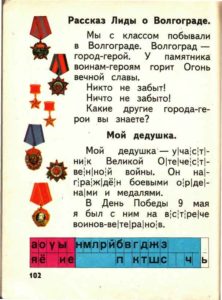 I want to pause and let you take a look at three pages from the 1987 edition of Bukvar.
I want to pause and let you take a look at three pages from the 1987 edition of Bukvar.
After the USSR fell apart, any mention of the Soviet Union, and its achievements and morals were surgically removed from the subsequent editions of Bukvar, including those, that should have stayed put, like these pages, praising works, the first space flight and remembrance of the Great Patriotic War.
All about genders
I have earlier given a more general rule describing how to distinguish between feminine, masculine and neuter nouns in Russian. That rule covered about 90% of all the cases, but omitted one important category of nouns and a few exceptions. Let us take a look at a more all-encompassing set of rules (Sources here and here).
Neuter:
This is the most clear-cut category. All nouns ending in “-о” or “-е” are neuter. There is only one exception: coffee, “ко́фе”, which for historic reasons is masculine. See a note on that below.
Masculine:
The general rule is that all the nouns ending with a consonant will be masculine.
Certain words describing male family members will end in “-а” / “-я”, but are still masculine: папа, дядя, дедушка.
Certain categories of nouns ending in a soft sign “ь”. These will be the words ending with:
- -арь – E.g.: врата́рь, календа́рь. (Exceptions: гарь, марь, у́тварь – these are feminine)
- -тель – E.g.: учи́тель, выключа́тель. (Exceptions: арте́ль, каните́ль, посте́ль – these are feminine)
- All names of the months – E.g.: апрель, июнь
- The exception words: тесть, го́лубь, ле́бедь, дождь, гвоздь, гость
Feminine:
In general, nouns ending in “-а” or “-я” are feminine
Certain categories of nouns ending in a soft sign “ь”. These will be the words ending with:
- -чь, -шь, -щь – E.g.: ночь, мышь, вещь
- -ость – these words are derived from adjectives, e.g.: сухо́й – су́хость, мя́гкий – мя́гкость. (Exception: гость – masculine)
- -бь, -вь, -дь, -зь, -сь, -ть – E.g.: любо́вь, тетра́дь. (Exception: тесть (masculine family member), го́лубь, ле́бедь, дождь, гвоздь)
Need to be memorised:
Words ending with the following can be either masculine or feminine, and have to be memorised:
- -нь – E.g.: лень (feminine), пень (masculine)
- -ль – E.g.: то́поль (masculine), пыль (feminine)
- -рь – E.g.: гарь (feminine), ле́карь (masculine)
As adjectives and verbs in the past tense agree with the nouns in gender, if you are reading a text, you can use this to your advantage. If you are uncertain about the gender of a certain noun, check its surrounding context.
A helpful test. If a noun has a diminutive form, it can be used to test the gender of a noun ending in a soft sign. If the diminutive ending is “-ёк” – the noun is masculine. If the ending is “-ка” – it is feminine. For example: “день” – “денёк” -> masculine ; “пыль – “пыли́нка” -> feminine. The exception (where would we be without them) is the word “тень” (feminine “shadow”) which has a masculine diminutive form “тенёк”, indicating that the word changed its gender over time.
For the “need to be memorised” category there is a loose memory aid that sometimes works: nouns that describe abstract concepts or innumerable objects are more likely to be feminine, while specific objects tend to be masculine. This is not a rule, but a guideline, so use it with caution.
There is, as always, a historical reason for this seeming chaos. Originally, all the words ending with the soft sign were feminine, while the words ending with the hard sign – masculine. With time and numerous reforms, the writing of certain words changed. For example the word “реме́нь” – a belt, was once written as “ре́менъ” (note the difference in the stress and the trailing hard sign). Incidentally, it was in this form the word became loaned in the Germanic and, by extension, the Scandinavian languages.
A note on coffee
The word came to Russian in 1724 with the sailors and its original form was “ко́фий”, which perfectly fits the rule of the masculine nouns ending with a consonant. Later on the word transformed into “ко́фей”, and then “ко́фе”, while its gender stayed the same. In modern Russian, the traces “ко́фей” can be found in the “coffee pot”: “кофе́йник”. The test with the diminutive form of “coffee”: “кофеёк” also points to the masculine gender of the noun.
Day 27: “Х х”
Today’s consonant may confuse you at first because of its resemblance to a certain Latin character. It is “Х х“, and is pronounced as “h” in “help”, “he”, “hold”.
A special mention about the “kh” notation used in the Western literature to represent this sound. The reason why I do not like the “kh” notation for the Russian “h” sound is because “k” implies a glottal stop at the start of the sound (the airflow is blocked by briefly pressing the tongue against the roof of the mouth), while in the Russian “h” the airflow is open.
There is only one word in Russian where I can think of such a glottal stop, and then it is actually written with “kh”: вакхана́лия – bacchanal, which is a loan word from Greek. Incidentally the related god’s name, Bacchus is pronounced and written in Russian without the glottal stop “k”: Ба́хус (Bahus).
So, if you see “Херсо́н” written as “Kherson” in some publication, ignore that “k” entirely, and start reading from the “h”, otherwise you’ll sound like a foreigner.
Back to the page at hand, the phonetic templates correspond to the words:
“пас-ту́х” – the singular masculine noun “а shepherd”, with a hard “х” sound as in “hold”.
“пас-тухи́” – the plural of the above, with “х” sounding soft as in “he”.
Note that “хы” syllable will never appear in the native Russian words.
The story is about “хлеборо́бы” – the grain farmers – and the intensive work they do. The word is a compound one, consisting of “хлеб” – bread, and “роб” – a root with the meaning “to work”, bound by the “-о-” particle. You’ve seen it in the Czech-derived word “robot”.
Below the карава́й (Russian formed bread), is a saying. Can you understand it?
On this page there is a fairy tale known to every Russian kid. The only word that uses our new character is “уходи́ла” – a past imperfect (continuous) feminine verb “she was going away” / “she was leaving”. The infinitive form is “уходи́ть” – “to leave”.
A rhyme about the first snow and a cat on this page, with a couple of words with our new letter. There were originally fewer pages for this letter, but what with the removal of the pages for letter “й”, that I mentioned above, more pages with some stories were added to letter “х” to keep the overall length of the book the same.
More stories, one with some folk wisdom, and another of a humorous kind. Can you understand them. You may need to think like an enthusiastic first-grader for the sake of the second story.
And finally, our new letter “Х х” in the systematic table, in the voiceless row.
The handwriting exercises 65-69 are in the second template on pages 23-28. There are some sayings and some logical exercises among them. For example, exercise 68 prompts you to write antonyms of the provided words.
Day 28: “Ю ю”
Today we will learn another vowel, the last of the four Russian syllabemas that acts as an indivisible syllable in certain cases. The letter is “Ю ю“, and is pronounced roughly as the English word “you”. In Latin transliteration you will see it written down as “ju” or “yu”. As was the case with “е, я, ё”, this new letter also behaves differently, depending on its position in the word. In the beginning of a word, and after another vowels it will act as a syllabema.
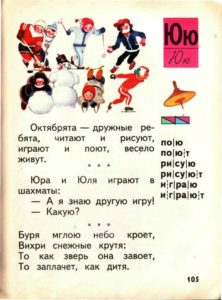
Take a look at the phonetic template for the word depicting a children’s toy:
“ю-ла́” – “a whirligig”, note that “ю” takes up the space of a syllable, corresponding to the sounds “й” and “у”.
A note: the first triangle should have been green as “й” is considered to be a soft sound! And sure engough, that is how the phonetic template appeared in the 1987 edition of Букварь. Additionally, there was no lullaby there, but a text about how much fun the kids of the Октябрёнок movement (Октября́та) have.
The other words on the page are
по-ю́ – “I am singing” / “I sing”
по-ю́т – “They are singing” / “They sing”
ри-су́-ю – “I am drawing” / “I draw”
ри-су́-ют – “They are drawing” / “They draw”
иг-ра́-ю – “I am playing” / “I play”
иг-ра́-ют – “They are playing” / “They play”
As you can see from the patterns above, letter “ю” comes in handy when conjugating the verbs into these two forms.
The first rhyme is a lullaby. It is more commonly known in another form:
Ба́ю, ба́юшки, баю́,
Не ложи́сь ты на краю́ –
Придёт се́ренький волчо́к,
И уку́сит за бочо́к.
There are two diminutive nouns in this version of the rhyme. Can you see them?
The other story is about two board games. Pay attention to how you read the name of one of the girls – Ю́ля (with the stress on “Ю“) vs. the name of that toy we saw above, “юла́”.
As was the case with the previous three syllabemas, when “ю” appears as part of a syllable, it softens the preceding consonant, while itself losing the “й”-sound. English does not have ant ready examples, so again think of how “l” is softened in the word “lee”, and then say “lute” retaining the softness of the “l”-sound. The “lu” in the Norwegian word “lus” is very close to how the syllable “лю” is pronounced.
The word in the phonetic template is:
“клю́ш-ка” – the hockey stick. Notice the green triangle, marking the softness of “л”.
The story with the puzzle is not difficult at all, especially with that hint of a picture. Make sure that you pronounce the new letter in the diminutive name “Андрю́ша” (from: “Андре́й”) correctly – with a soft “р” and no “й”-sound after it.
The writing exercises 70-71 are on pages 28-30 of the second writing template booklet.
As a humorous digression, here is a rock-rendition of the lullaby above in the “Musicians of Bremen” Soviet cartoon:
Day 29: “Ц ц”
Only a few letters left to go! Today’s consonant is “Ц ц“. The sound it makes is best described by a consonant pair “ts” ot “tz”, where the “t” is not very strong. Think of how you say “let’s”, or the name of a hotel: “Ritz”. Another memory aid, if you are into culinary, is the Green sauce Ца́цики – Tsatsiki.
The word in the phonetic template is:
“куз-не́ц” – “a smith”. The square for the “з”-sound is marked with green as soft, and in this case, even though there are no obvious softeners of the consonant, it will, indeed, be pronounced as soft by most native speakers. In a way, the softening on the next consonant in “не” carries over to “з”.
“Ц” is considered to be always hard – there is no customary softening when the letter appears with the normally-softening vowels.
Of the syllable pairs, there are two that require special attention: “ци” and “цы”. The sound exactly the same. Here are some rules to remember when to use what:
– “-цы” is the plural ending of the nouns ending on “ц”
– “цы” will appear in the following words, grouped into a mnemonic rhyme to make them easy to remember: “Цыга́н на цы́почках цыплёнку цы́кнул цыц!”
– in all other cases, write “ци”!
On this page there is a whole poem, dedicated to the letter “Ц“! Can you make the head and tail of it?
Afterwards, there are three sayings with folk wisdom (and letter “ц“) in them.
Here is out new letter “Ц ц” in the systematic table (and the previous letter “Ю ю”, as well). The story on this page is about man’s best friend – the dog.
The wring exercises 72-73 are on pages 30-32 of the second writing template. Pay attention to that little tail of the letter going below the baseline.
In the pre-1992 edition the main page of the letter looked different. The “poem” was only a couple of lines. But there was a very important story about stepping on the rakes and suddenly remembering the words. And the the story about “the man’s best friend” had more words with “ц” in it.
Day 30: “Э э”
Последняя гласная Букваря́! The last vowel of Bukvar! The sound “Э э” makes is similar to “ea” in the English word “bread”.
It is used in those cases, when you don’t want the softening effect of the syllabema of “е”.
Now you know all the pure vowels that have corresponding syllabemas:
“А” – “Я”
“Э” – “Е”
“О” – “Ё”
“У” – “Ю”
The word that corresponds to the phonetic template is:
“э́-хо” – “an echo”
The the story invites you to play a game with “э́хо”
Do you know the answer to the question after the story?
I would suggest practising with the following words to nail the difference between “е”, “э” and “ё”:
пое́ст – поэ́т – поёт (Here there should be no “й”-sound in the second word). Listen to how Yandex Translate speaks these words.
Another word pair to practice the difference between “э” and “е” is:
метр – мэтр
Again, listen to Yandex Translate vocalising these two words.
You can practice writing this letter with the exercises 74-75 on pages 32-34
Among the exercises, there is one for a very useful word that uses “э“: “this”, which changes depending on the gender or number of the noun that it describes:
Э́тот – masculine “this” (in Norwegian: “denne”; in Spanish: “este)
Э́та – feminine “this” (in Norwegian: “denne”; in Spanish: “esta”)
Э́то – neuter “this” (in Norwegian: “dette”) Note: “это” can also mean a general “it”.
Э́ти – plural “these” (in Norwegian: “disse”; in Spanish: “estas”)
Try to match each version of “this” with the correct corresponding noun, by actually writing in the noun into the provided space.
Here we can see “Э э” in the systematic table, completing the vowel set.
There is also a fun little rhyme. Can you name all the animals in it?
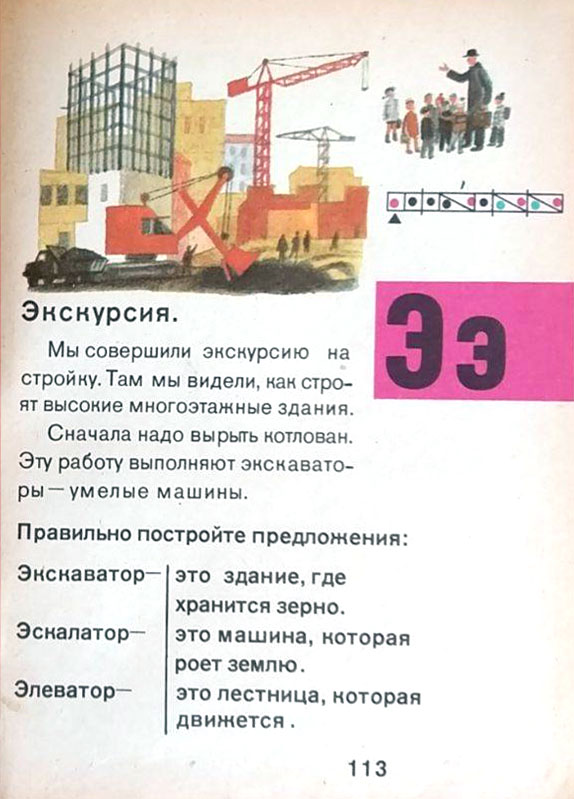 In the 1983 edition of Букварь, letter “э” was accompanied by a more relevant story that made good use of the new letter. It was followed by a task, asking the pupils to match the names of the technical objects (that started with the letter “э“) with their functons. Here are these objects with the stress sylable marked for you: “экскава́тор”, “эскала́тор”, “элева́тор”.
In the 1983 edition of Букварь, letter “э” was accompanied by a more relevant story that made good use of the new letter. It was followed by a task, asking the pupils to match the names of the technical objects (that started with the letter “э“) with their functons. Here are these objects with the stress sylable marked for you: “экскава́тор”, “эскала́тор”, “элева́тор”.
And speaking of э́хо, there is a fun Armenian animated film about a peculiar monster-like magical creature “Эх”. “Эх” is an exclamation similar to the English “Oh” or the Norwegian “Uff”. You will hear a lot of “Э” in this cartoon!
Day 31: “Щ щ”
It is a bit unfair that today’s consonant “Щ щ” only gets one страница in Букварь. Apart from being the widest character in the Russian азбука, it has a few other interesting properties. This letter is the soft counterpart of the “Ш ш” consonant that we learned earlier. In fact, “ш – щ” is the only consonant pair of sounds, where the softness is encoded in a dedicated character. The closest English equivalent is the opening sound in “she”, though try to make it sound a little softer still. “Щ” has no voiced counterpart in Russian.
The word is the phonetic template is:
“лещ” – “a bream” (fish). This noun is masculine, and as you can see from the template, both consonants sound soft.
The syllable list shows which vowels letter “щ” appears with. Note the rule at the bottom of the page: “ща” and “щу” are always written with “а” and “у”! You will never see those syllables written with “я” and “ю”.
Take some time to read the words in bold:
щу́-ки – plural “pikes” (fish)
ле-щи́ – plural “breams” (fish)
ро́-ща – “a grove”
ча́-ща – “a thicket”, “a dense forest”
ще-го́л – “a goldfinch”
ще-но́к – “a puppy”
и-щу́ – “I am looking for something/somebody”
чи́-щу – “I am cleaning something”
You can read the short story “Ле́том” – “Summertime” and find all the words with “щ” in them.
The lesson is concluded with a mild tongue-twister rhyme about the breams and their habitat.
The writing exercises 77-79 on pages 35-39 offer not only handwriting practice, but also a review into the syllable rules that apply to both “ч” and “щ“!
Day 32: “Ф ф”
The last consonant (but not the letter) in Буква́рь is “Ф ф“. It corresponds to the lating letter “f” in “fee”, “full”, “fast”, and “ph” in “phonetic. In Russian this letter appears in the loan words, mainly coming from Greek, either directly or in a round-about way.
The softening rule that you know so well by now, applies to “ф” as well. The words in the phonetic template are:
“фла-жо́к” – a small flag
“фи́-ниш” – finish
The story on this page teaches empathy…
Let’s place out final voiceless consonant “Ф ф” into the systematic table, right under its voiced counterpart “в”. As you can see, there is only one more letter to go!
The story on this page is about the traffic light – “светофо́р”. The word in itself is interesting as it combines the Russian root “свет” (light) with the Greek-originating “фор” (φόρος), which in this case means something like “duty”. Both roots are bound together with the binding particle “-о-“. This particle can be found in a number of compound words in Russian, like “air plane” – “самолёт”. Can you see which roots it binds?
Leaf over to pages 39-42 in the second writing template to practice writing “ф” and review the other letters in the exercises 80-82.
Prefixes
Before we continue, we need to take a small lingustic digression about prefixes. In Russian they play an important role in word-creation, a role that should not be too unfamiliar from English.
Both “вз-” and “вс-” are prefixes that convey the same meaning of upward movement. The choice is the second letter spends on whether the consonant after the prefix is voiced, as in “взмыва́ет”, or voiceless, as in “вскипа́ет”.
There are many prefixes indicating direction, position, state. New words are formed by taking a root and applying a prefix to it. Let’s look at an example, the infinitive form of the transitive verb “to carry something” – “нести”:
внести́ – to carry in, to introduce something
вознести́ – to ascend something, to elevate
вы́нести – to take/carry out (an object) – pay attention to the stress falling on the prefix in this word!
поднести́ – to brig – to carry an object up to something/somebody
занести́ – to carry in, to note down
нанести́ – to apply something, to inflict
снести́ – to demolish, to carry something down (e.g.: the stairs), to lay an egg
унести́ – to take/carry away
перенести́ – to carry over, to transfer
You can see how the prefixes in these words approximately correspond to the English prepositions.
English has something similar that we don’t think about: to apply, to supply, to reply. Here the root is “to ply”, a word that sees only infrequent use.
Or: to transfer, to refer, to defer. Here the root is a word that no longer exists: “fer” (I suspect it is related to the Norwegian verb “å farte”: “to be on the move”, “to wander”)
In Russian there are also several words, where only the prefixed forms remain, with the original root no longer being used by itself. The infinitive form “нять” is archaic, meaning “to undertake something”, “to take”. In modern Russian all the words below treat the prefix as an inseparable part of the root.
заня́ть – to borrow, to engage
уня́ть – to calm down somebody
приня́ть – to accept
отня́ть – to take away
поня́ть – to understand
подня́ть – to lift up
переня́ть – to adopt (a skill)
Day 33: “Ъ ъ”
Today we learn the last letter in Букварь. This letter is neither a vowel nor a consonant. It is called “the hard sign” and is written as “Ъ ъ“. It plays a modest role of a sound separator in the language, when you want to retain the hardness of a consonant that is followed by a softening vowel. In modern Russian it is mostly used after the prefixes that ends with a consonant and a root that starts with a syllabema, but also when concatenating compound words, and in some loan words.
Some historical trivia: Before the 1918 reform the hard sign appeared at the end of all words ending with a consonant consuming a lot of extra space when it came to typography. In Bulgarian, “ъ” has a sound associated with it, while in Russian this letter only has the role of a sign.
But back to the role of the phonetic separator. As you can see, we also get a re-acquaintance with the “soft sign” – “ь” on this page. If you remember the lesson concerning letter “Е”, I wrote there:
The letter will produce this “je” sound:
1. when a word starts with it, or
2. when it follows another vowel, or
3. when it comes after a hard of soft sign (we will cover them later in the course).
And this is precisely what we are studying today.
Let’s look at the phonetic templates on this page. Note that due to a printing error, the triangles and squares that should have been green, turned out to be light-blue. In order to avoid confusion, I am adding a fragment of the page from the 1987 Букварь.
Soft sign “ь”:
“ли́с-тья” – plural noun “leaves”. Here “т” is softened by the separating “ь”, while “я” is pronounced as as syllabema [йа]. Note also how “с” becomes soft, even though there is no obvious softening of it. It’s a case of “articulation laziness” when we take shortcuts when making sounds – in both the preceding “и” and the following soft “т” the tongue is located at the front, and moving it back for a hard “с” is a bit inconvenient. That said, if you pronounce the “с” as hard, that would not be a mistake.
Hard sign “Ъ”:
“съел” – a transitive verb, conjugated as “he has eaten something”. The “с” is pronounced semi-soft.
Let’s look at the words in bold at the top of the page.
The usage of soft sign is exemplified by a few word groups:
лист – ли́стья — a leaf – leaves
де́рево – дере́вья — a tree – trees
лей – льют – льёт — imperative verb “pour” – plural third person “they are pouring” – singular third person “he/she/it is pouring”
пей – пью – пьёт — imperative verb “drink” – singular first person “I drink / am drinking” – singular third person “he/she/it drinks / is drinking”
In all of these cases, pay attention to how the vowel after the soft sign is pronounced – it should be soft!
I wrote above that the hard sign separates the prefixes in certain cases. Let’s look at a few such words:
е́хал – he was driving / he drove
съе́хал – he drove off (a ramp, for example)
въе́хал – he drove in/into (a garage)
подъе́хал – he drove up (to an entrance)
Listen to the pair “сел, съел” using Yandex Translate.
Now you can read a short story with an important moral to it!
Can you give the answers to the two puzzles at the bottom of the page?
The final writing exercise 83 on pages 43 of the second writing template will let you practise both “ъ” and “ь” in this new role.
Day 34
Let’s move on to some reading exercises that conclude Букварь.
The children studied the whole of the alphabet over the autumn half of the first year, so by the time this page appeared in the curriculum, it was December with the first snow and the games that this month brings along. You should be able to read the short saying in bold at the top of the page.
This is followed by 8 pages that introduced several Russian writers and poets – those already known to the children – with some short snippets of their works.
Try to read them, using automatic image translation for the reference. Use your new-found Cyrillic writing skills to type in the names of the authors and their works to find more information about them.
The next reading pages of Букварь are best viewed as a contrast between the 1987 and the 1996 editions – some aspects of the book were removed after the 1992 “revolution” and collapse of the USSR.
The text with the message of freindship and peace among the children of the whole worlds became replaced by the introduction of one more author, Agnia Barto.
Then came the page with a poem about Азбука, the 33 keys that open up the doors to many book.
In the 1996 edition this poem was moved to the end, while here it became replaced by a verse by Константи́н Льдов “Master Beetle, the Teacher”, written in 1886. The children are asked to guess if this poem was contemporary or written a long time ago.
The 1987 edition rounded off with a fragment of a story about Lenin, written by his wife, Krupskaja; and the first verses of the anthem of the USSR.
The 1996 edition concludes with the poem about the 33 keys-letters. It further invites the pupils to take a look at the alphabetically ordered letters and think of what images the pupil can associate with them.
The 1983 edition of Буква́рь had an additional cover fold-out with the handwritten version of А́збука.
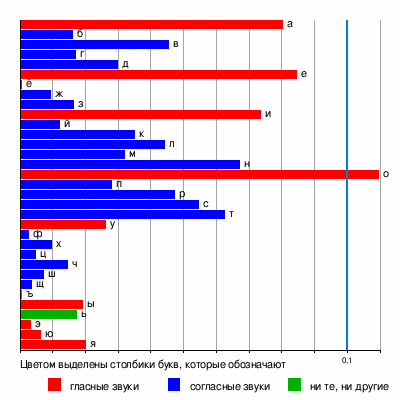 This alphabetic ordering appeared in all editions of Букварь as a reference, though the letters themselves are taught in the order that closely follows the frequency with which the letters appear in the language, with some adjustments to give the vowels a higher priority.
This alphabetic ordering appeared in all editions of Букварь as a reference, though the letters themselves are taught in the order that closely follows the frequency with which the letters appear in the language, with some adjustments to give the vowels a higher priority.
Or as the covers of the 1983 edition looked, from “А” до “Я”…
One last reading exercise for extra credit is the children’s rhyme by Korney Ivanovich Chukovsky – “The Stolen Sun”, a 1958 book that I scanned and translated some time ago.
A real course behoves a real test, but let’s keep it simple and fun! Below are two images.
The first one is written in the handwriting typeface, and is a semi-nonsensical sentence that uses many of the letters that we’ve learnt. Try to recognise them and type them out. You can then use automatic translation to see if you managed to get the words right.
The second test is a little memory-aid that children use to remember a certain natural phenomenon. Here a variety of typefaces is used to make it more challenging. First, try to decipher and write out then sentence. And then see if you manage to find what this memory-aid is used for.
The answer to the first image is “До́блестный Лету́чий голла́ндец отда́л шварто́вы у мы́са жела́ний.”
As for the second image, here is a hint:
The anster is: “Ка́ждый охо́тник жела́ет знать где сиди́т фаза́н” and it encodes the colours of the rainbow in the first letters of each word: “Кра́сный, ора́нжевый, жёлтый, зелёный, голубо́й, си́ний, фиоле́товый”.
Some grammar notes
What remains, is the whole ocean of grammar, that was not in the scope of Букварь, and that we only touched upon ever so slightly in the context of certain letters.
Grammatical cases of the nouns
Grammatical cases (and in a wider sense, declensions) have been mentioned on many occasions. In Russian, nouns and their corresponding full adjectives change case depending on the role they play in the sentence. The following article on Wikipedia in English covers it very well: Russian declensions. In addition, an article in Russian on the prepositional case, contains a good table of all cases: which control questions they answer, which control words they have, their corresponding prepositions (there are overlaps) and how the ending on the nouns changes.
An overview note on the cases…
Each case is associated with specific roles a noun (and adjective) can have in a sentence. In many cases you can deduce the case from the preposition, but there are also cases, when the only change is in the ending of a noun (and adjective).
Let’s look at the feminine singular word “rose” in a few sentences.
Nominative:
Ро́за растёт – A rose is growing – En rose gror. Here “a/the rose” is the subject of the sentence.
Genitive:
Он сиди́т у ро́зы. – He sits by the rose – Han sitter ved rosen.
Не ви́дно ро́зы. – The rose can’t be seen – Rosen er ikke til å se.
This case is often used in the negative context, but also with certain prepositions.
Accusative:
Положи́ се́тку на ро́зу – Put the net on the rose – Legg nettet på rosen
Он полива́ет ро́зу – He waters/is watering the rose – Han vanner rosen
Here the rose is the object of an action. In addition, “the net” in the first sentence is also an object of an action, so it is also written in the accusative case.
A curious side case: in a negativ sentence, accusative and genitivе can seem interchangeable, with some difference in meaning:
Genitive: Он не ви́дел ро́зы – He didn’t see a rose (and there was probably no rose to see there at all) – Han så ikke en rose (og det var, kanskje, ingen rose å se)
Accusative: Он не ви́дел ро́зу – He didn’t see the rose (but the rose was there) – Han så ikke rosen (men det var en rose der)
Dative (as the Russian name suggests, Дательный, from the verb давать – to give):
По ро́зе полз жук – A beetle crawled on a rose – En bille krøp på rosen.
Он подли́л ро́зе воды́ – He poured some water to the rose – Han helte noe vann i rosen.
In both cases – with and without a preposition – the rose can be seen as a receiver of an action.
Instrumental:
Он укра́сил ро́зой ко́мнату / Он украсил комнату розой – He decorated the room with a rose – Han pyntet rommet med en rose
Here, the rose is the instrumental object that is used to perform an action (“by using the rose…”). Incidentally, “the room” is in the accusative case as the action is being performed on it.
Also notice that the word order does not matter as the cases indicate the roles of the words within a sentence. (For those familiar with Japanese, the particles there have a function similar to cases in Russian)
Prepositional:
На ро́зе сиде́ла оса́ – A wasp was sitting on a rose – En veps satt på rosen.
Он говори́л о ро́зе – He talked about the rose – Han snakket om rosen.
You may have noticed that for this particular group of words that “the rose” belongs to, the endings of the dative and the prepositional cases are the same.
Grammatical cases of the adjectives
Adjectives change in case in agreement with the gender and plurality of the noun they describe. Using “Чёрное море” (Black Sea) as an example. The noun “море” is neuter singular, so the adjective will take these forms:
nominative – чёрное
genitive – чёрного
dative – чёрному
accusative – чёрное
instrumental – чёрным
prepositional – о чёрном
The rules for the endings corresponding to each of the cases can be found in this article, and are really simple.
One, two, many…
Counting is an important skill. All languages have their quirks and historical legacy when it comes to counting, and Russian is no exception. Russian once had three grammatical numbers: singular, dual, and plural, and some vestiges of that system survive in the modern language despite Russian only using singular and plural numbers.
Let’s see at how we count the masculine noun “бана́н” – banana, neuter “я́блоко” – apple, and feminine “сли́ва” – plum up to 20. After 20 the counting resets and the 1 to 10 pattern repeats.
1: – the noun is in the nominative case, while the number changes in gender
1 – оди́н бана́н / одно́ я́блоко / одна́ сли́ва
2 – 4: – the nouns are in the old duality form, additionally, number 2 changes the ending to “-е” in the feminine gender.
2 – два бана́на / два я́блока / две сли́вы
3 – три бана́на / три я́блока / три сли́вы
4 – четы́ре бана́на / четы́ре я́блока / четы́ре сли́вы
5 – 20: – the nouns are in the counting case (it is not one of the six official cases that you’ve seen above!), though it largely coincides in form with the plural genitive case, and is treated as a special case of genitive in the modern Russian linguistics. The numbers remain unchanged.
5 – пять бана́нов / пять я́блок / пять сли́в
6 – -шесть бана́нов / шесть я́блок / шесть сли́в
7 – семь бана́нов / семь я́блок / семь сли́в
8 – во́семь бана́нов / во́семь я́блок / восемь сли́в
9 – де́вять бана́нов / де́вять я́блок / девять сли́в
10 – де́сять бана́нов / де́сять я́блок / десять сли́в
11 – оди́ннадцать бана́нов / оди́ннадцать я́блок / оди́ннадцать сли́в
12 – двена́дцать бана́нов / двена́дцать я́блок / двена́дцать сли́в
13 – трина́дцать бана́нов / трина́дцать я́блок / трина́дцать сли́в
14 – четы́рнадцать бана́нов / четы́рнадцать я́блок / четы́рнадцать сли́в
15 – пятна́дцать бана́нов / пятна́дцать я́блок / пятна́дцать сли́в
16 – шестна́дцать бана́нов / шестна́дцать я́блок / шестна́дцать сли́в
17 – семна́дцать бана́нов / семна́дцать я́блок / семна́дцать сли́в
18 – восемна́дцать бана́нов / восемна́дцать я́блок / восемна́дцать сли́в
19 – девятна́дцать бана́нов / девятна́дцать я́блок / девятна́дцать сли́в
20 – два́дцать бана́нов / два́дцать я́блок / два́дцать сли́в
21:
21 – два́дцать оди́н бана́н / два́дцать одно́ я́блоко / два́дцать одна́ сли́ва
…
If you look closely, you will see a pattern in how numbers 11 – 19 are formed. Let’s look at 11 as an example: один – на – дцать, which is basically “one-on-top-of-ten”, where “дцать” is a contracted form of “десять” if you speak the word quickly, dropping the first vowel “е” and compressing “я” to “а”.
The round numbers are a bit special, though there is also a certain ten-based pattern in them:
20 – 100:
20 – два́дцать – 2x “дцать”
30 – три́дцать – 3x “дцать”
40 – со́рок – Most likely, stemming from counting of the pelts in a binding (Source), alternatively as an age limit (срок), as people seldom lived to be 40.
50 – пятьдеся́т – five tens (пять деся́тков)
60 – шестьдеся́т – six tens (шесть деся́тков)
70 – се́мьдесят – seven tens (семь деся́тков)
80 – во́семьдесят – eight tens (восемь деся́тков)
90 – девяно́сто – “nine stop” – an echo of the ancient 9-based counting system, where nine signified the end of a counting period and the start of a new one. (Source)
100 – сто – based on the root “st”, signifying the end, “stop”, appeared later (after the XIII century) after the switch to the 10-based system. (Source)
Full and short adjectives were mentioned with the linked article talking about the topic. In short, Russian has the concept of full and short adjectives, with the short adjectives describing a temporary state and almost exclusively acting as a predicate in a sentence.
Рабо́та трудна́, но выполни́ма – The (this particular) work is hard, but manageable. (when you are looking a a pile of bricks, about to start turning into a wall)
Рабо́та тру́дная, но выполни́мая – The work is hard, but manageable (in general, like “the work of a peasant”)
Я бо́лен – I am sick (calling in sick, got a flue)
Я больно́й – I am sick (having some lasting illness)
Some adjectives, like that for colours, do not have short forms.
Verbs change a lot, too, and here as well there is a system behind the madness. The following article in Russian explains this system of conjugations (спряже́ния) in brief. Here is the table from the article showing both the second and the first conjugation:
Imperative forms of the verbs is a separate topic and the linked article in Russian shows how the imperative forms are created for various groups of the verbs.
And finally, a small tid-bit that often acts as a litmus test of a native Russian speaker: the difference between мой и свой, that is – mine vs. my vs. own





